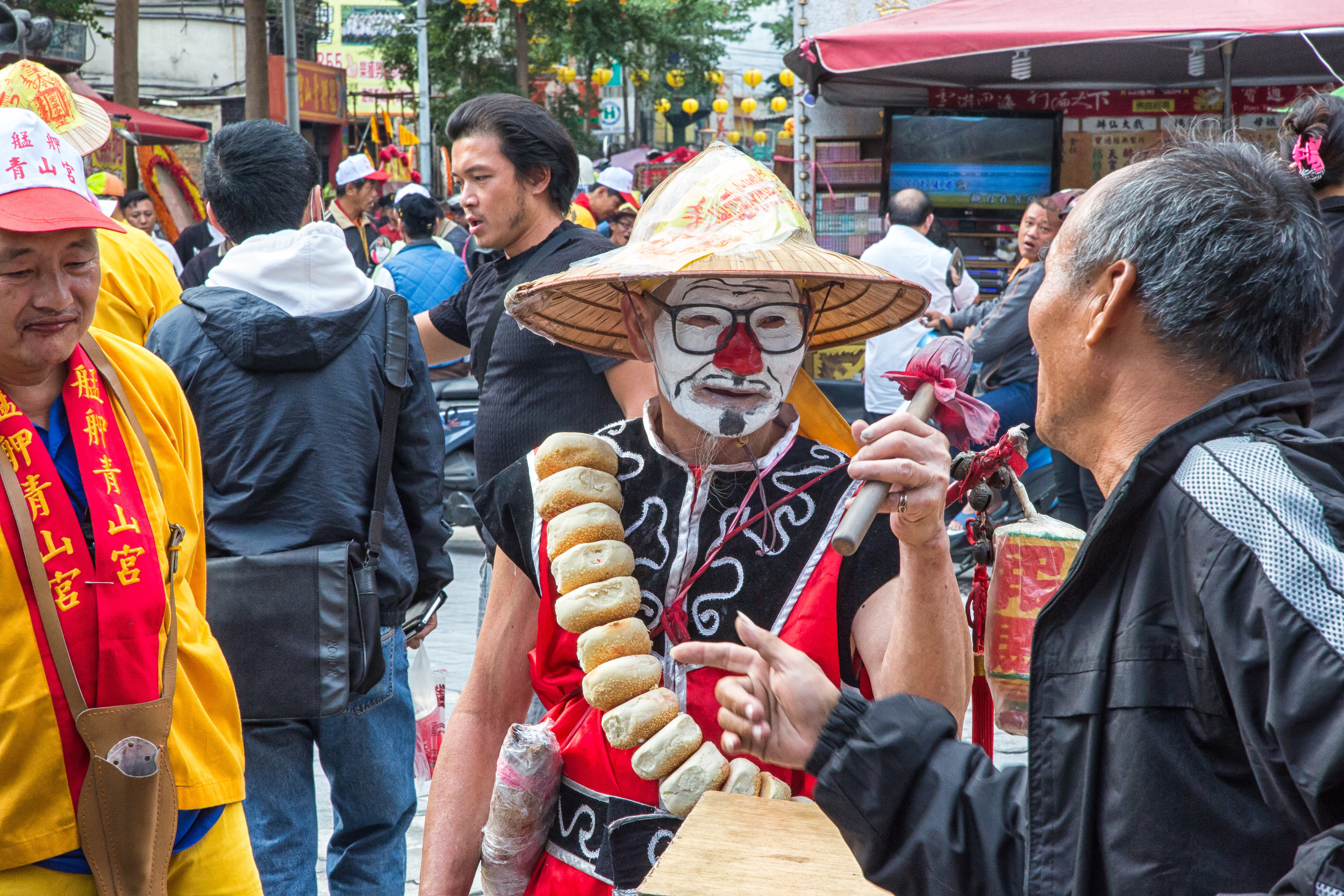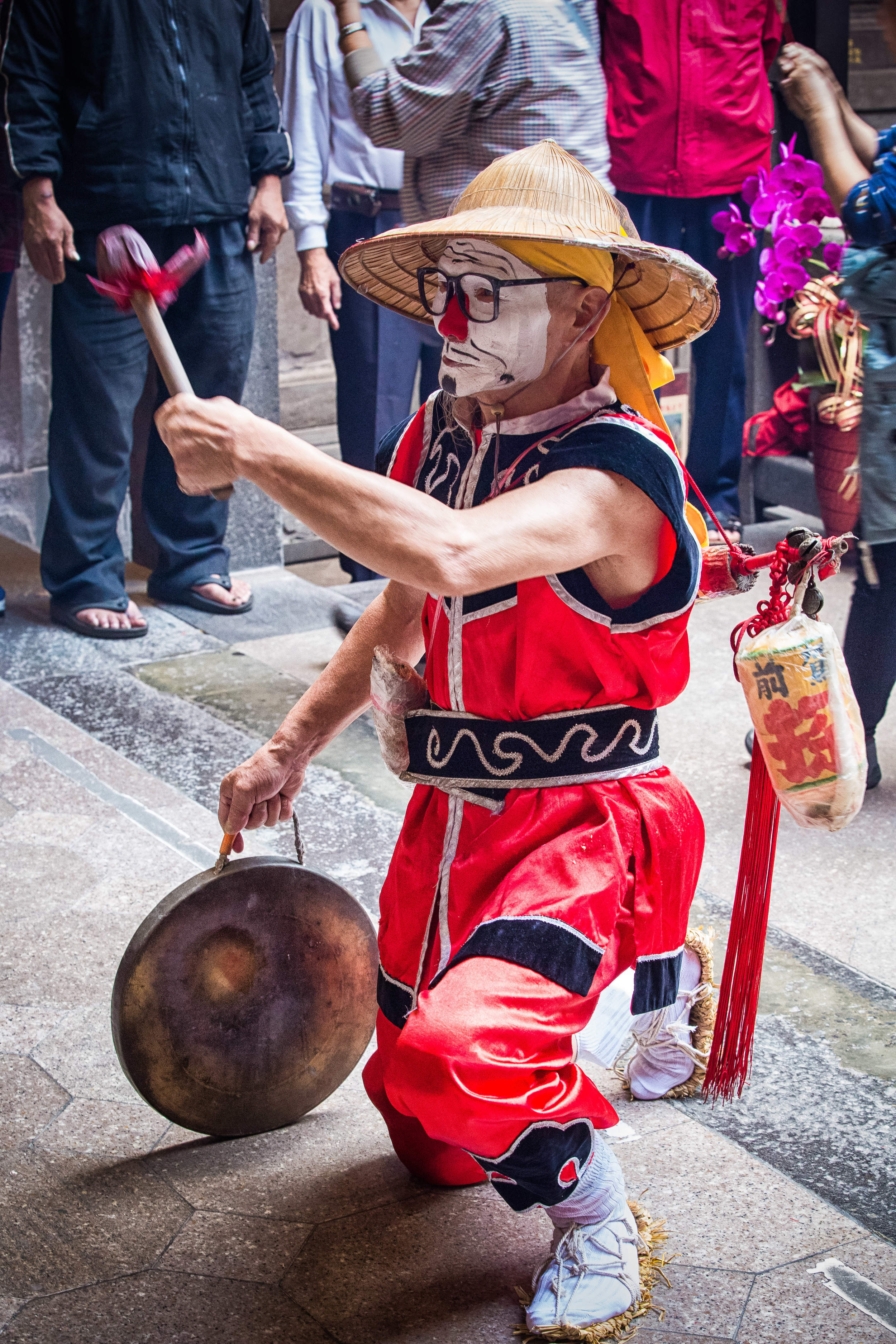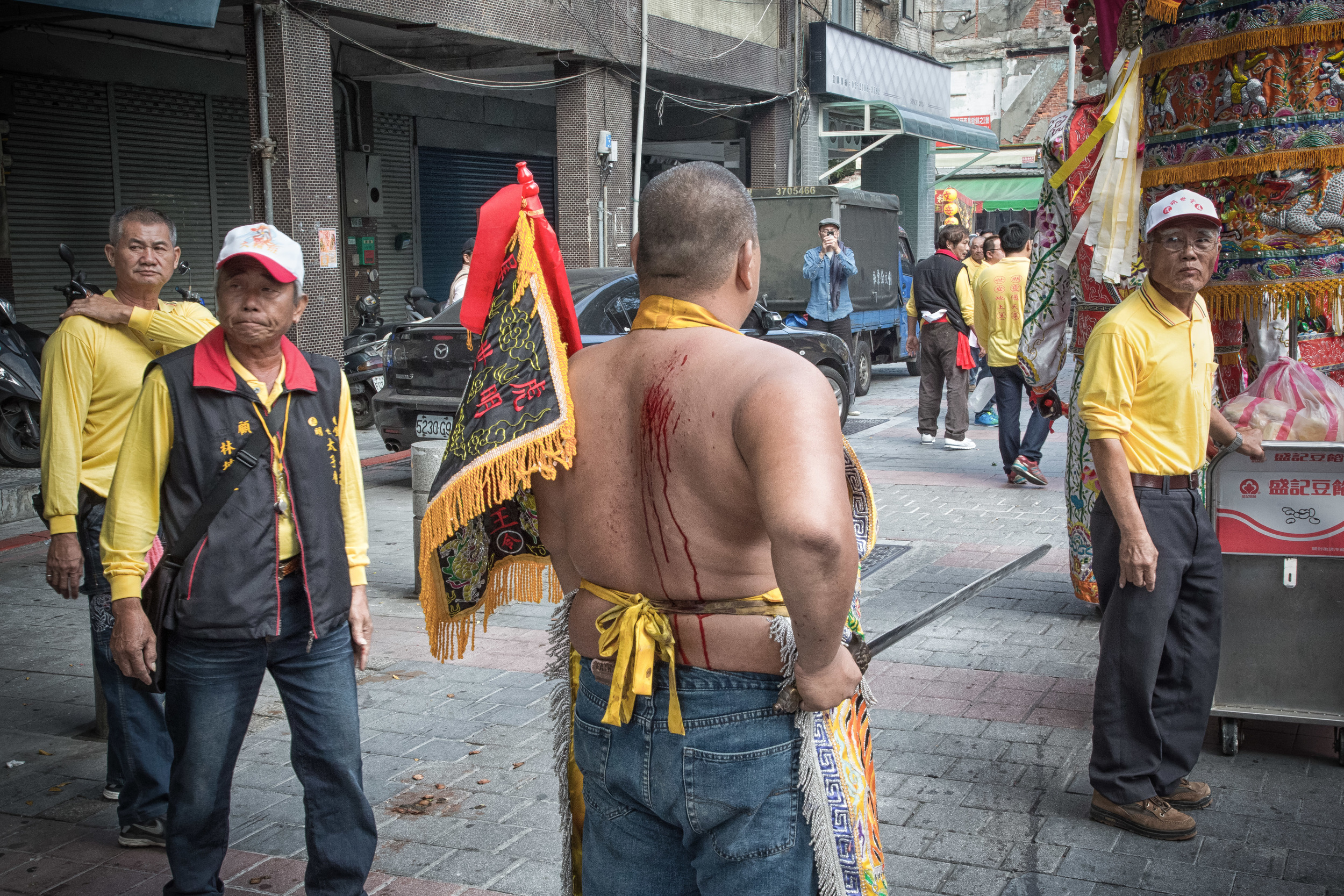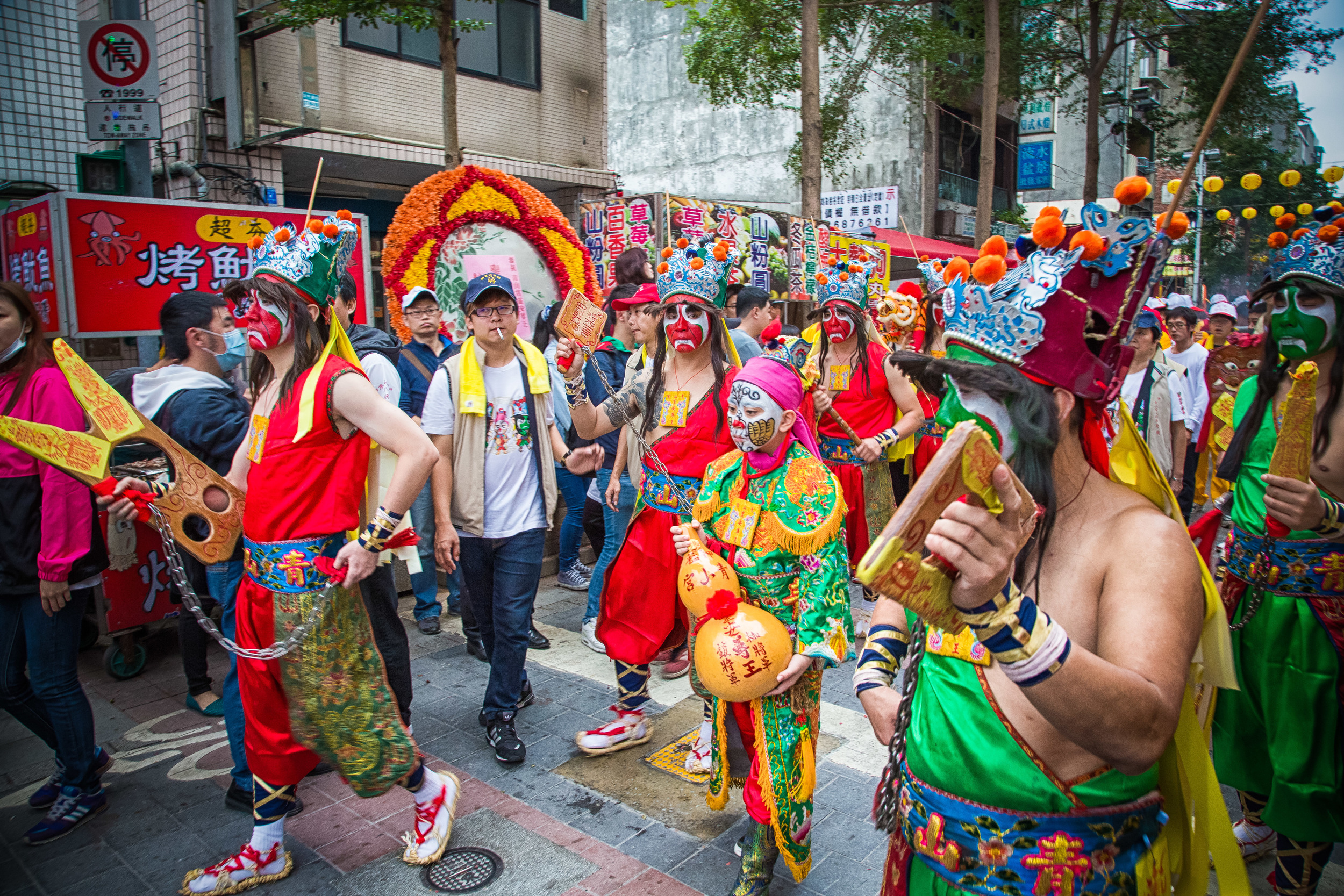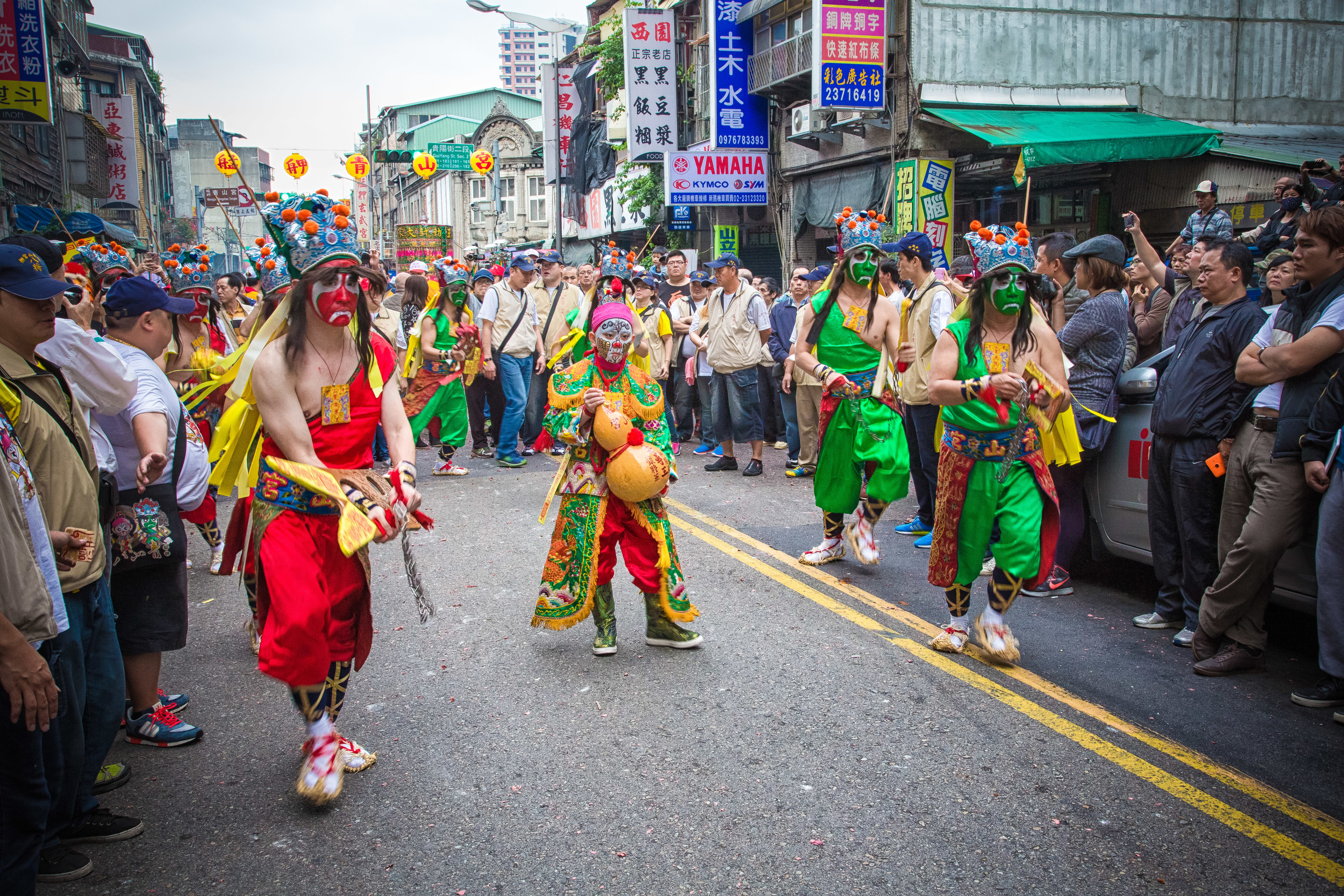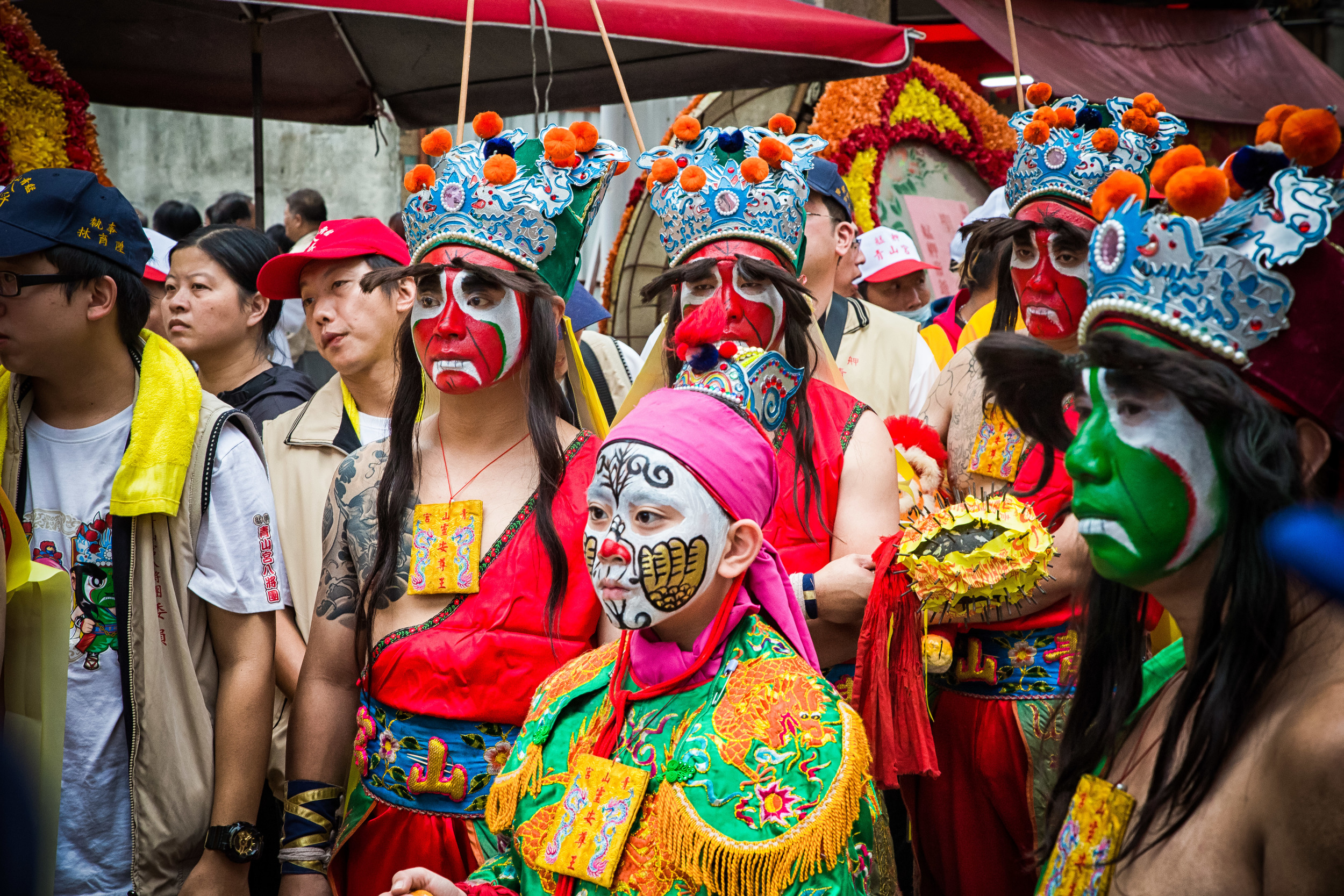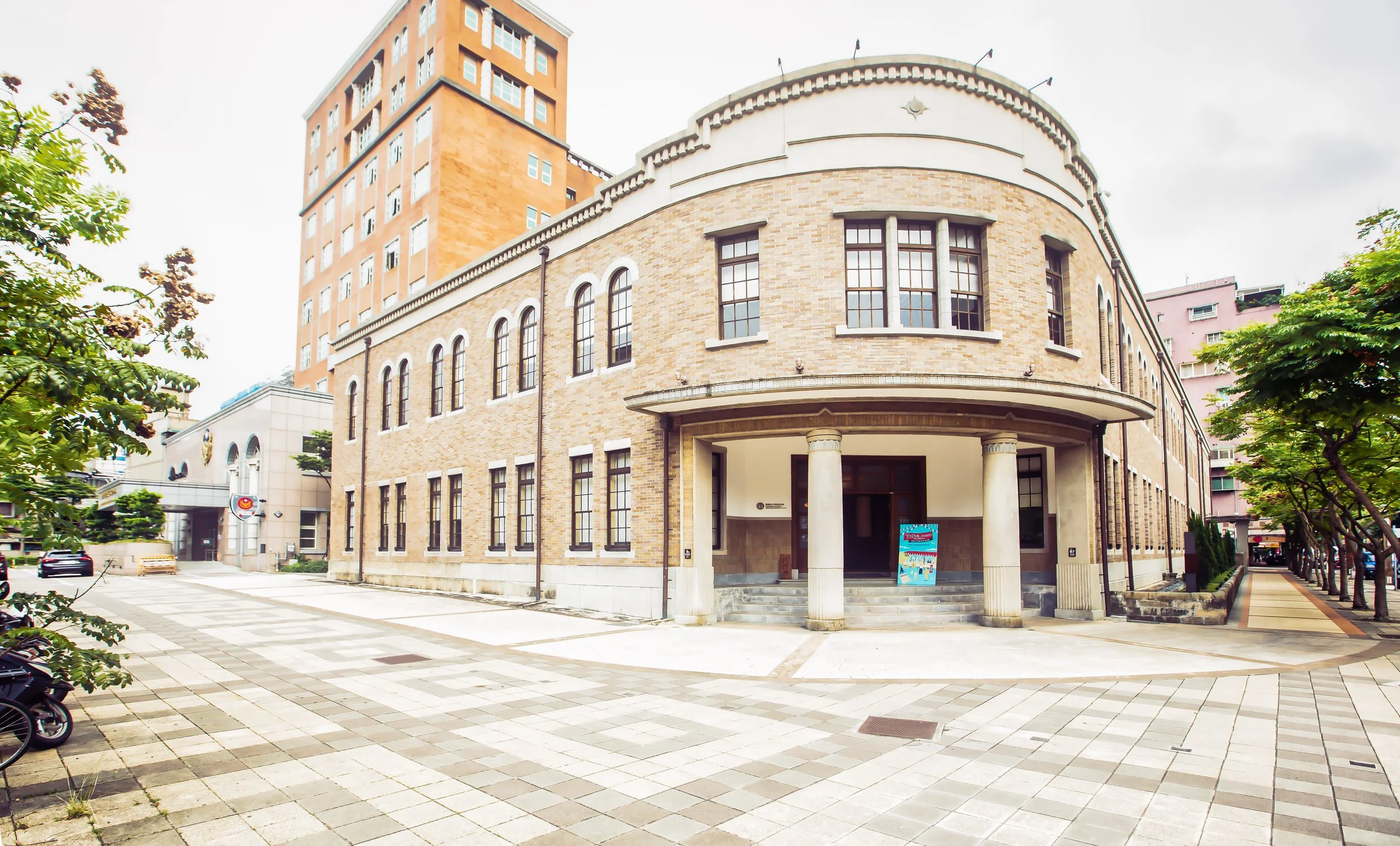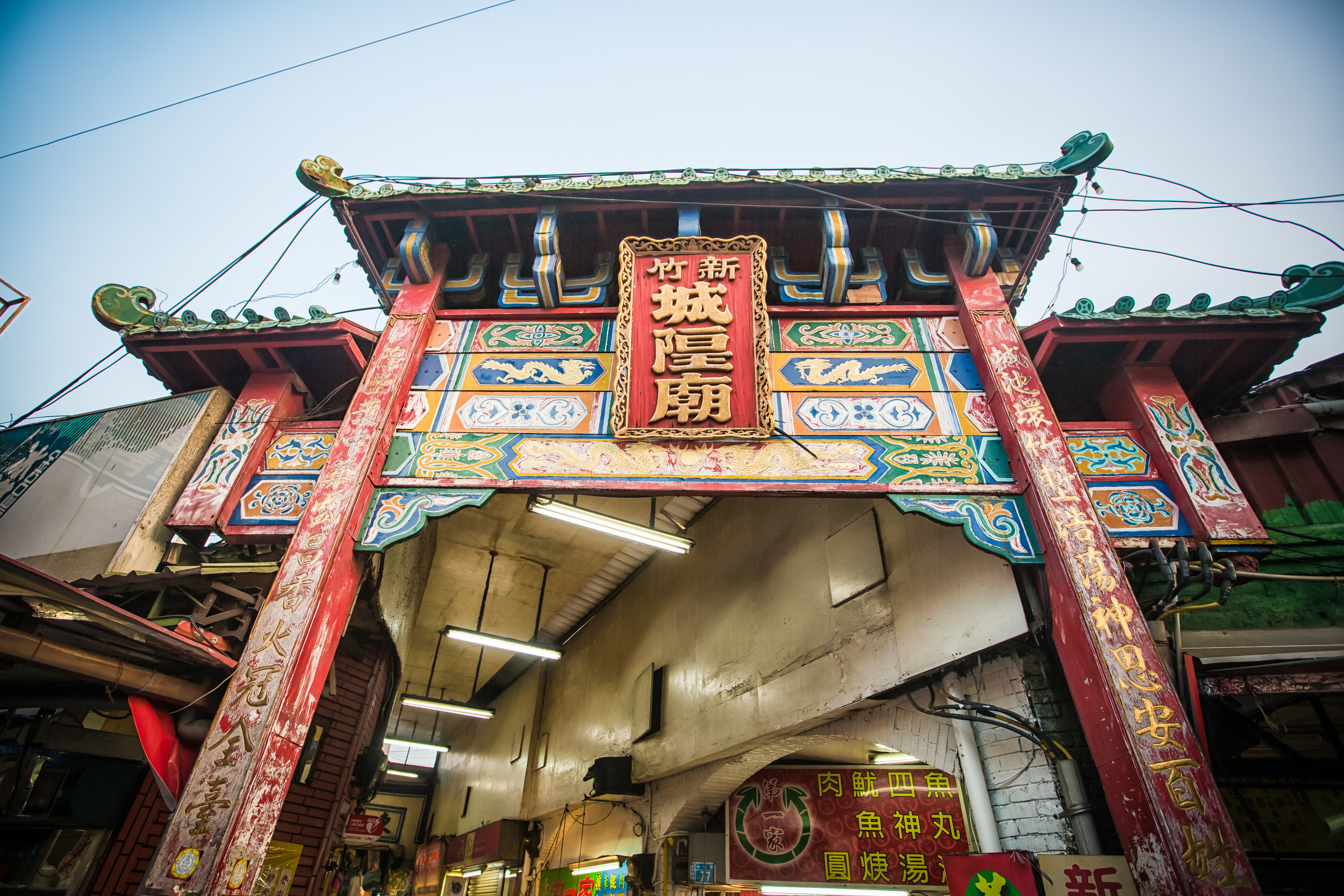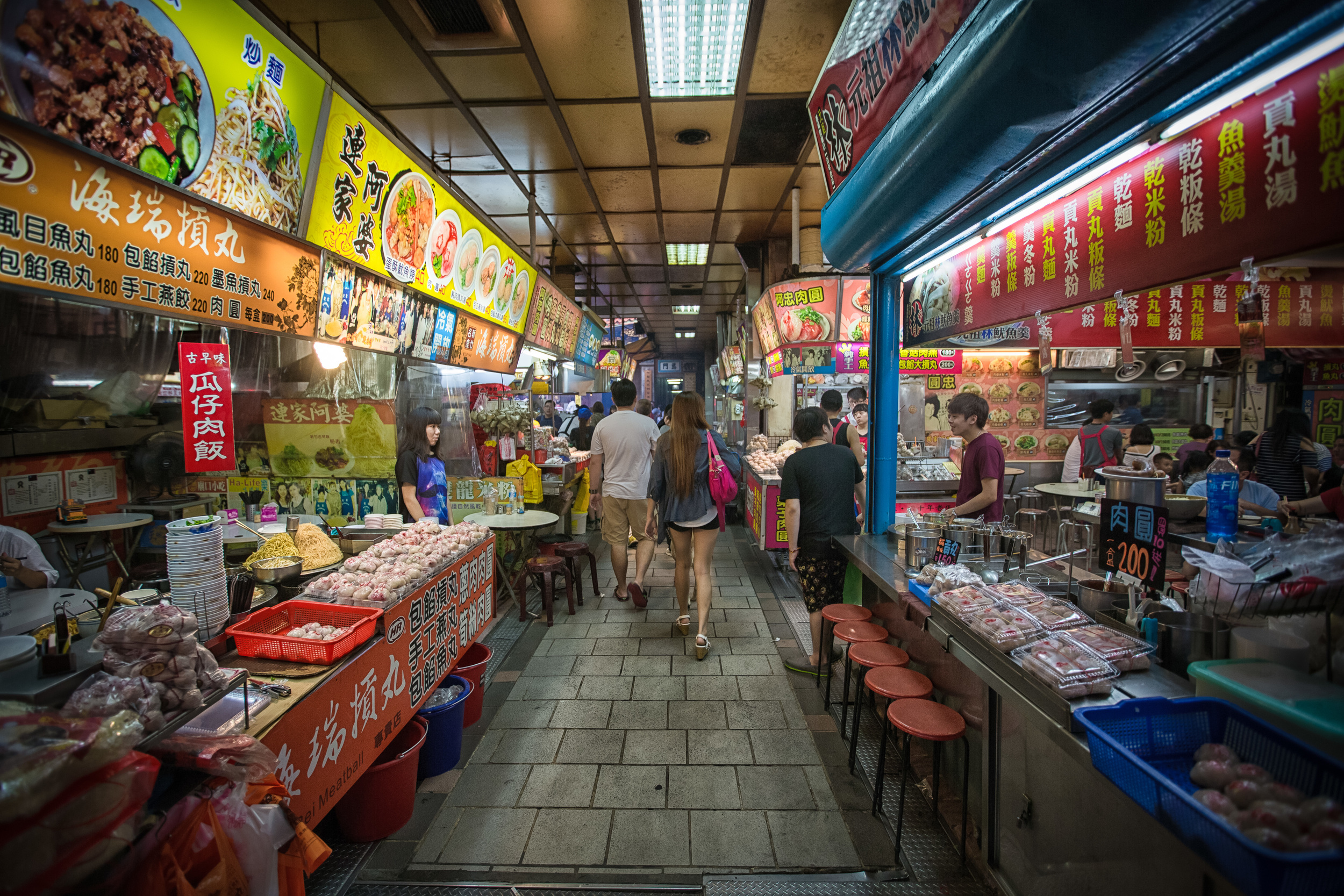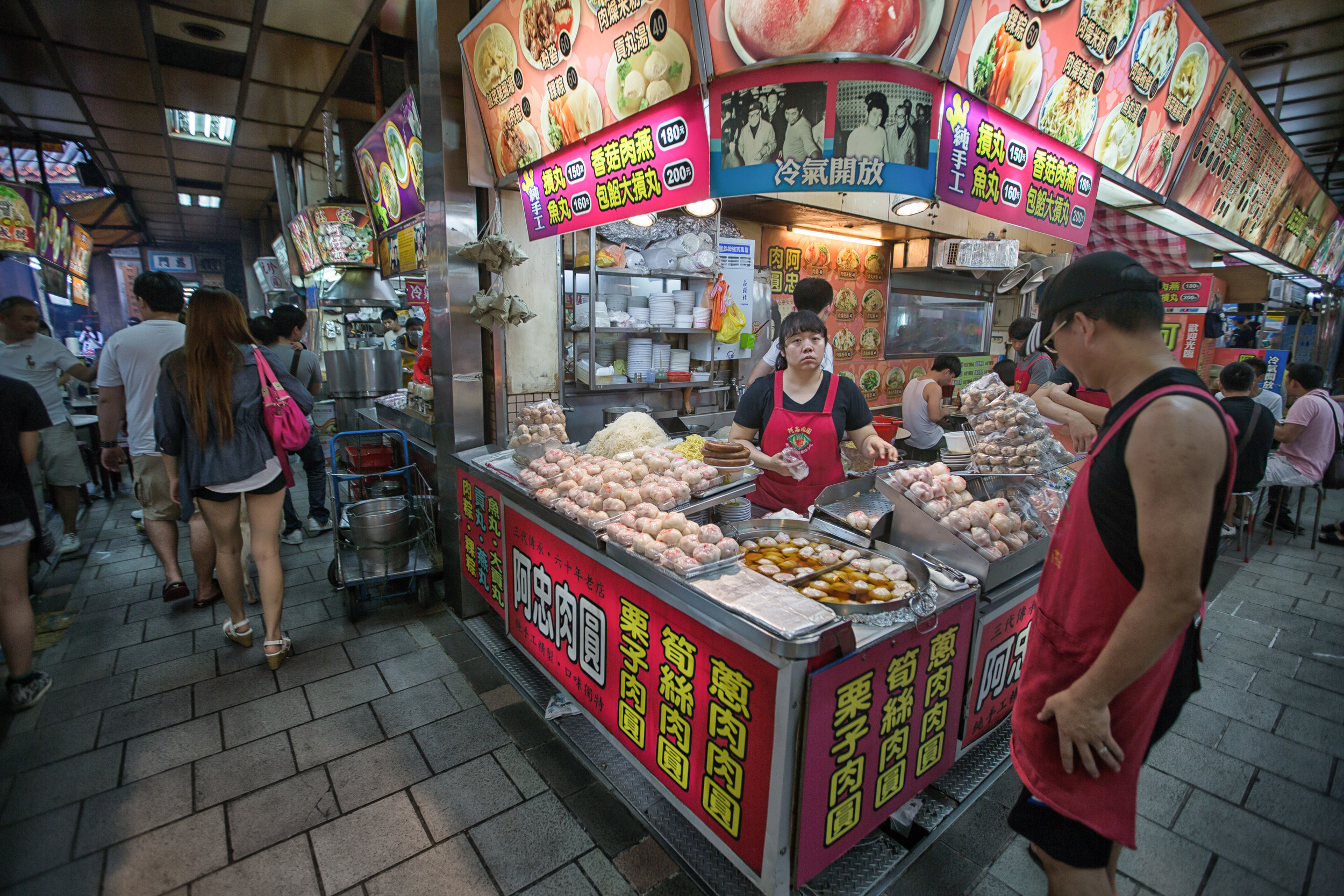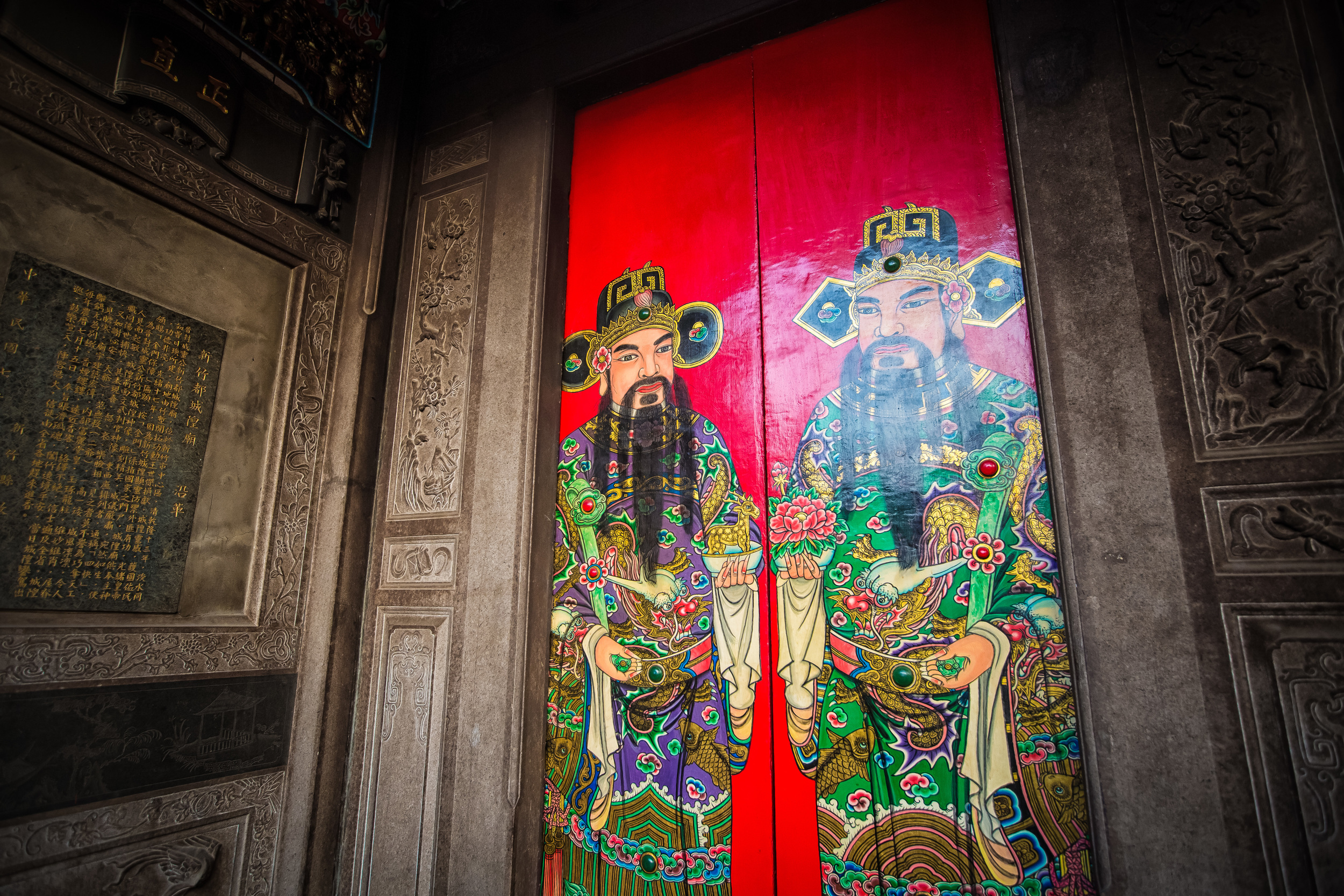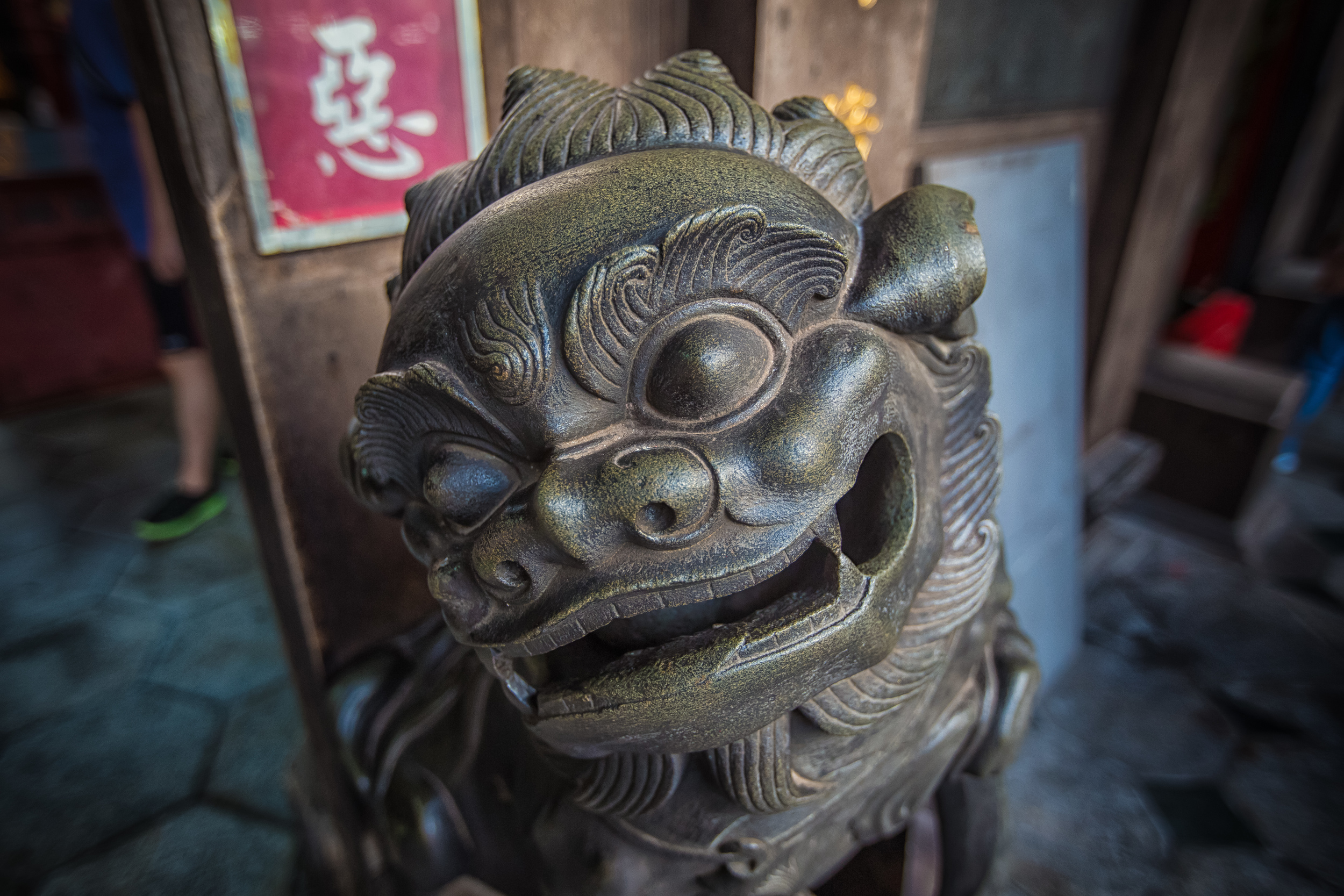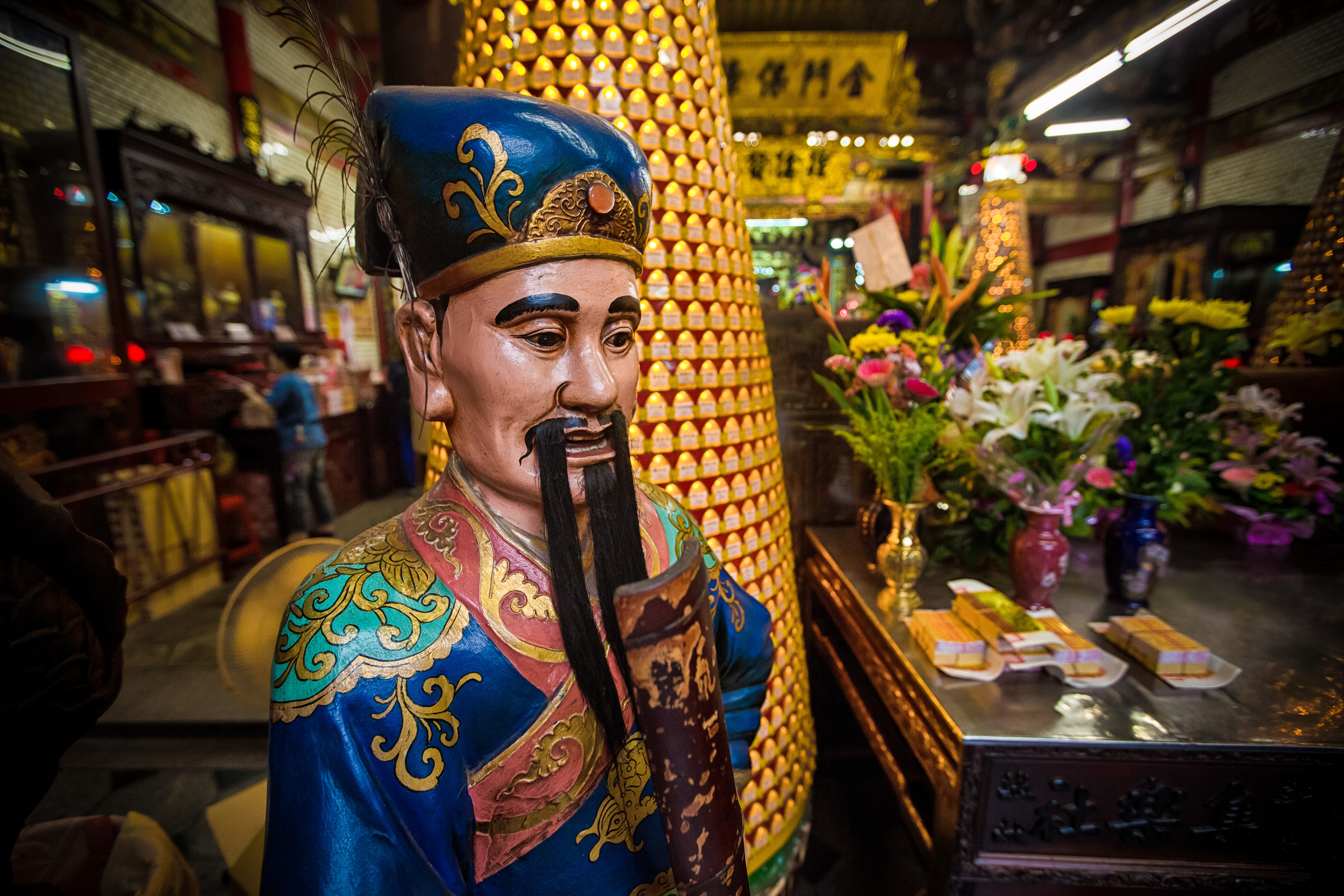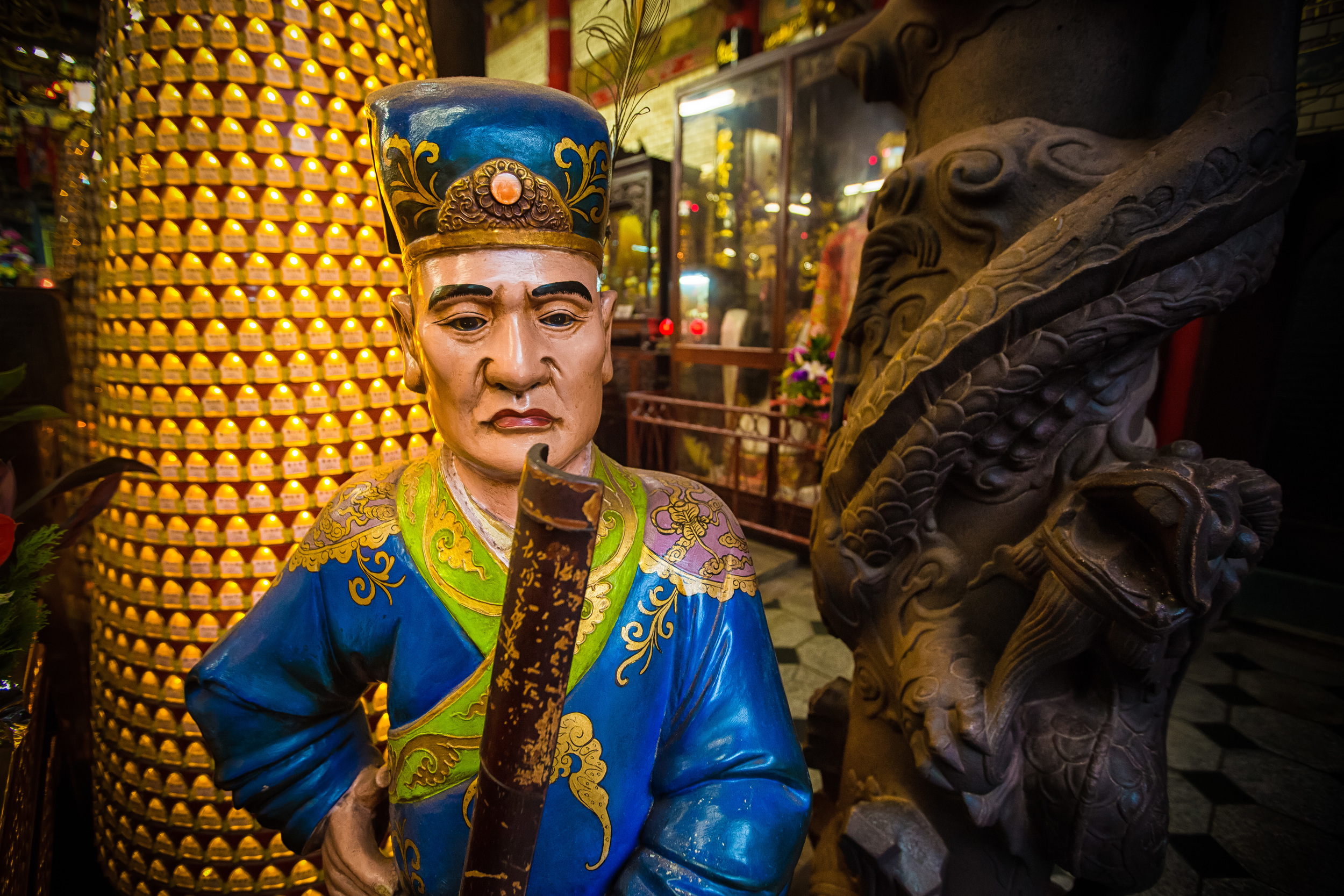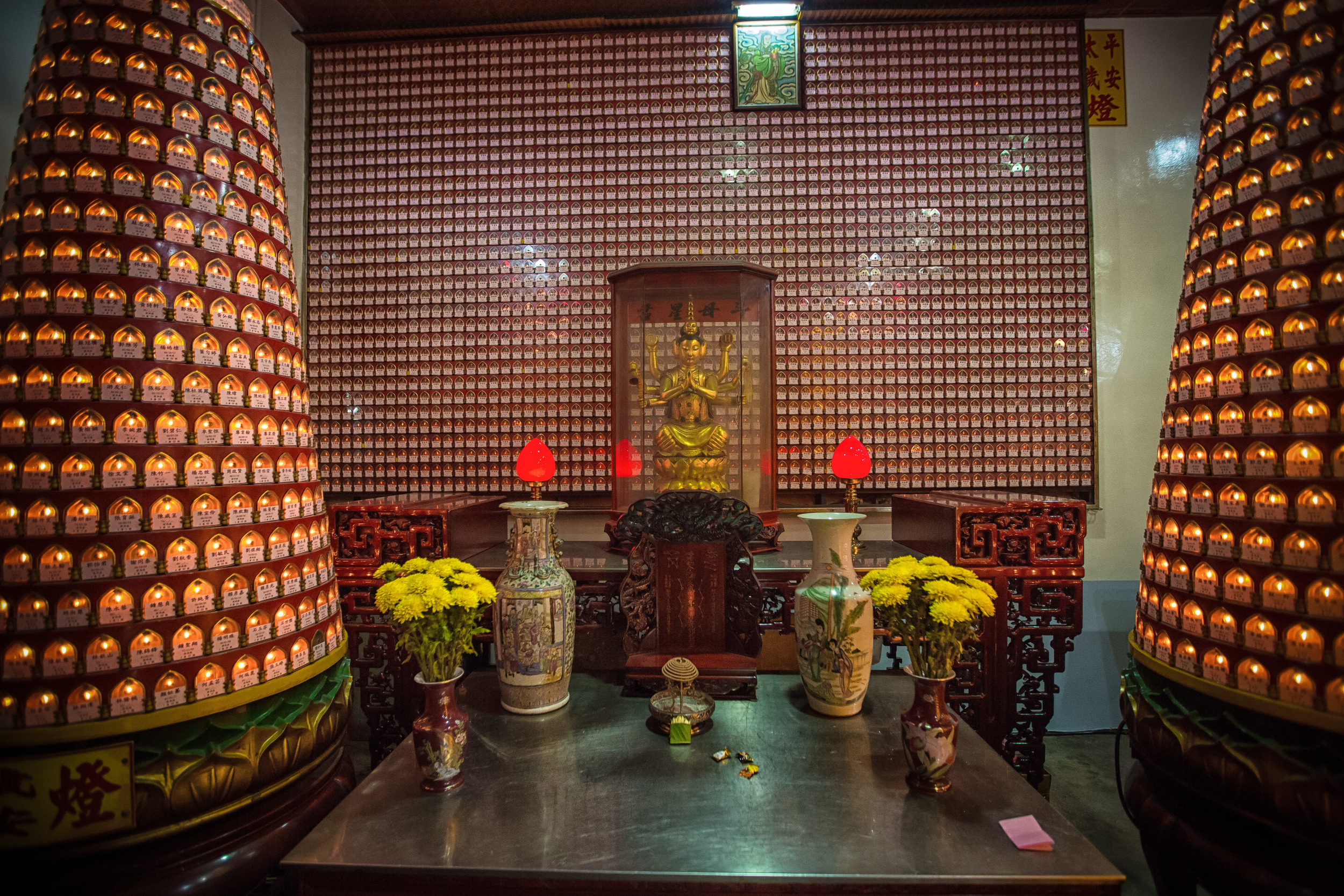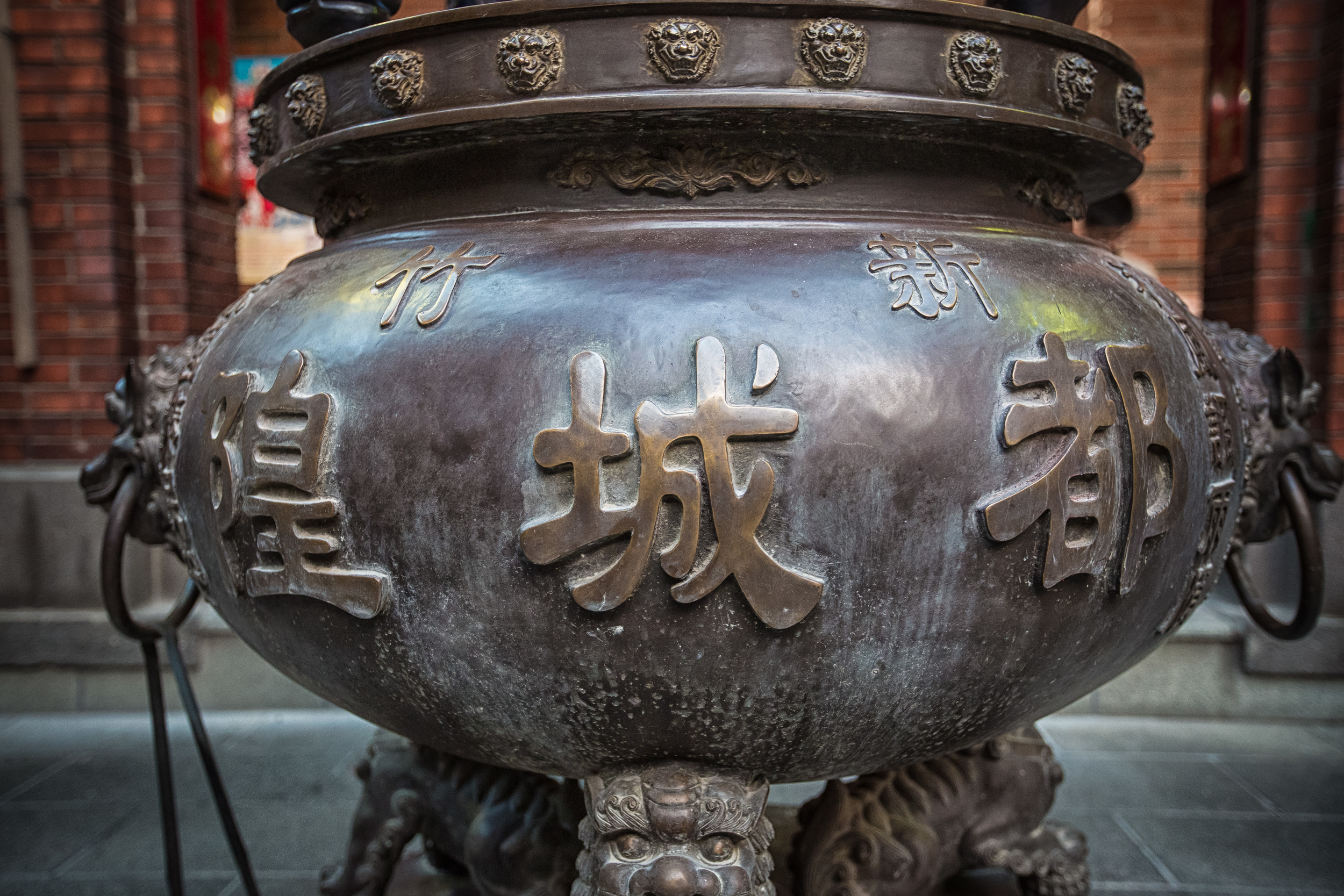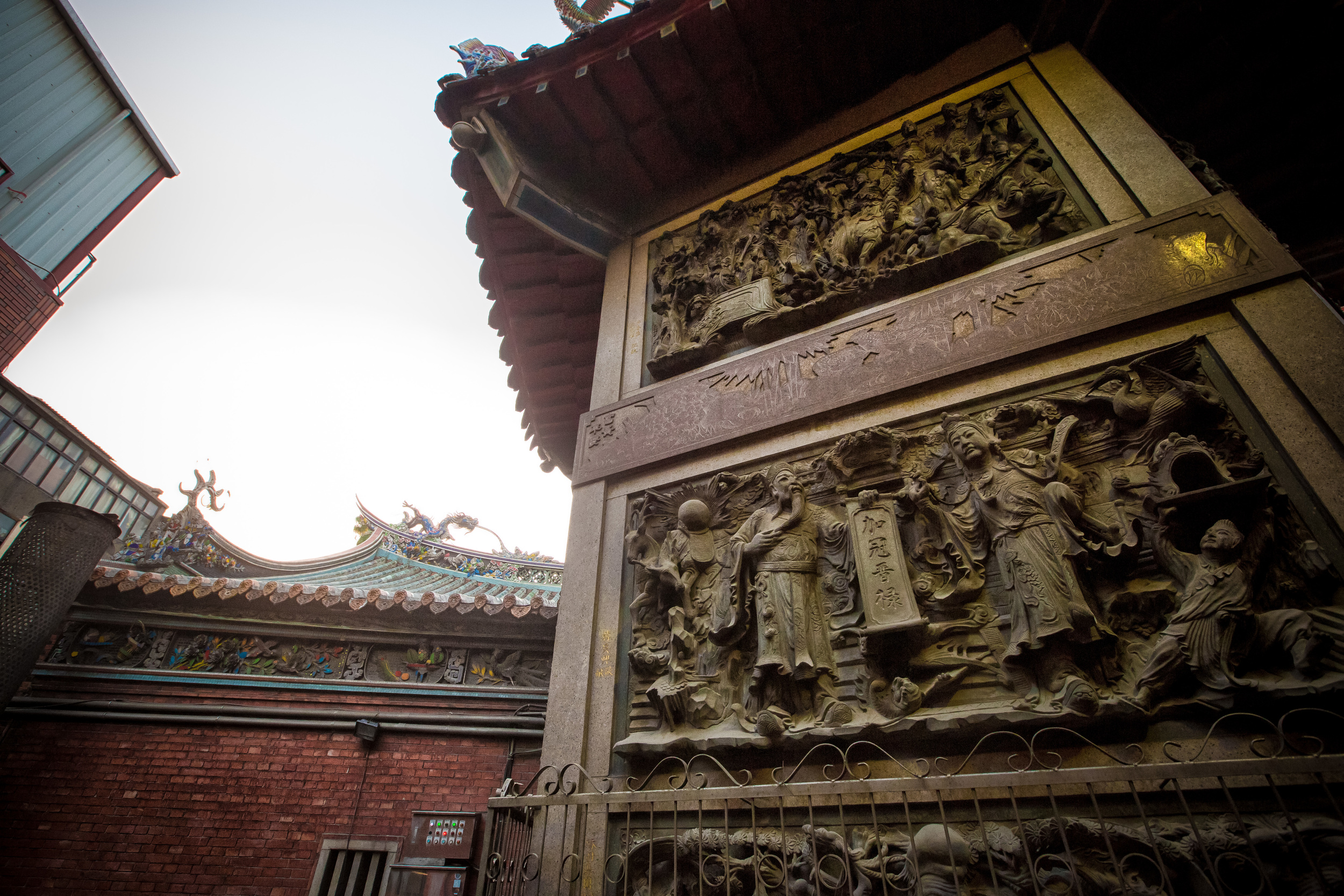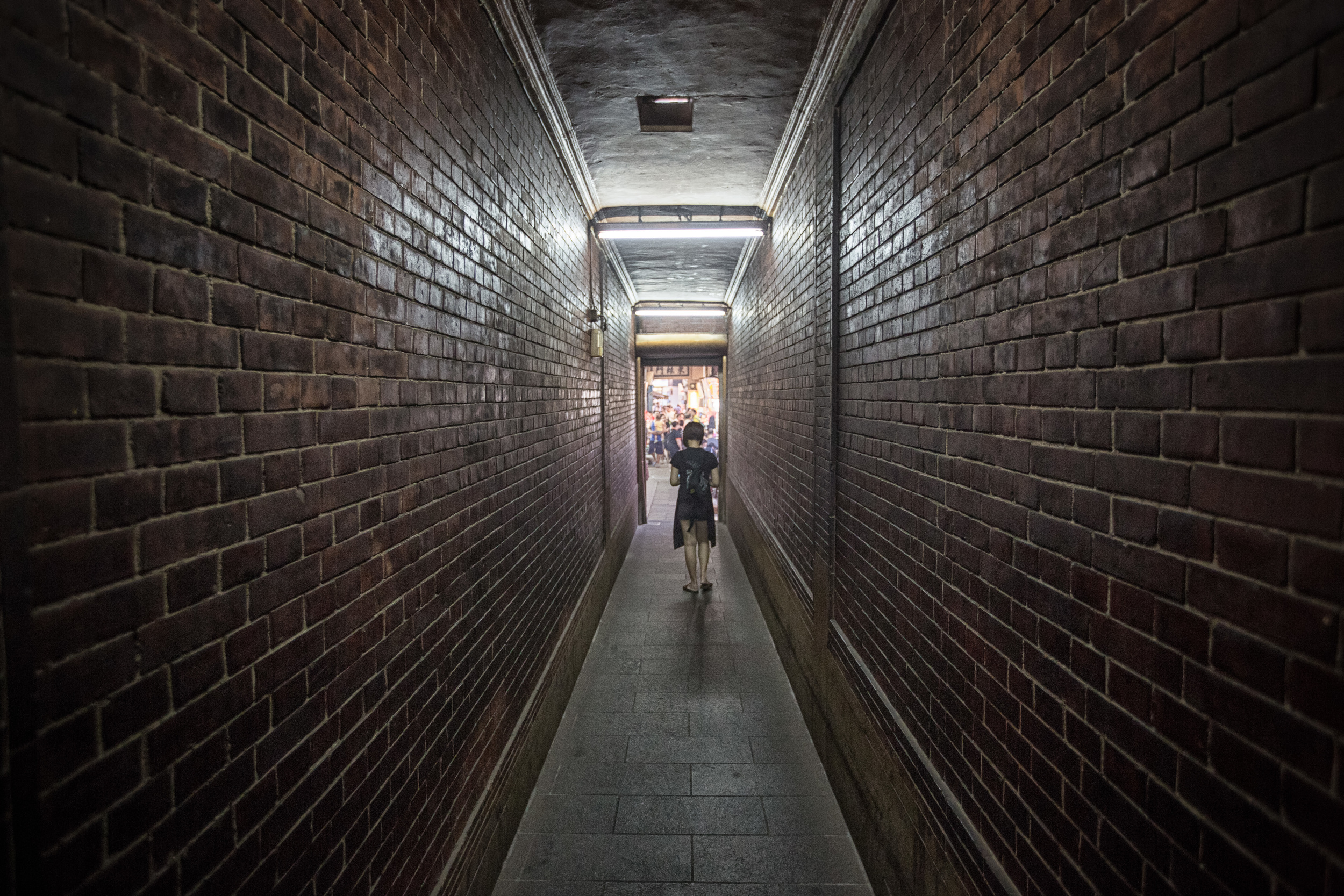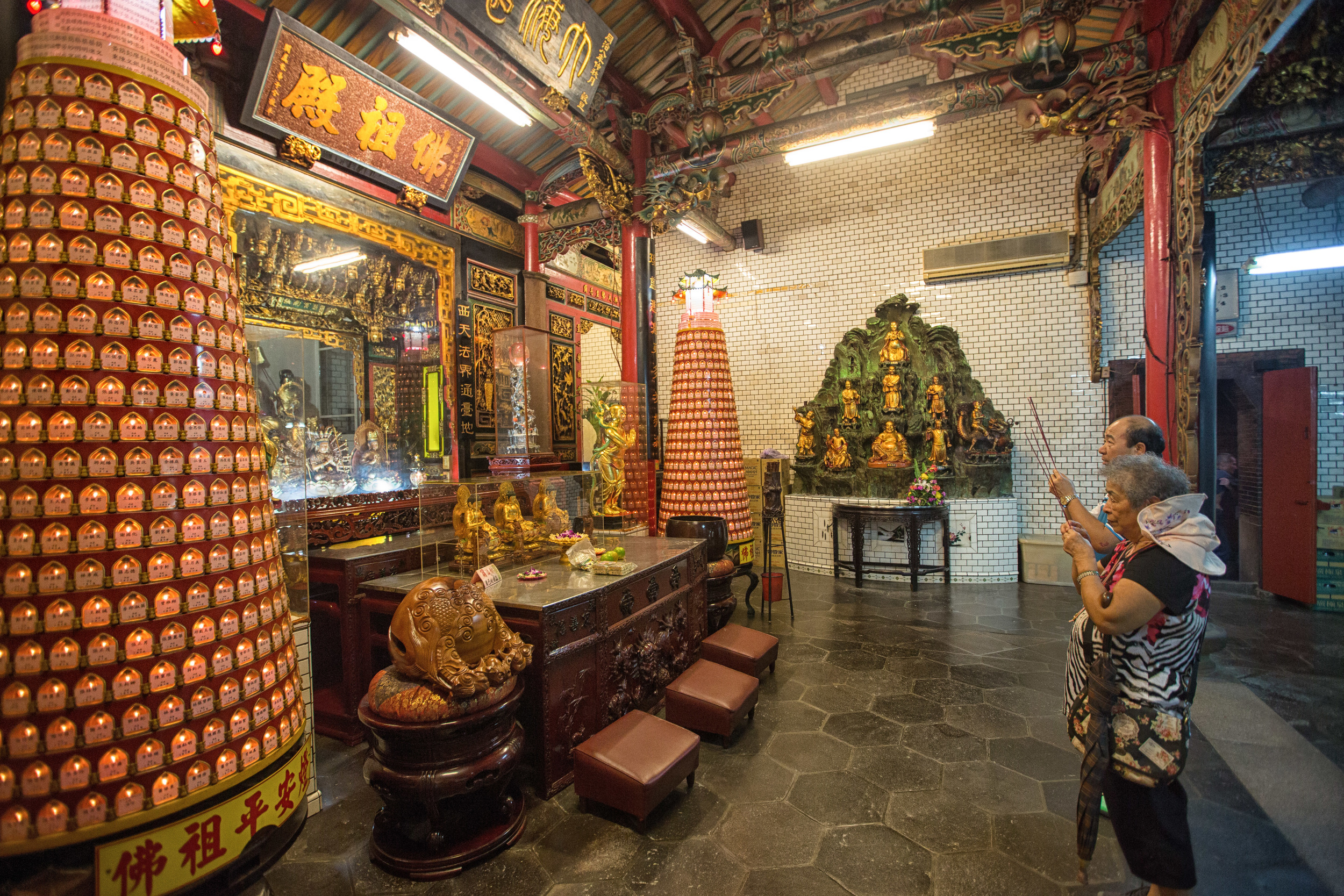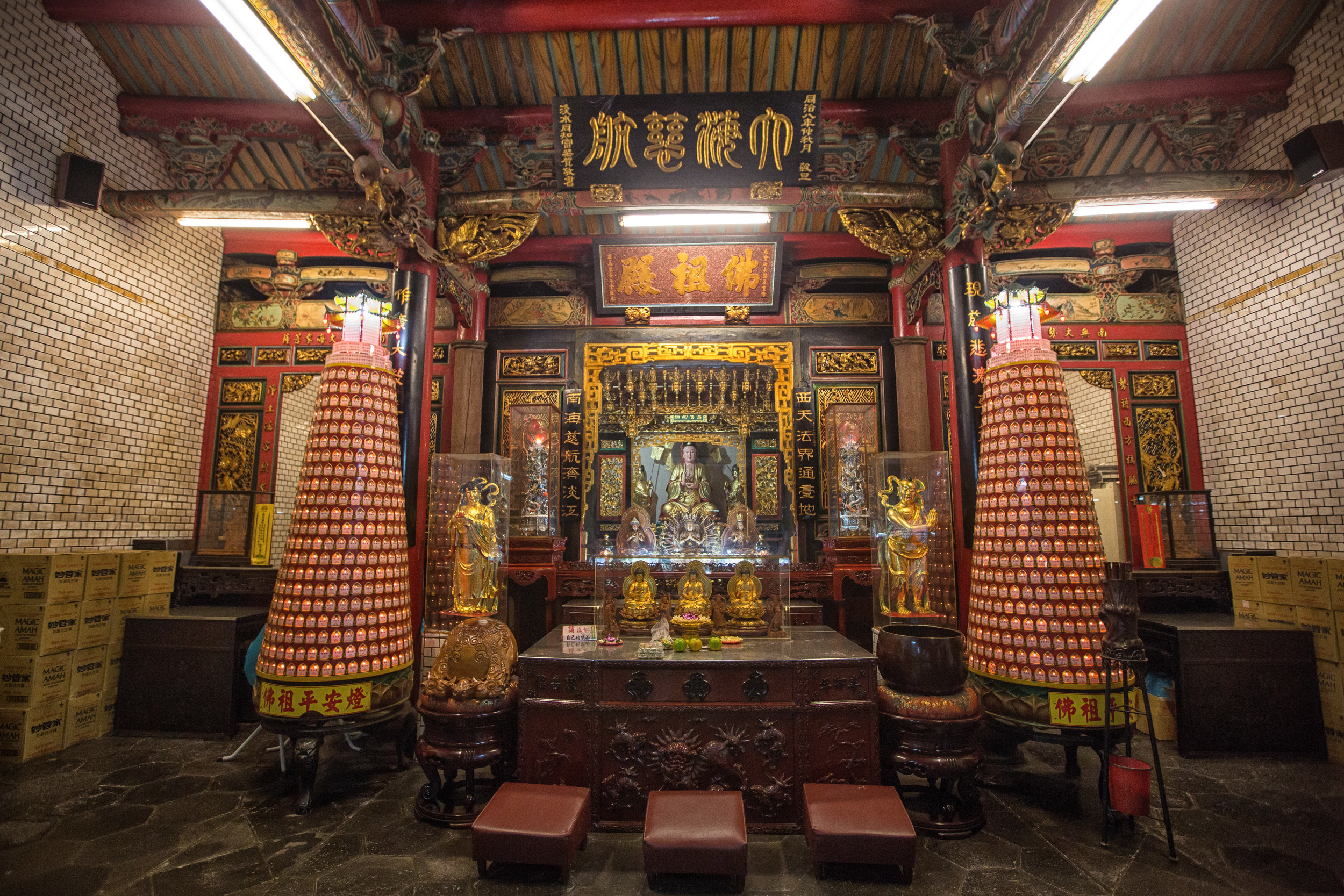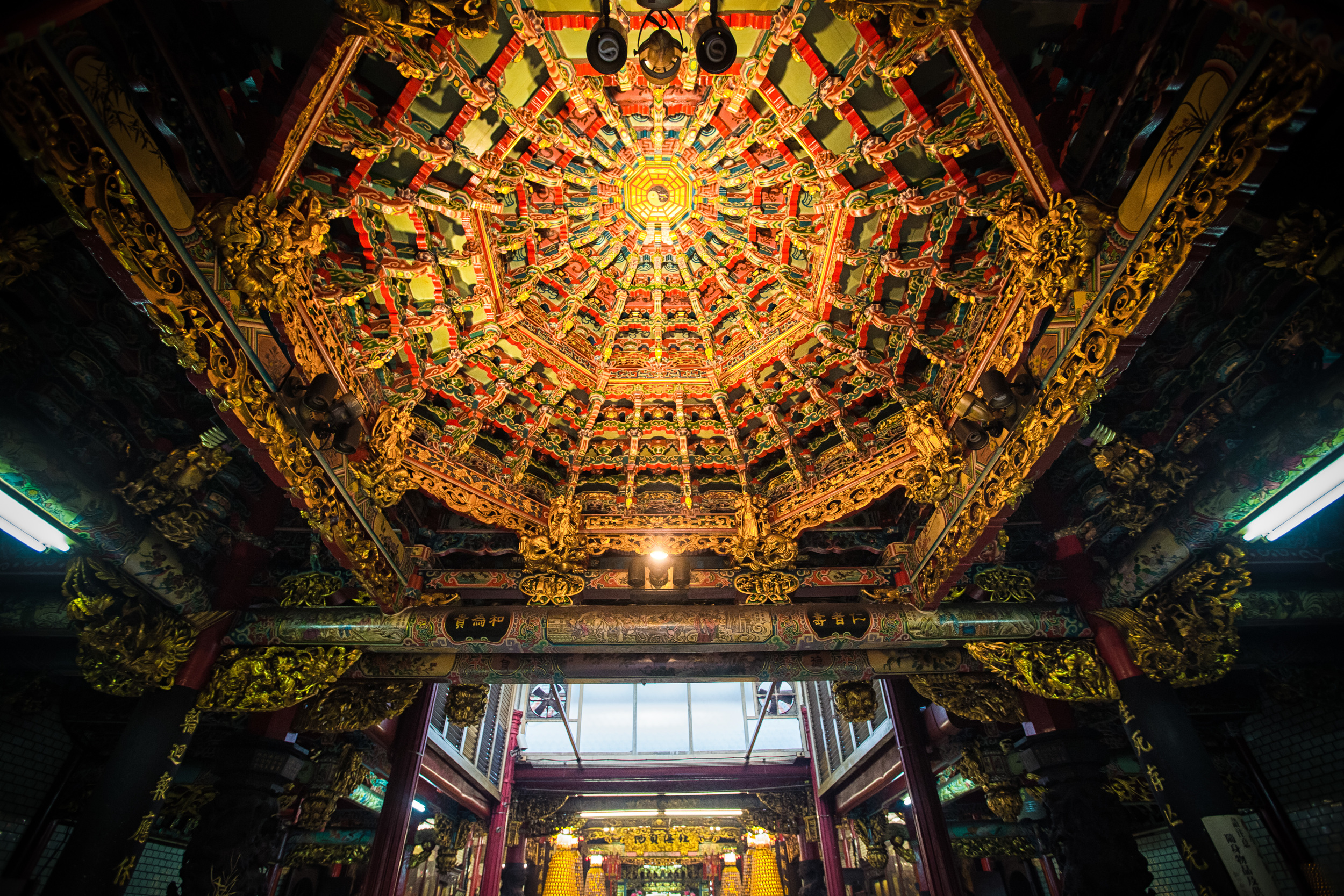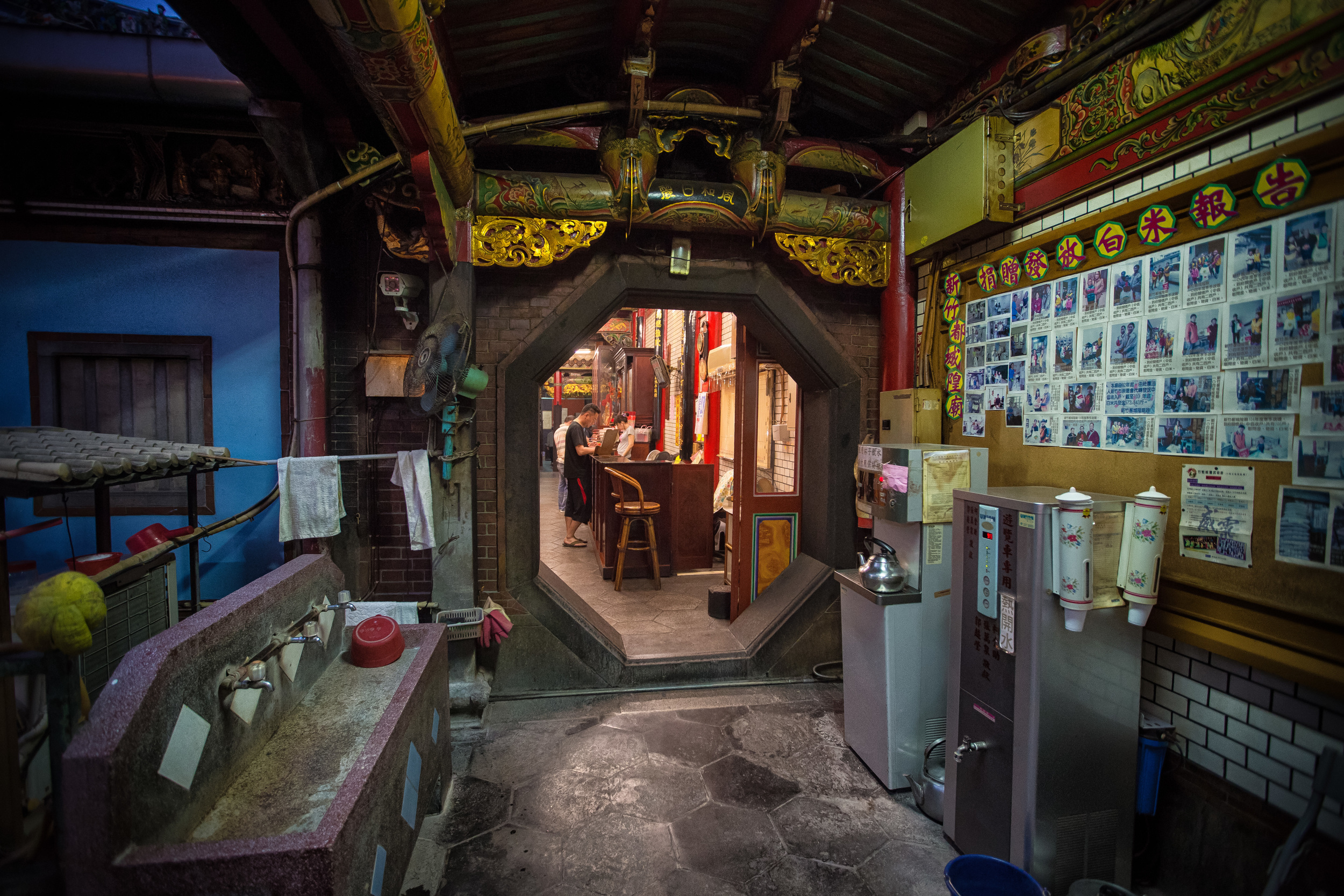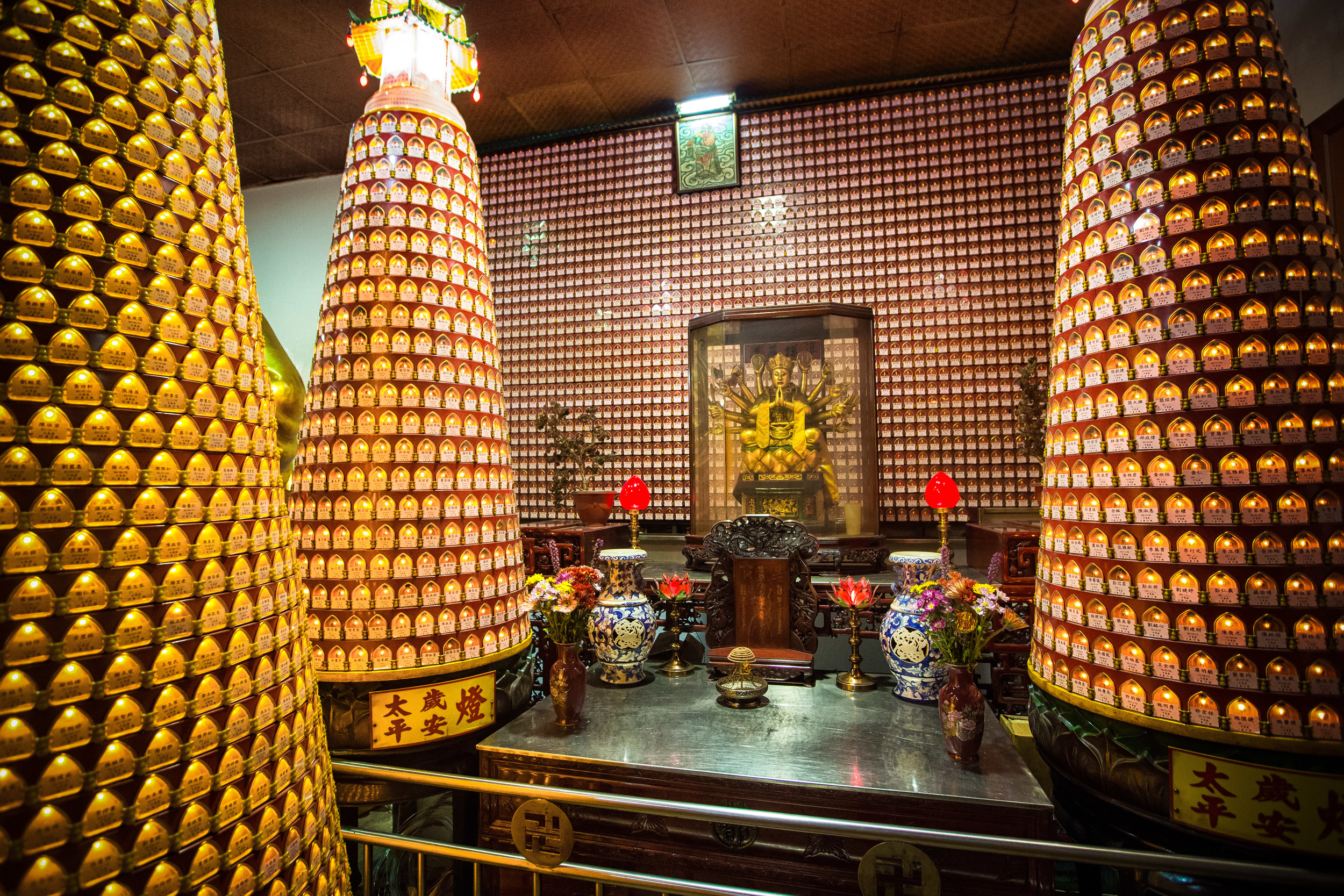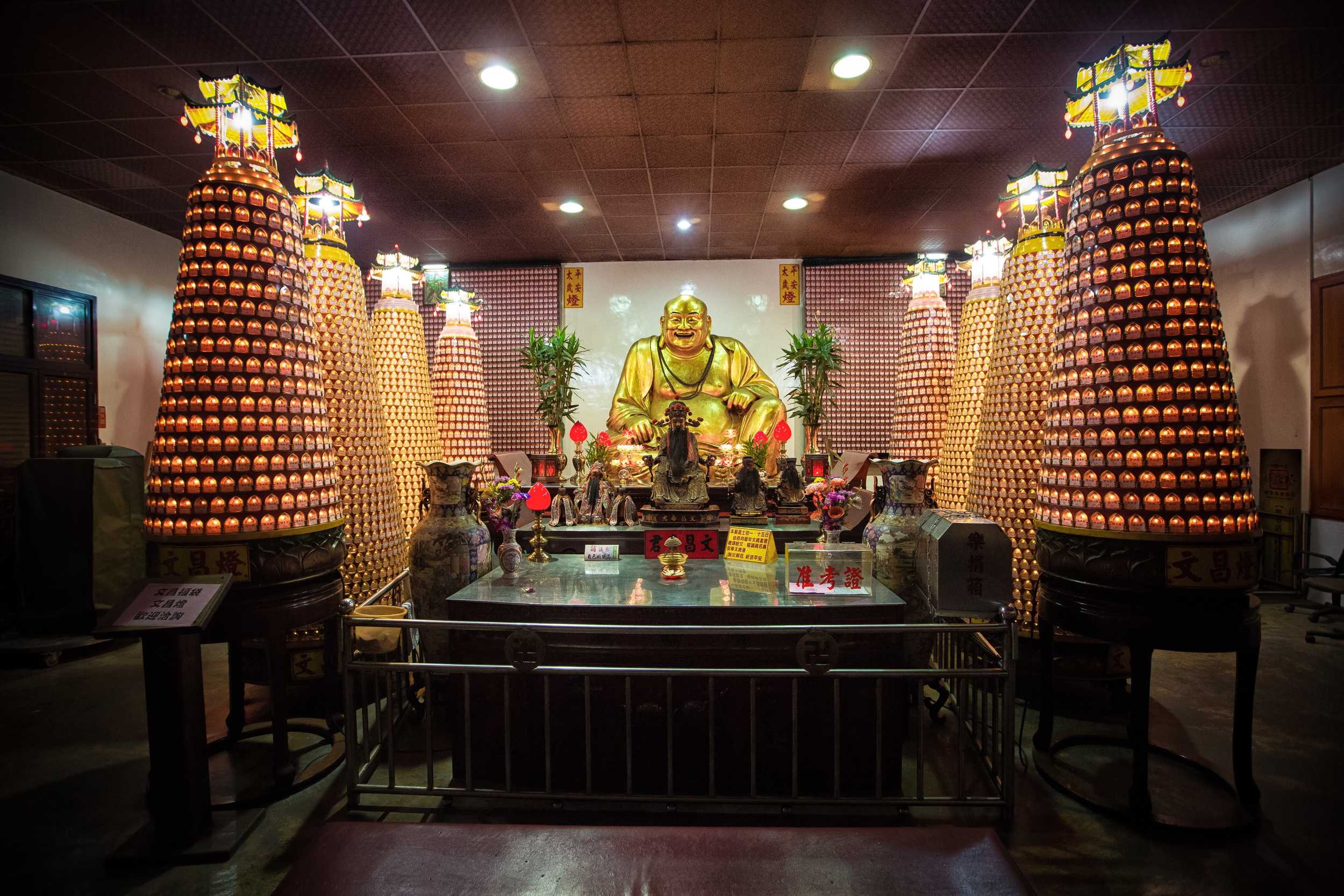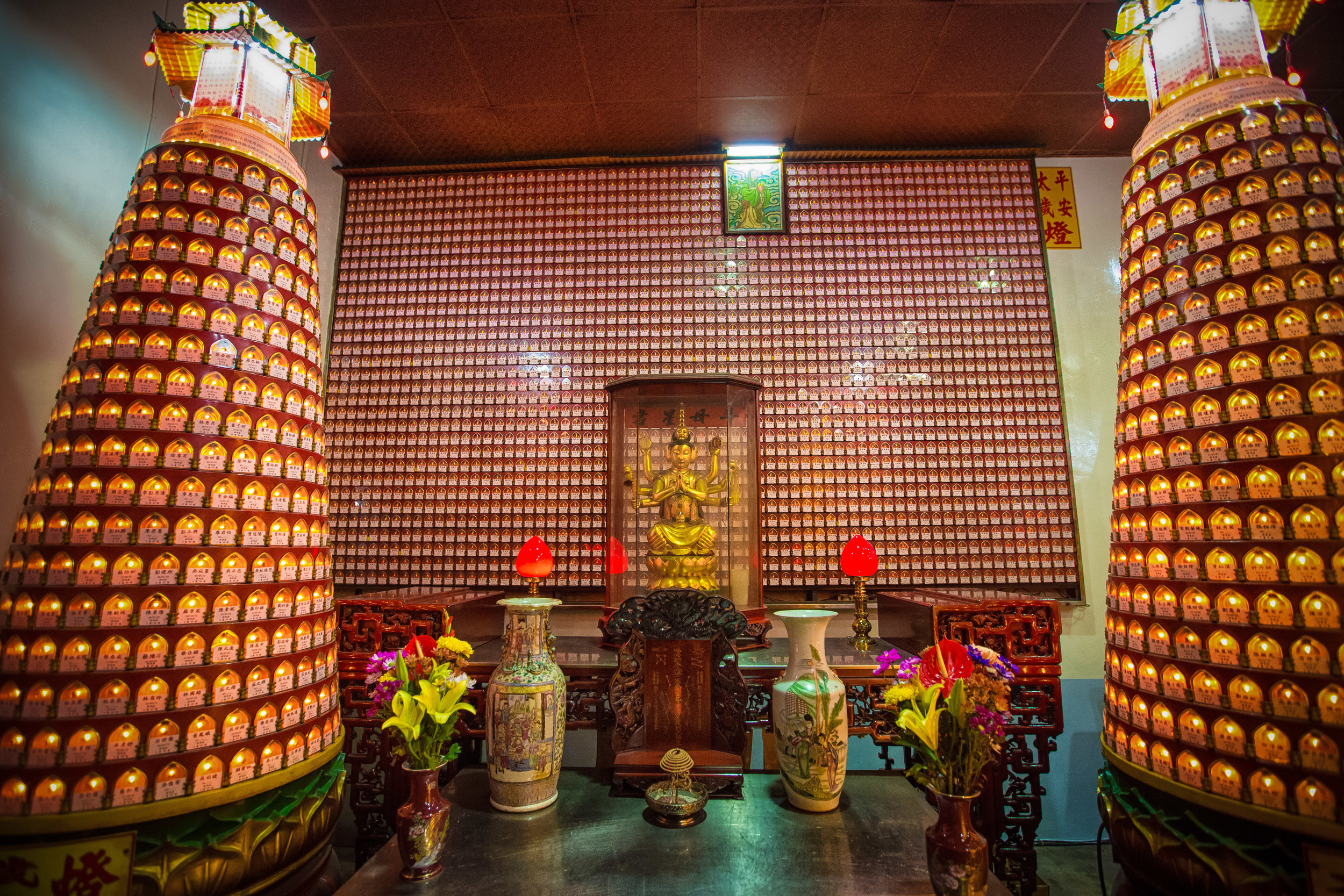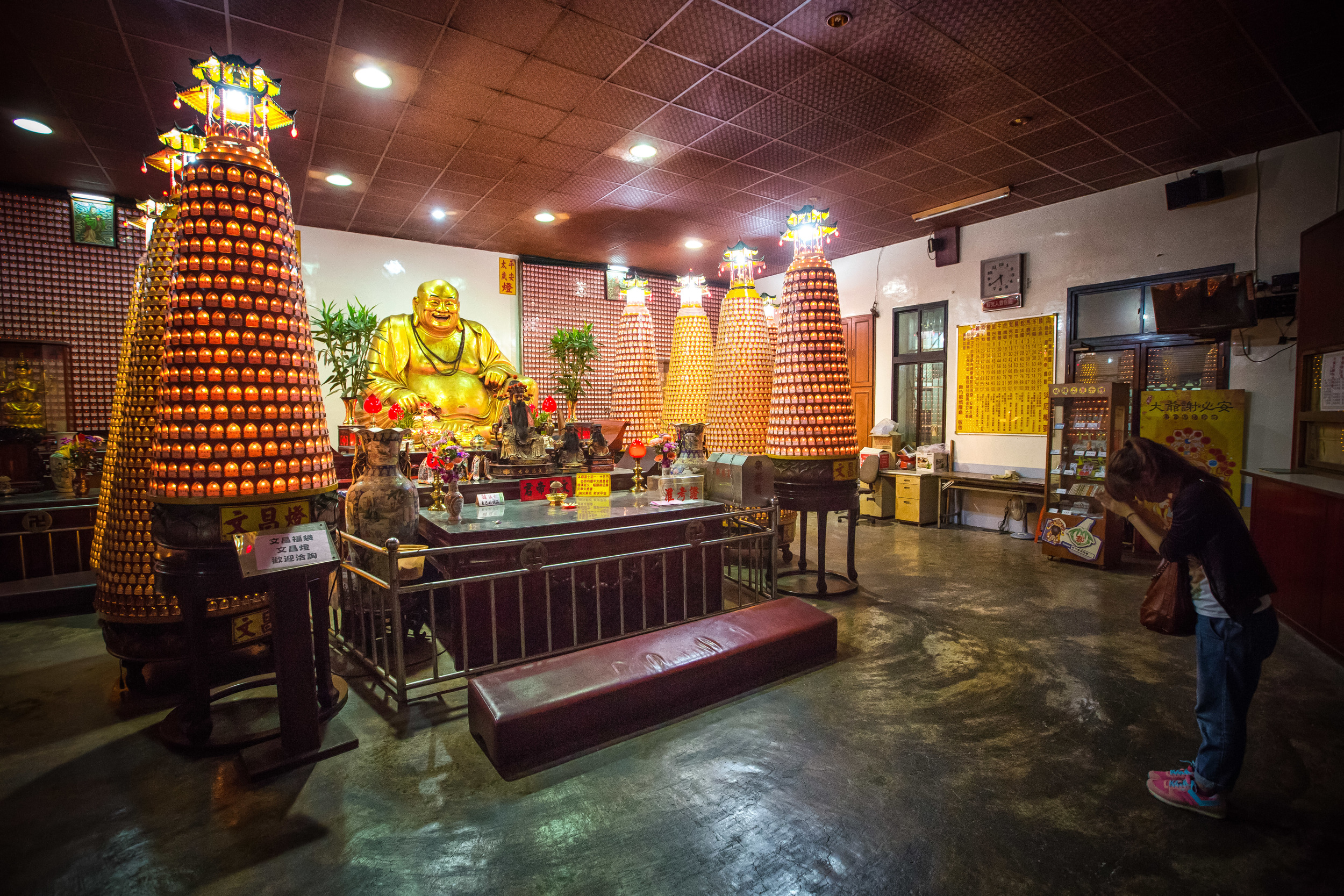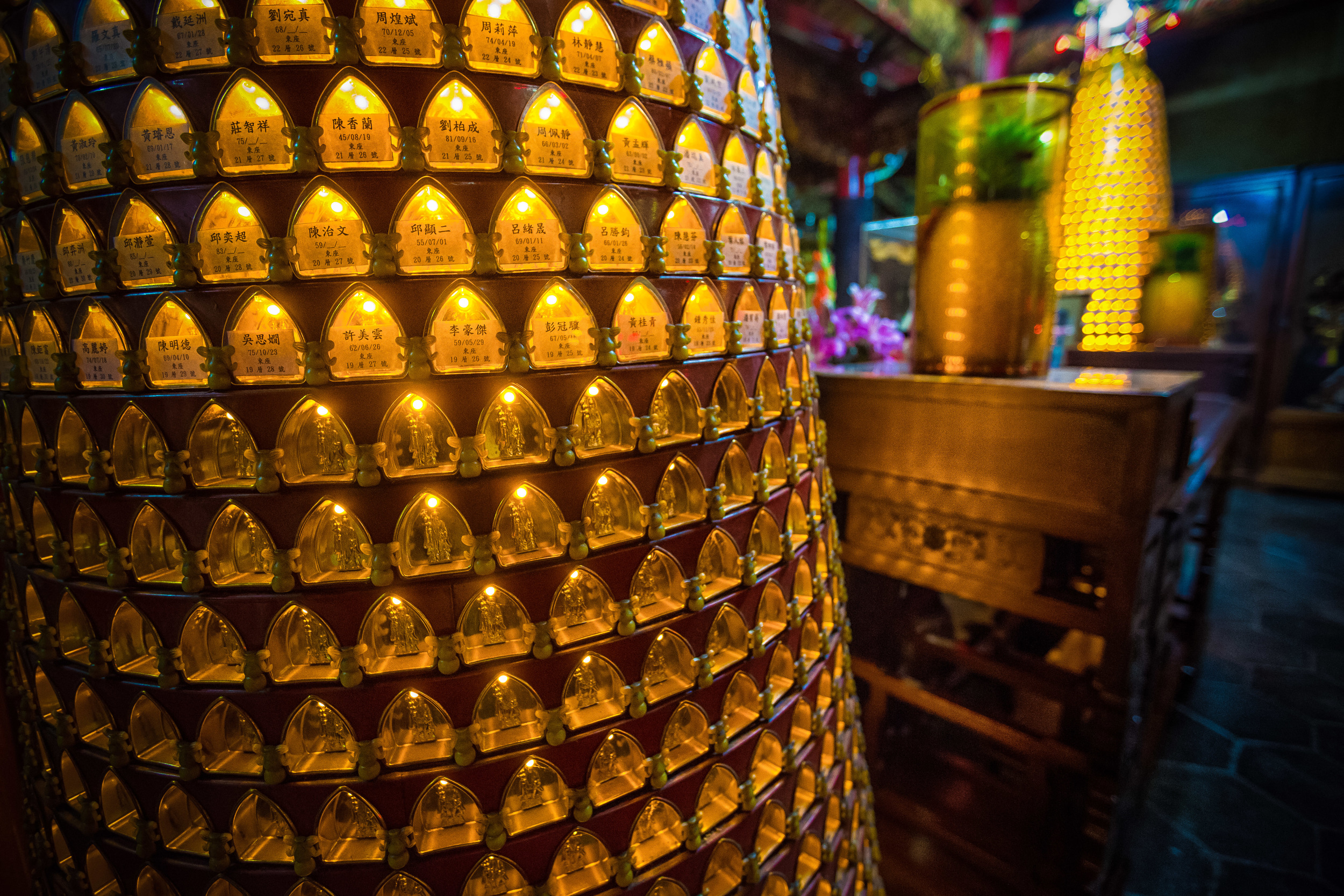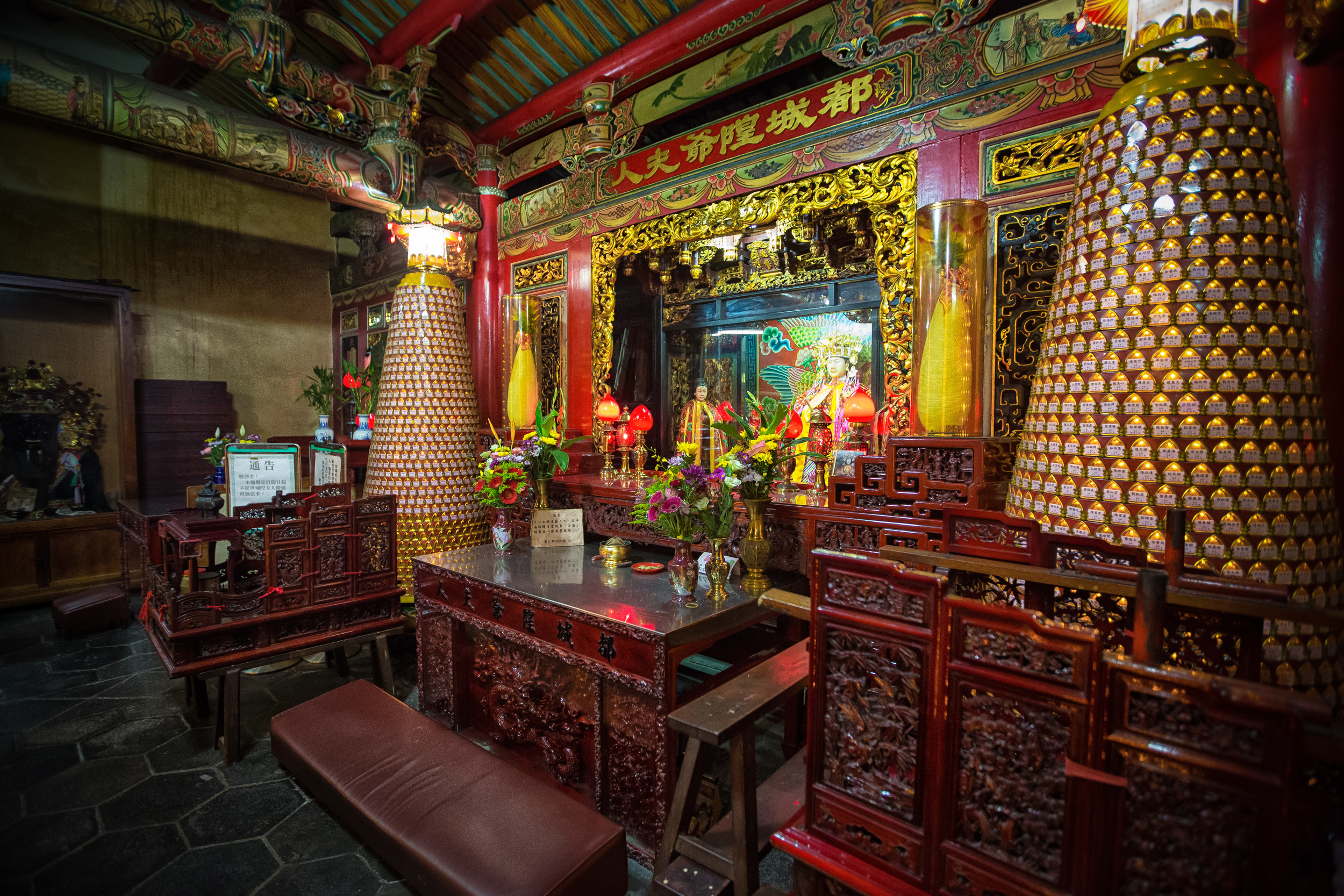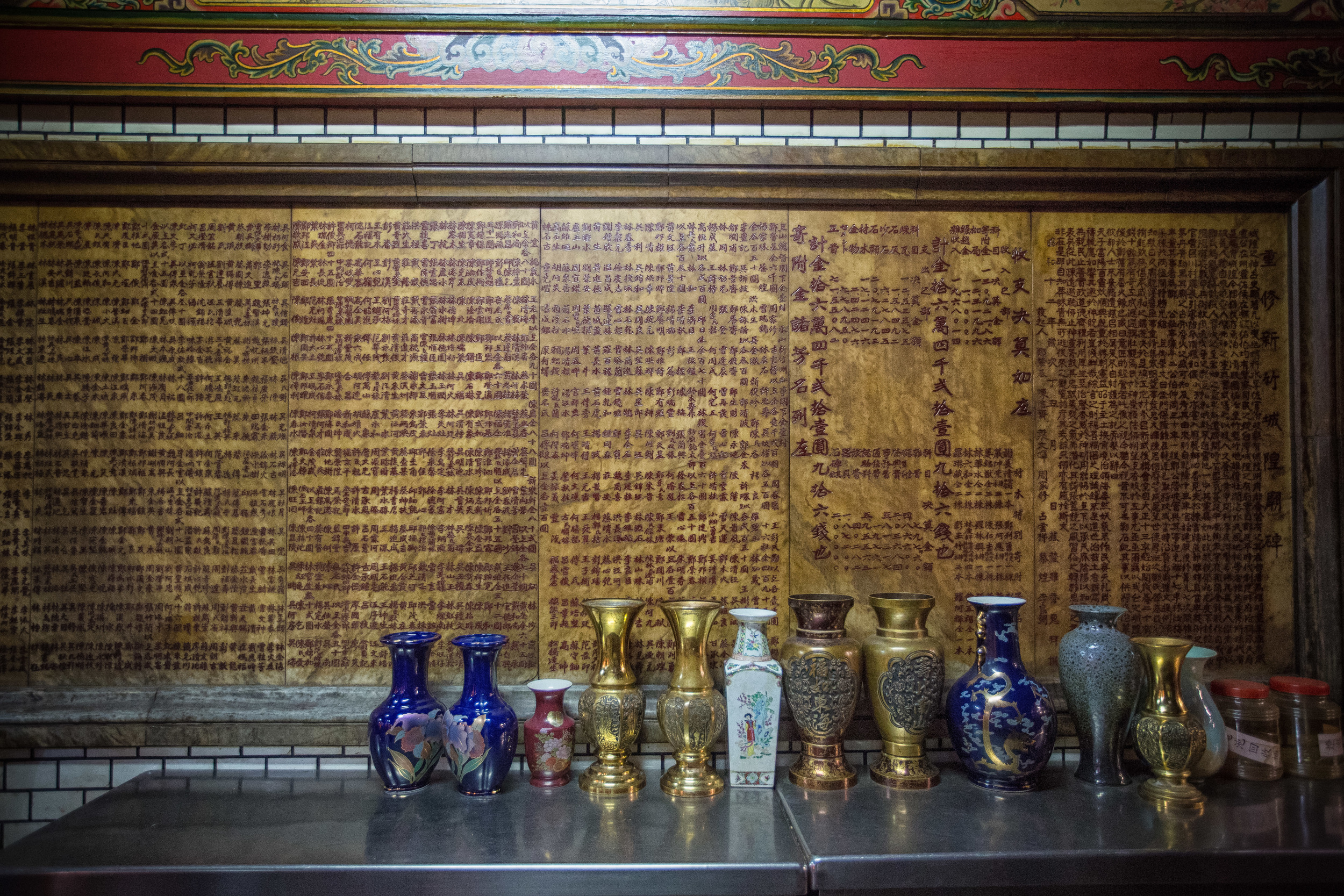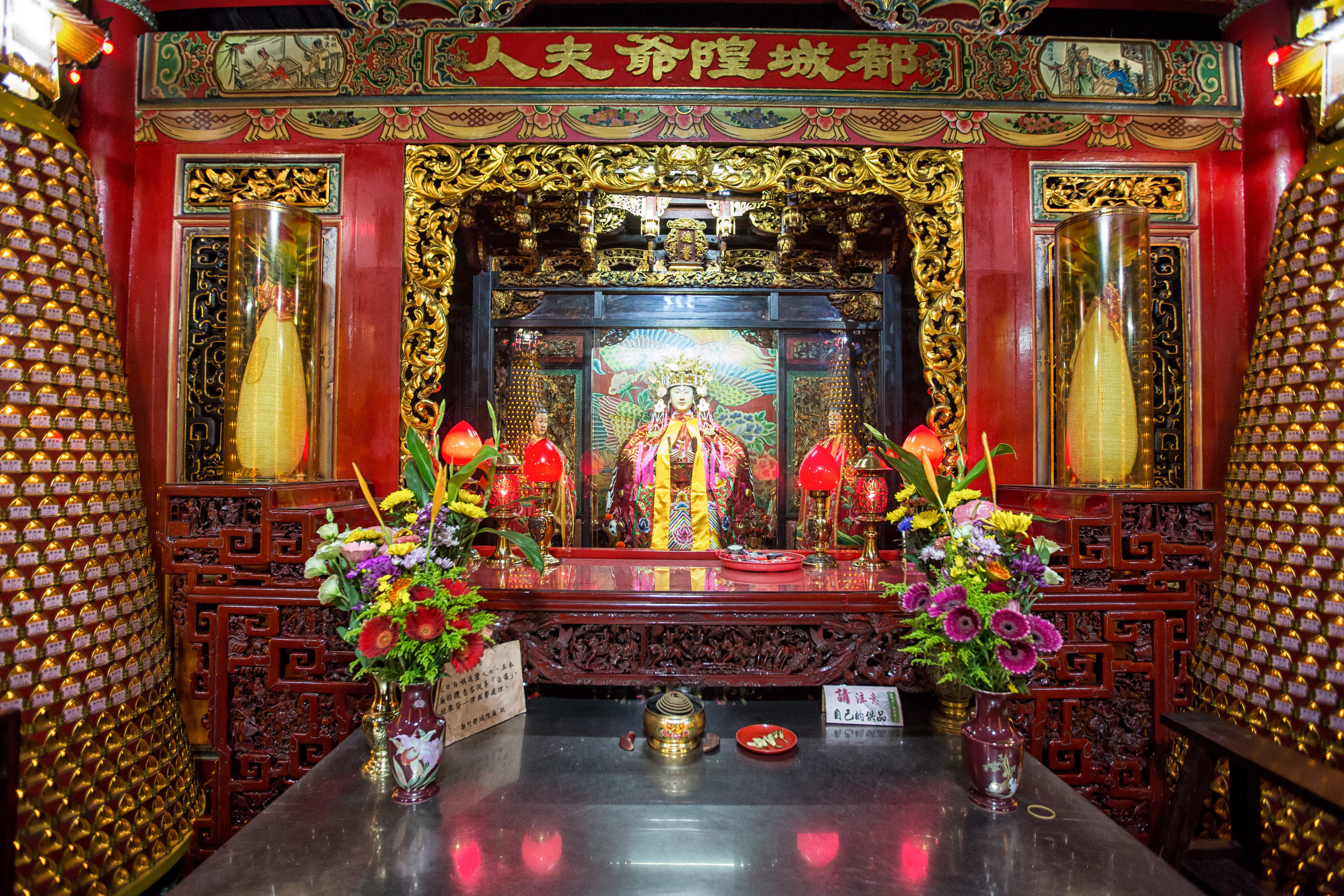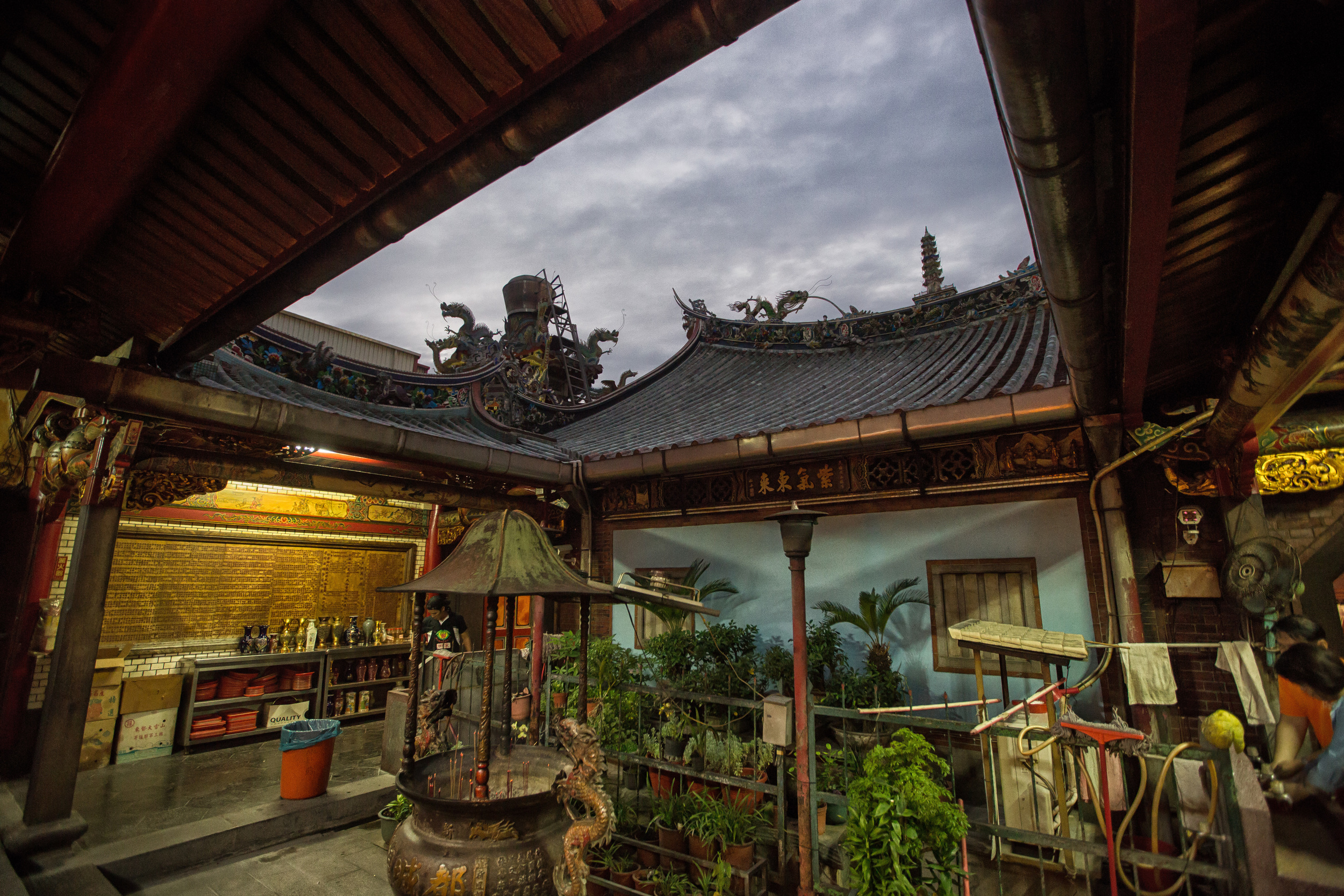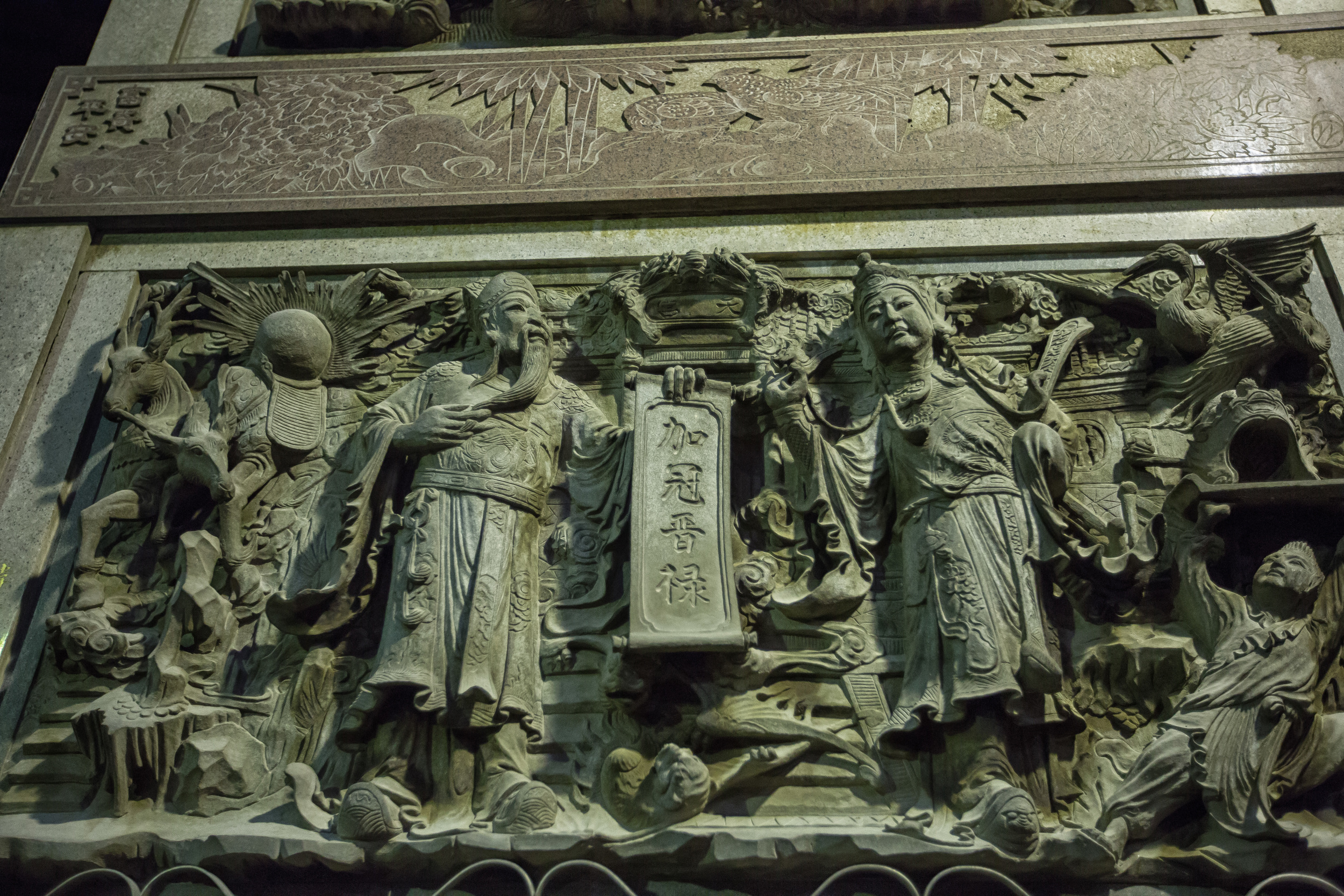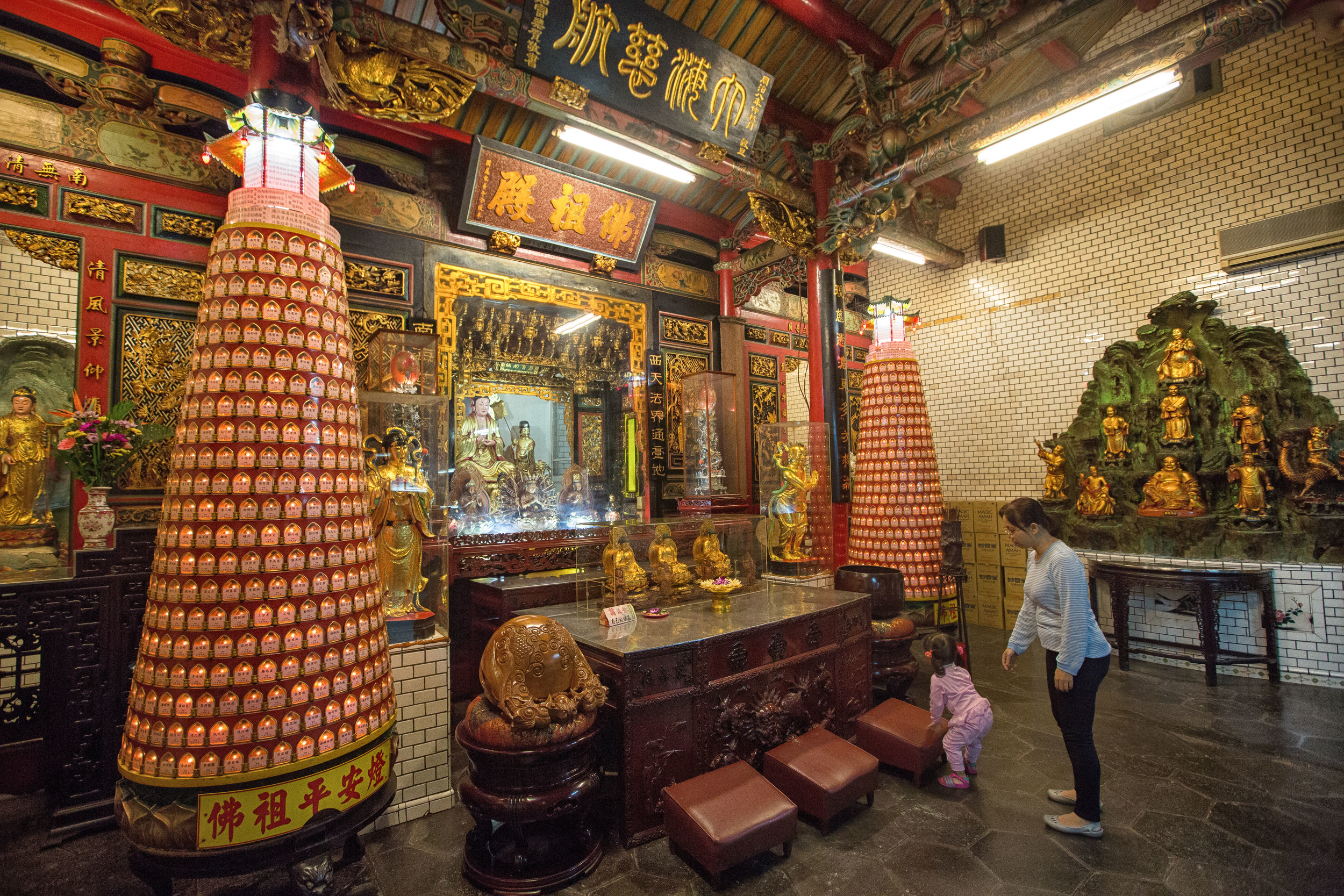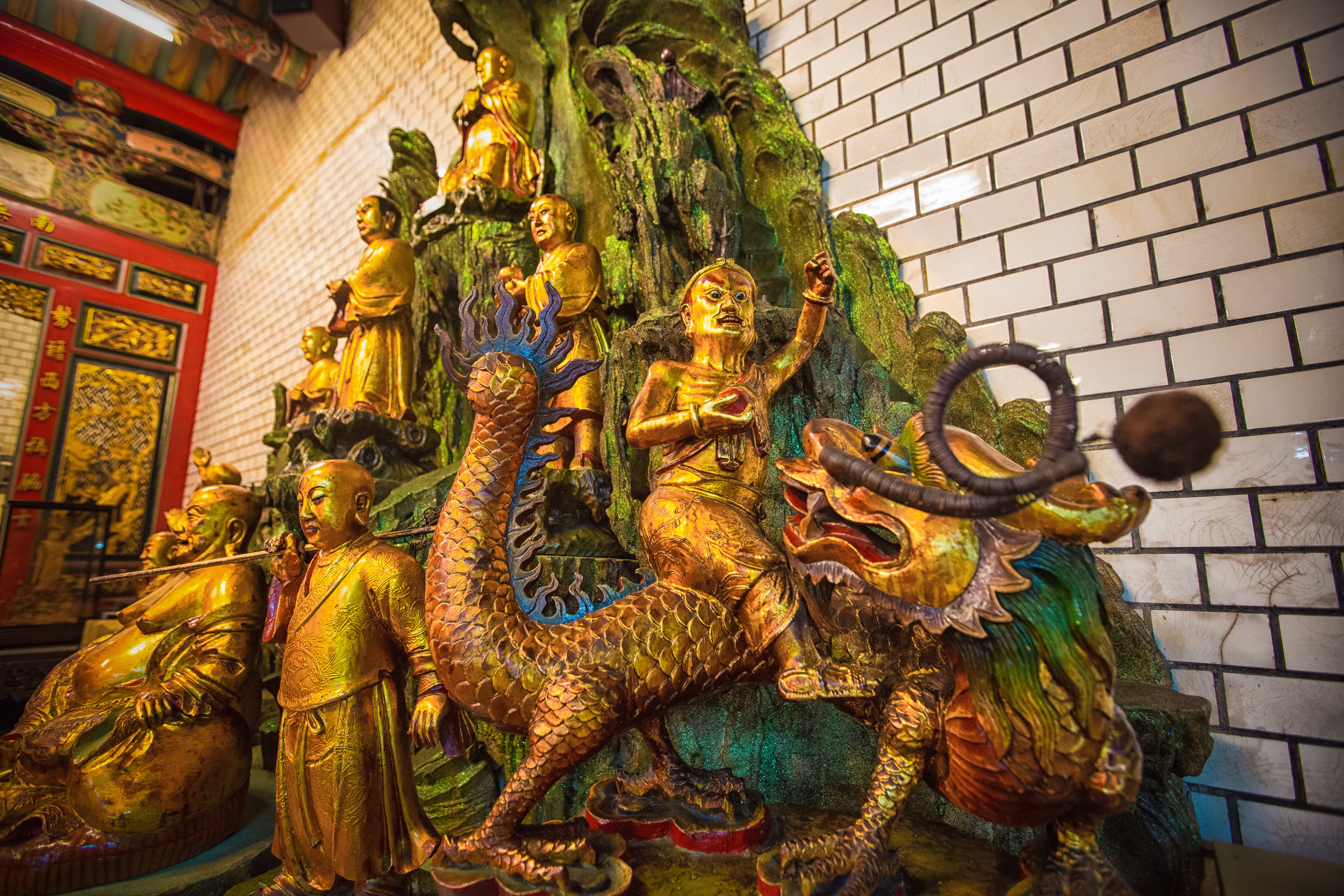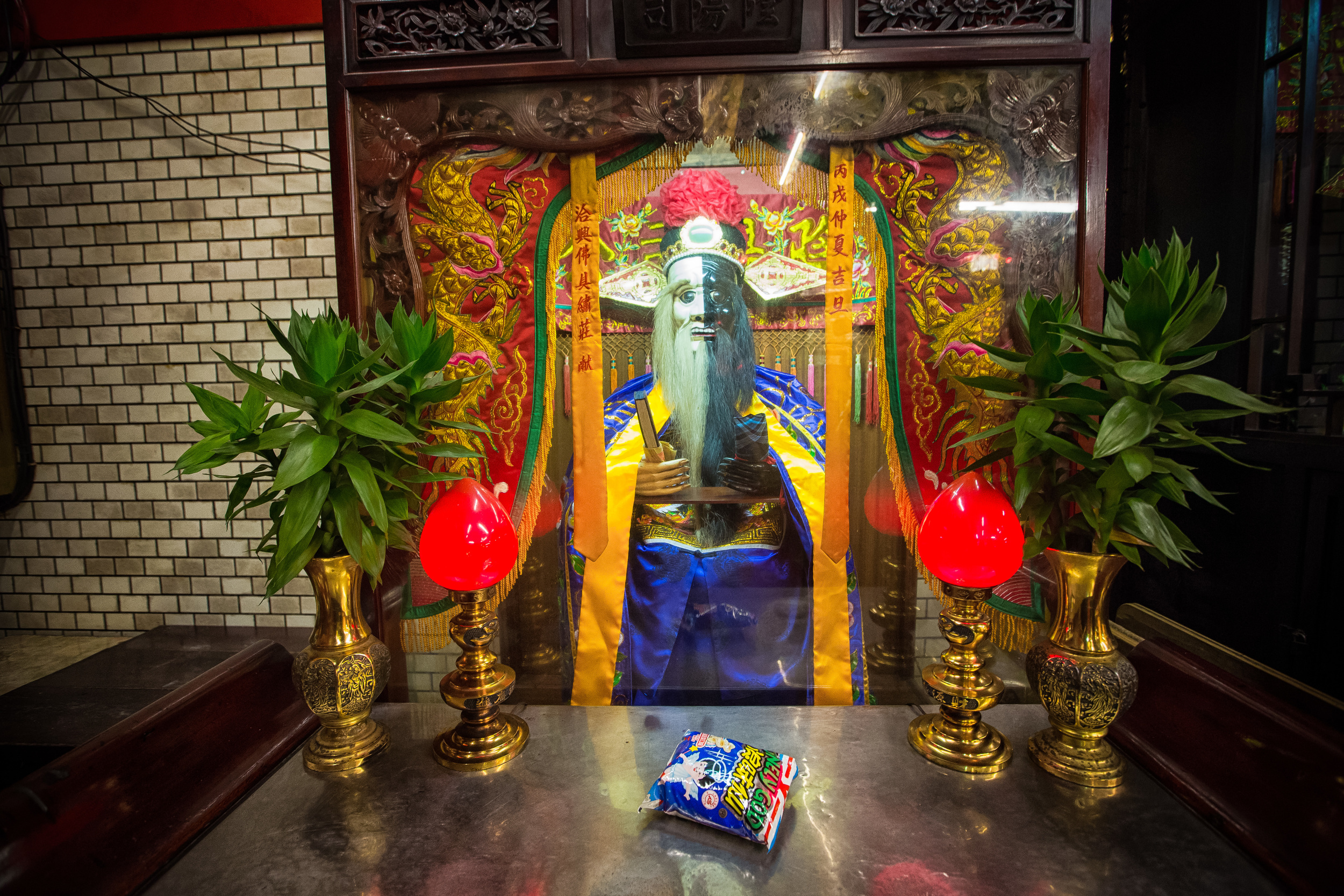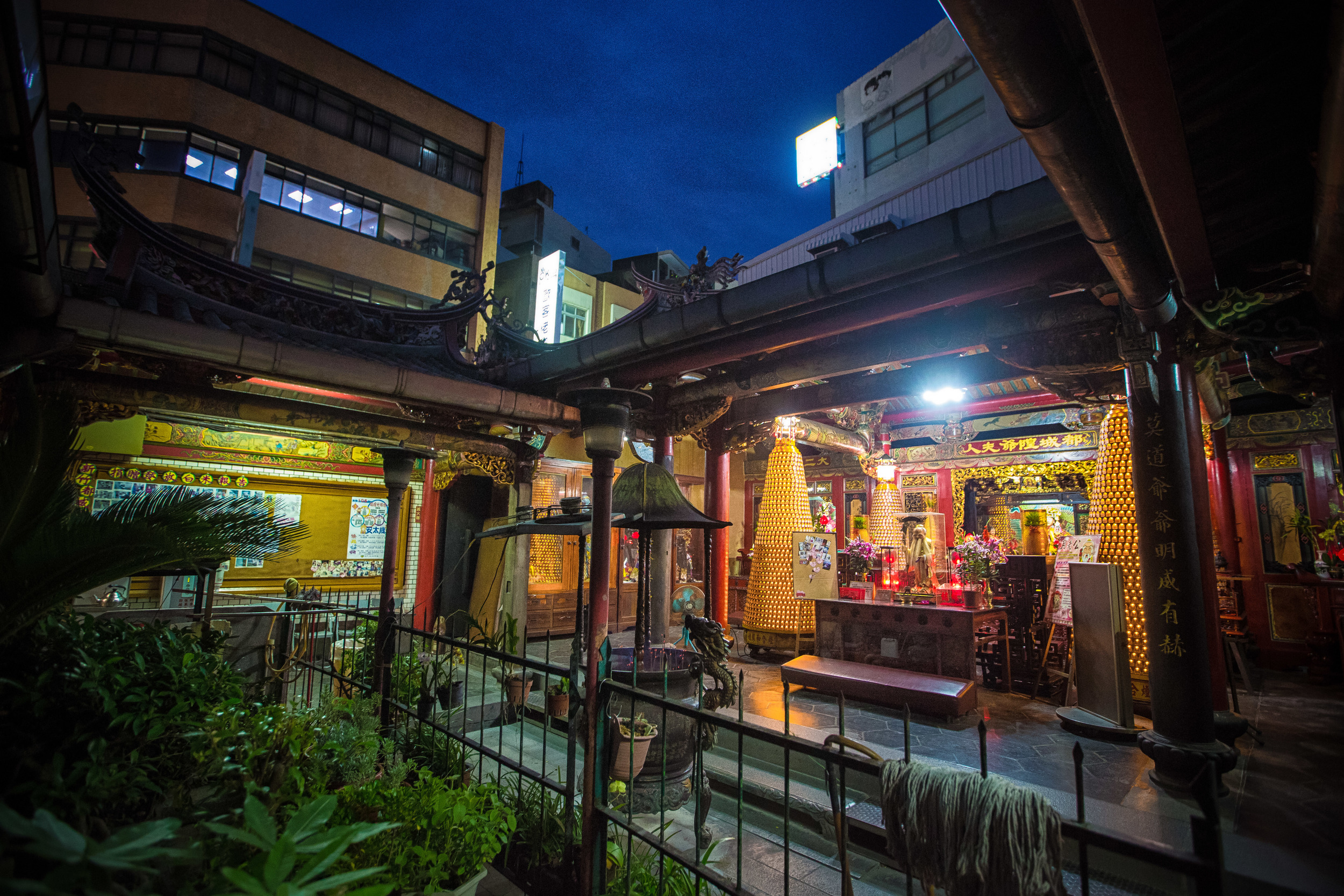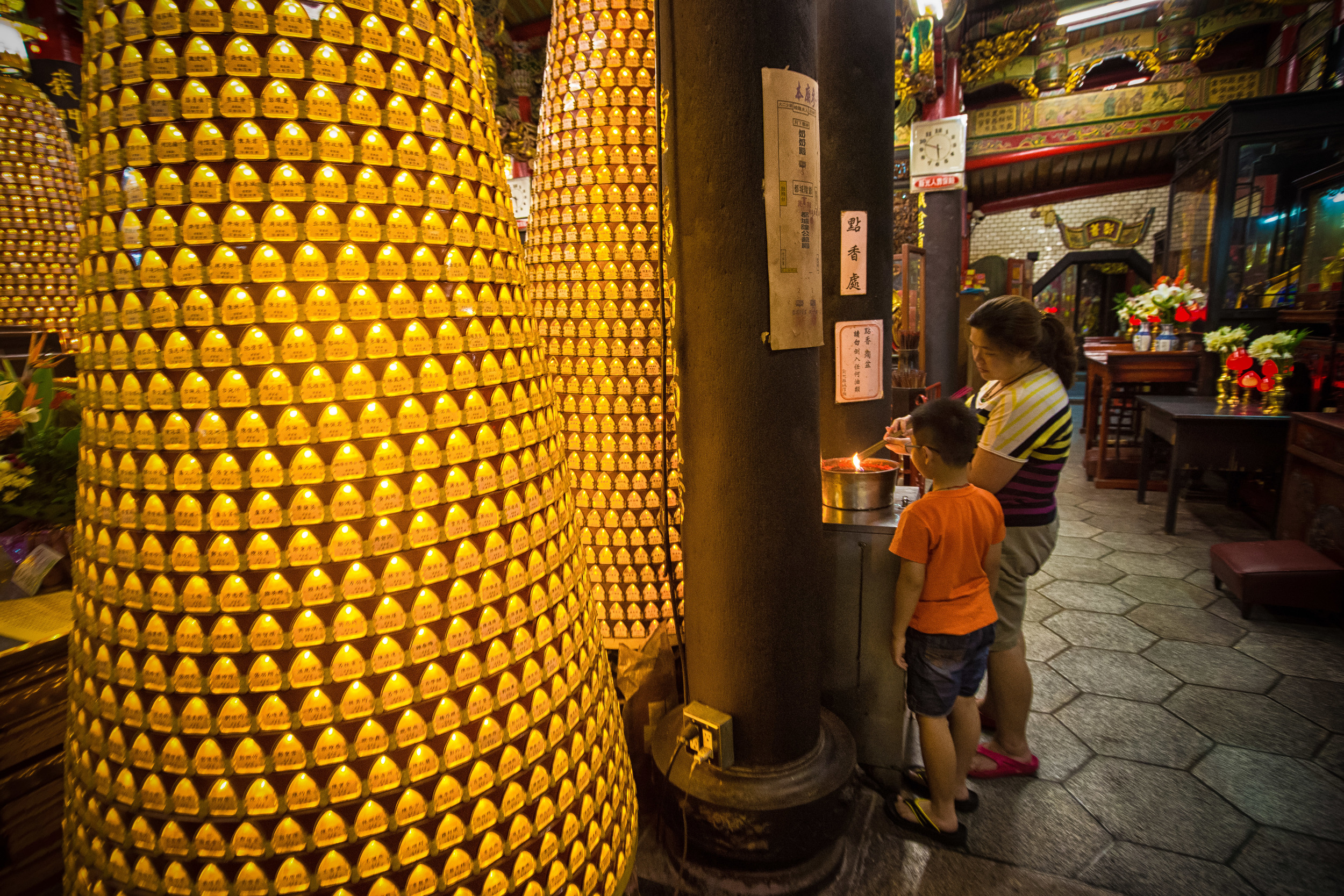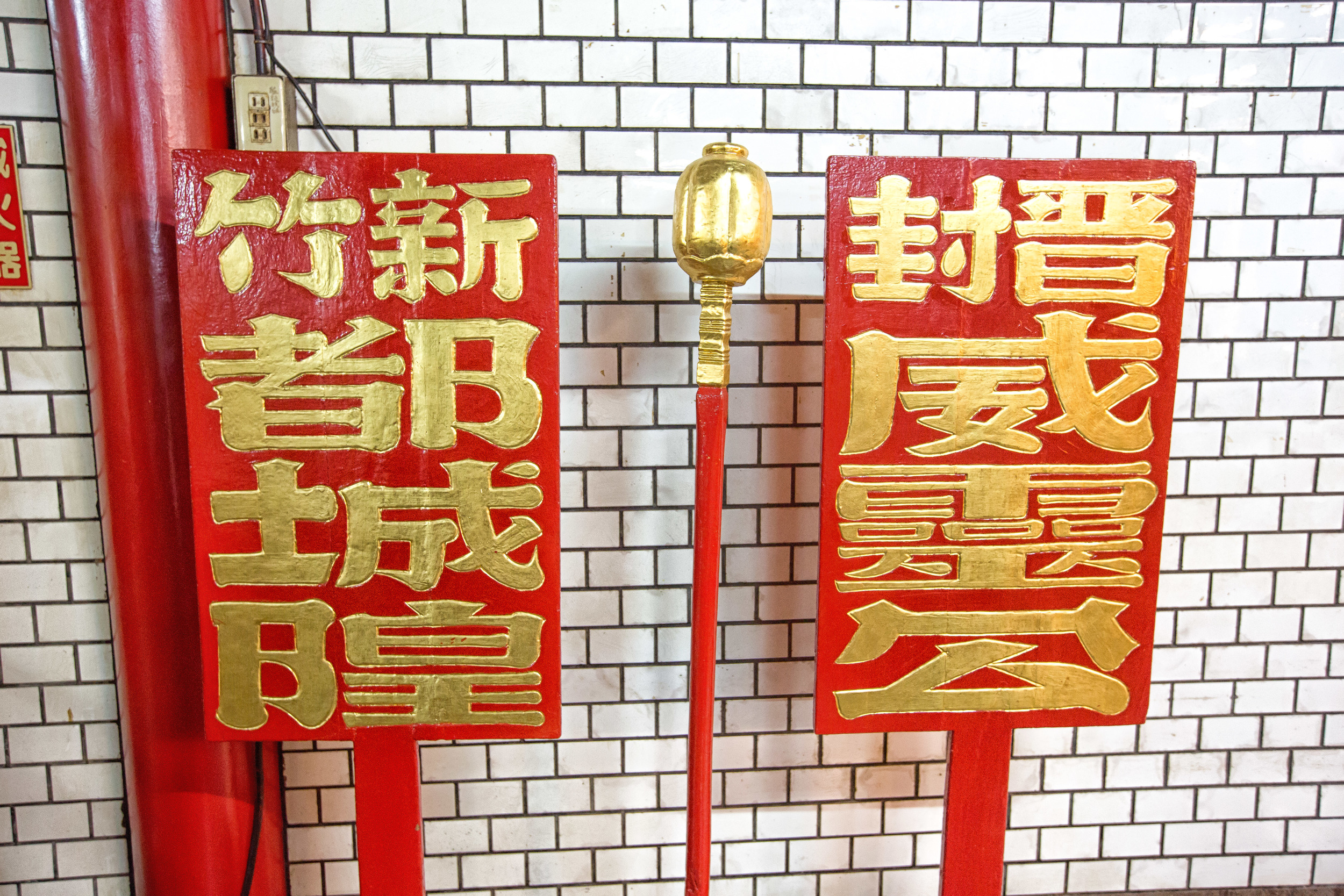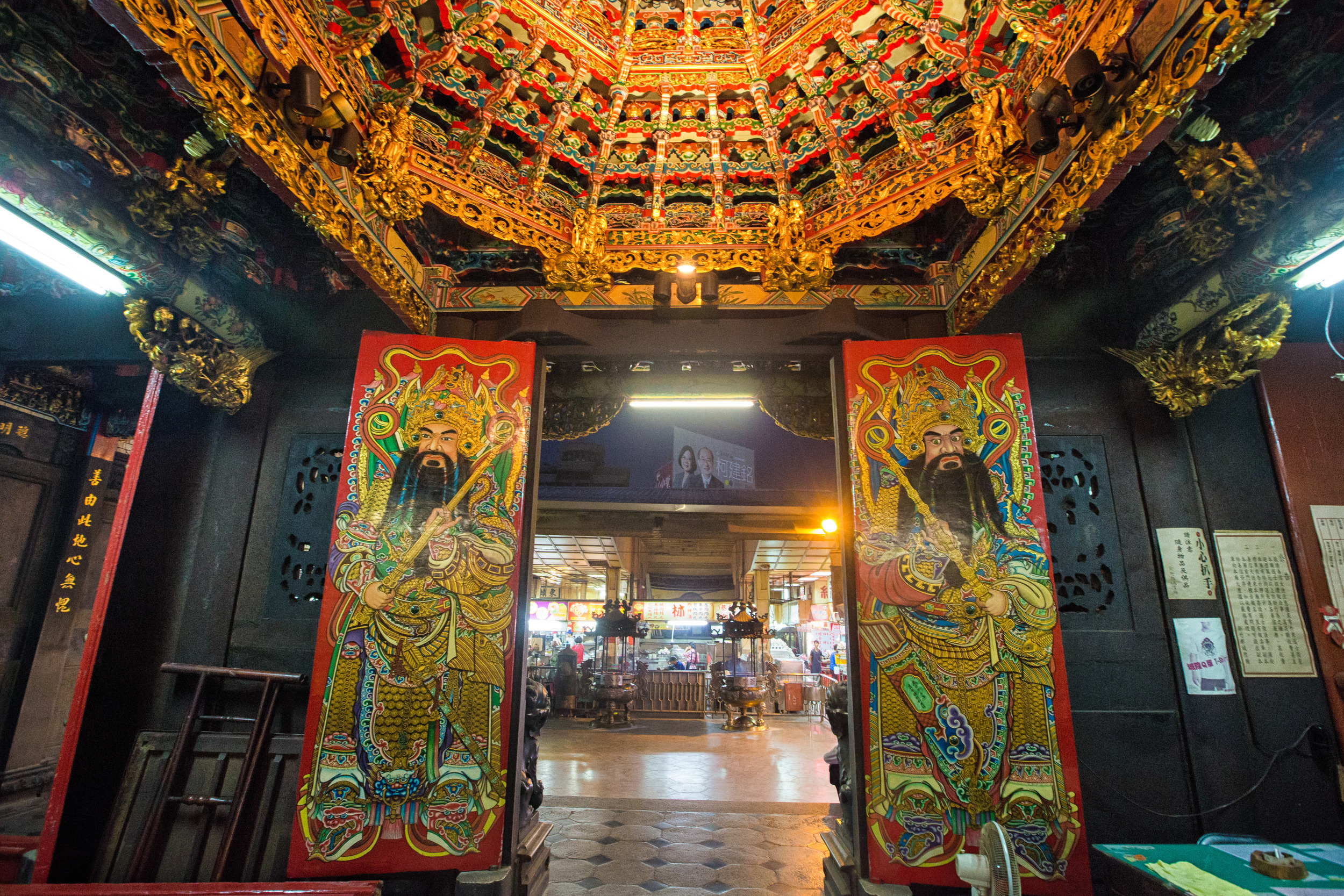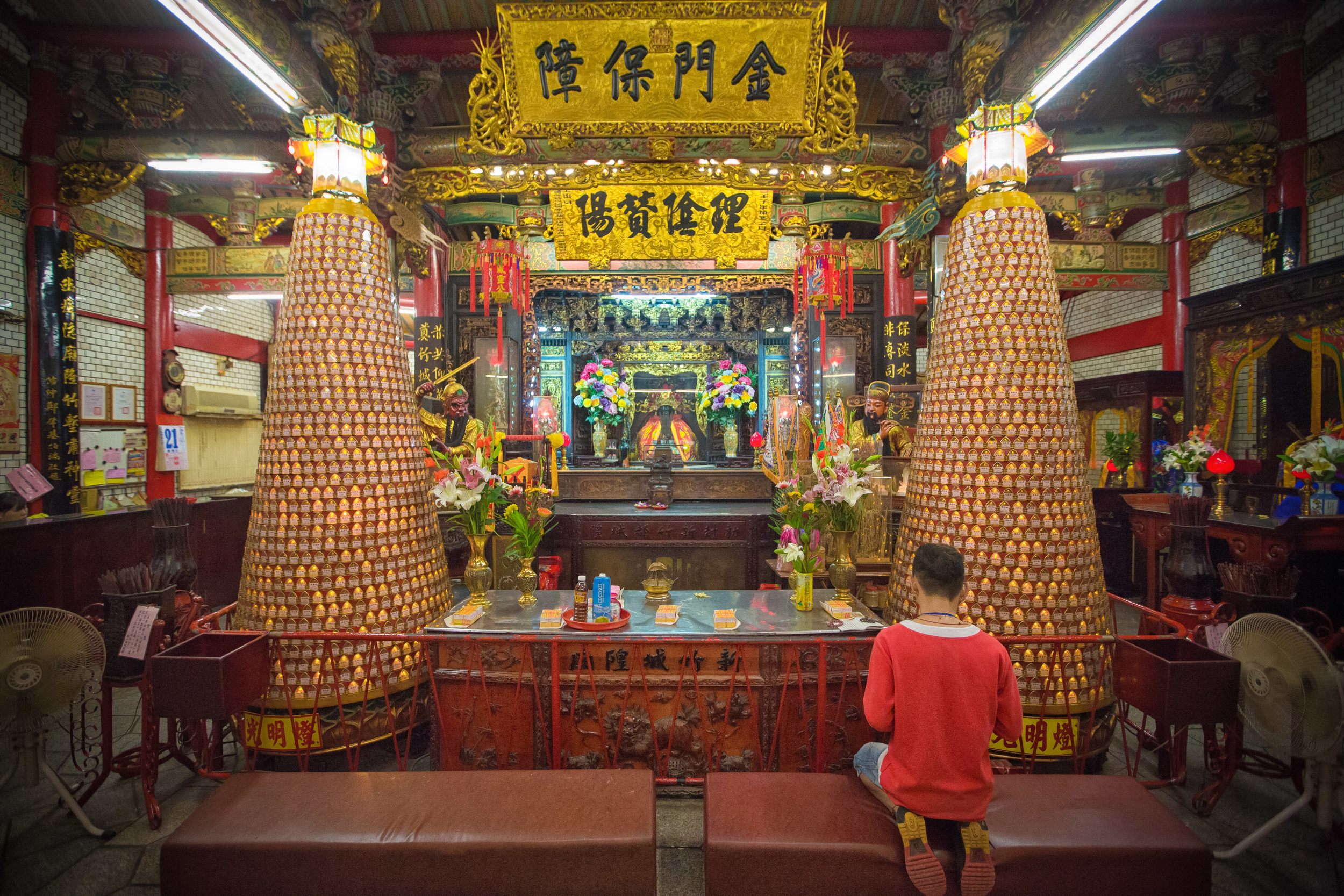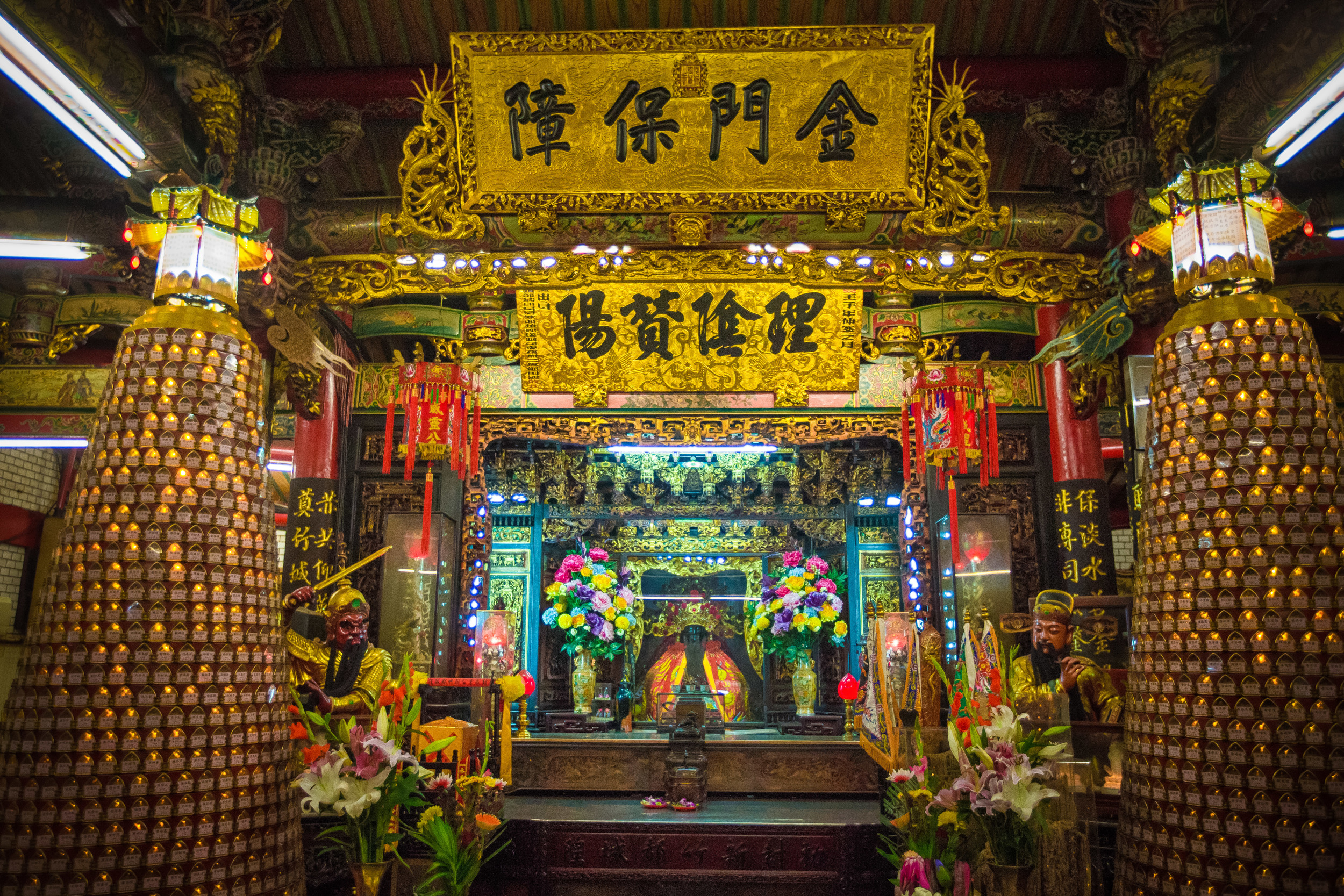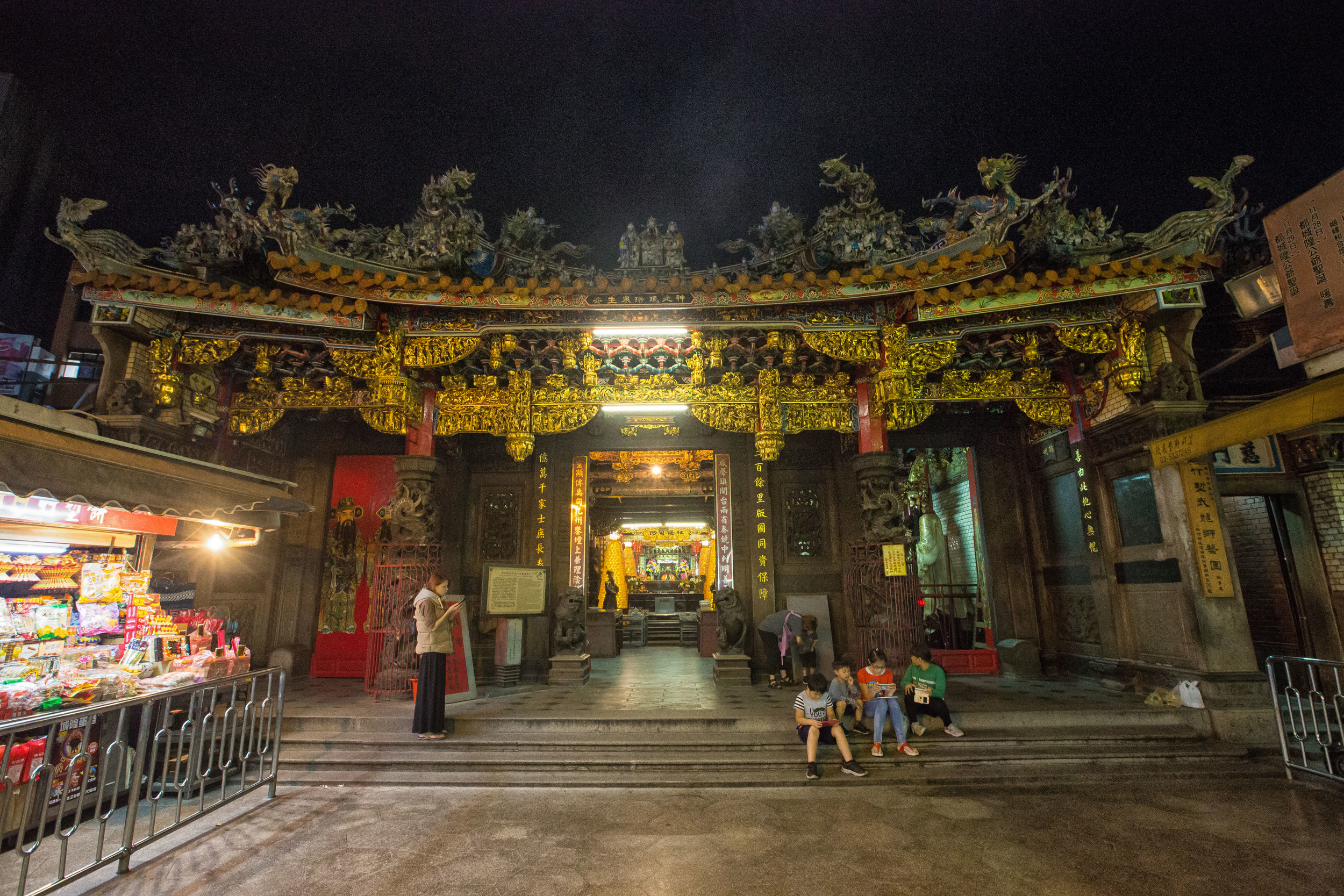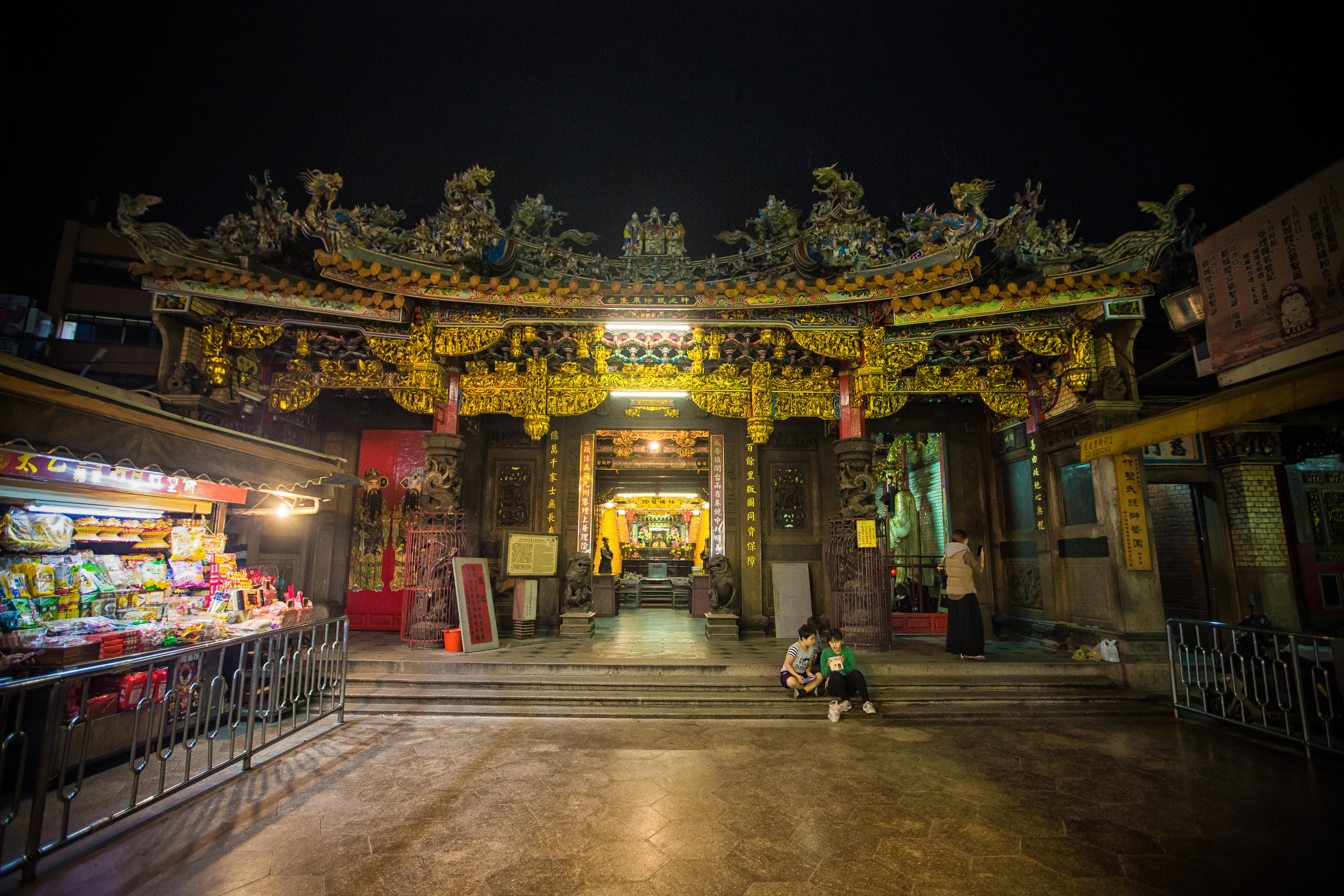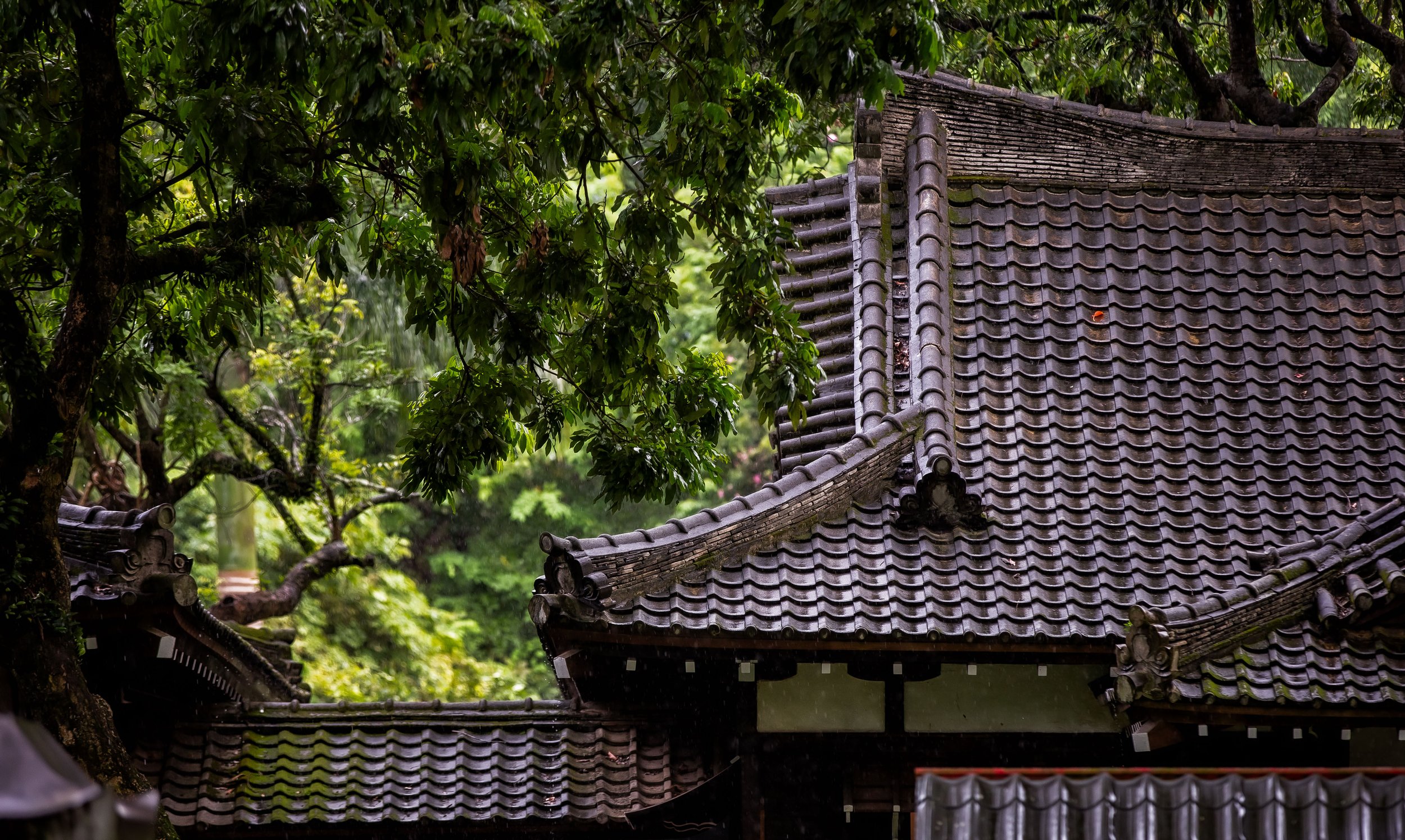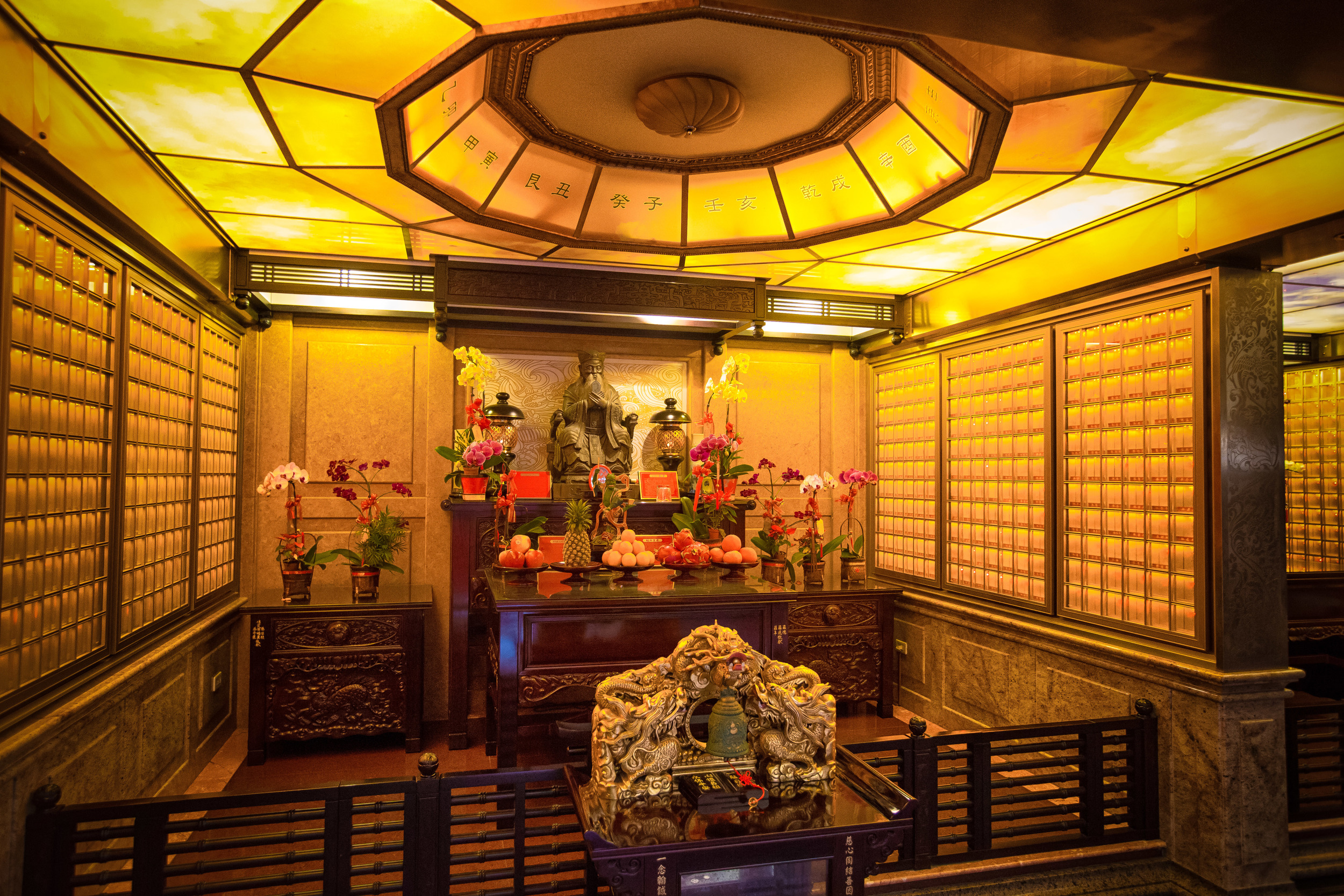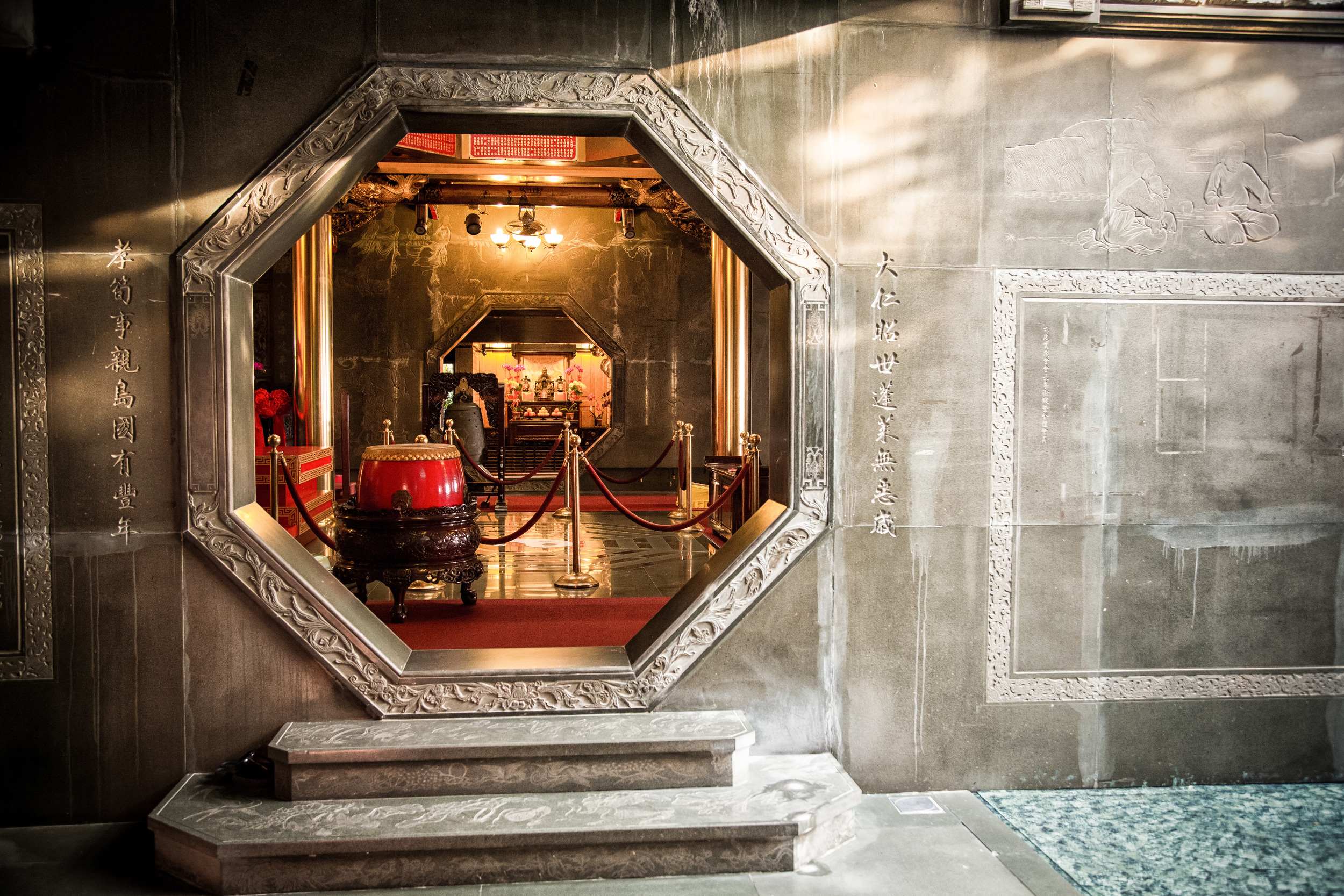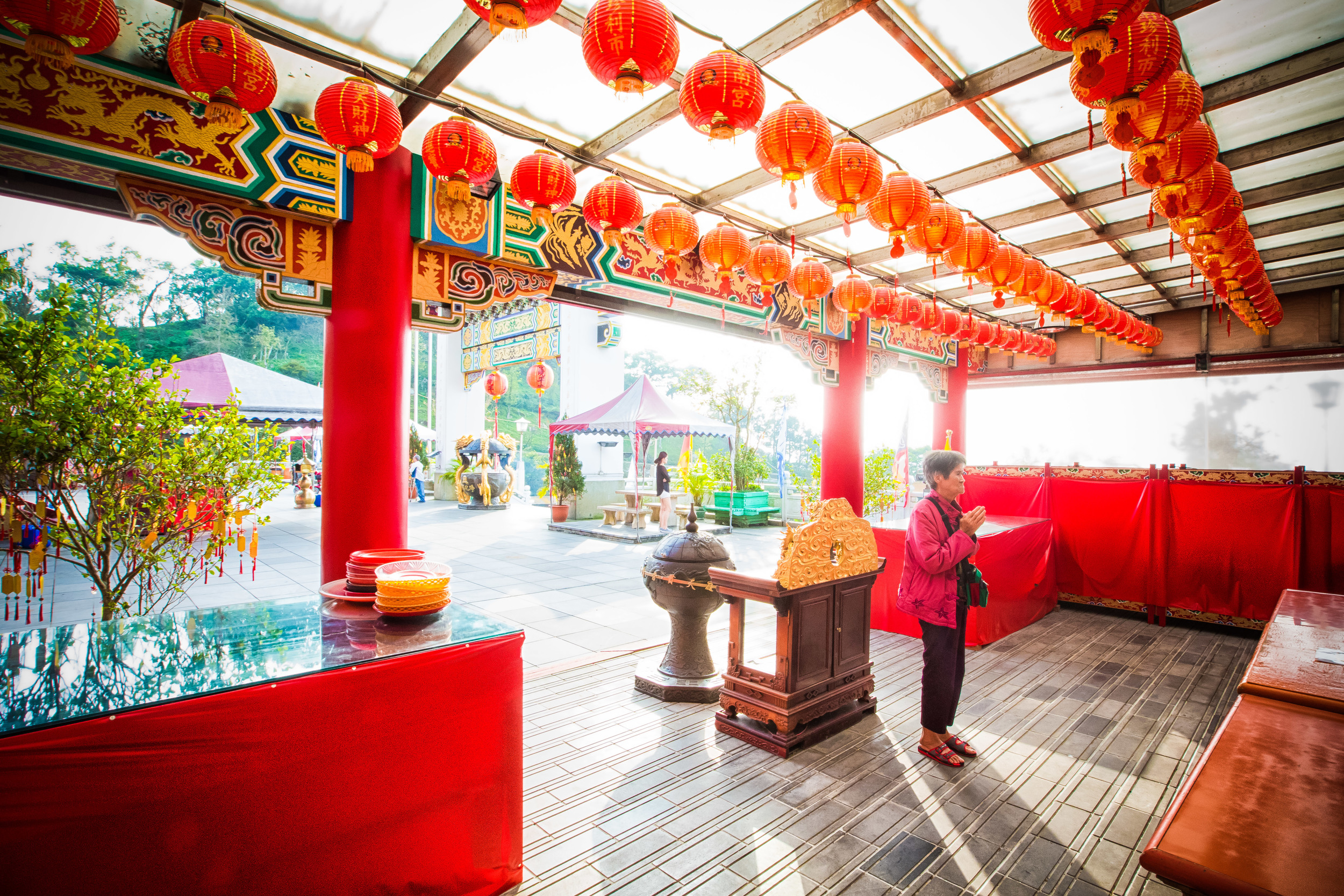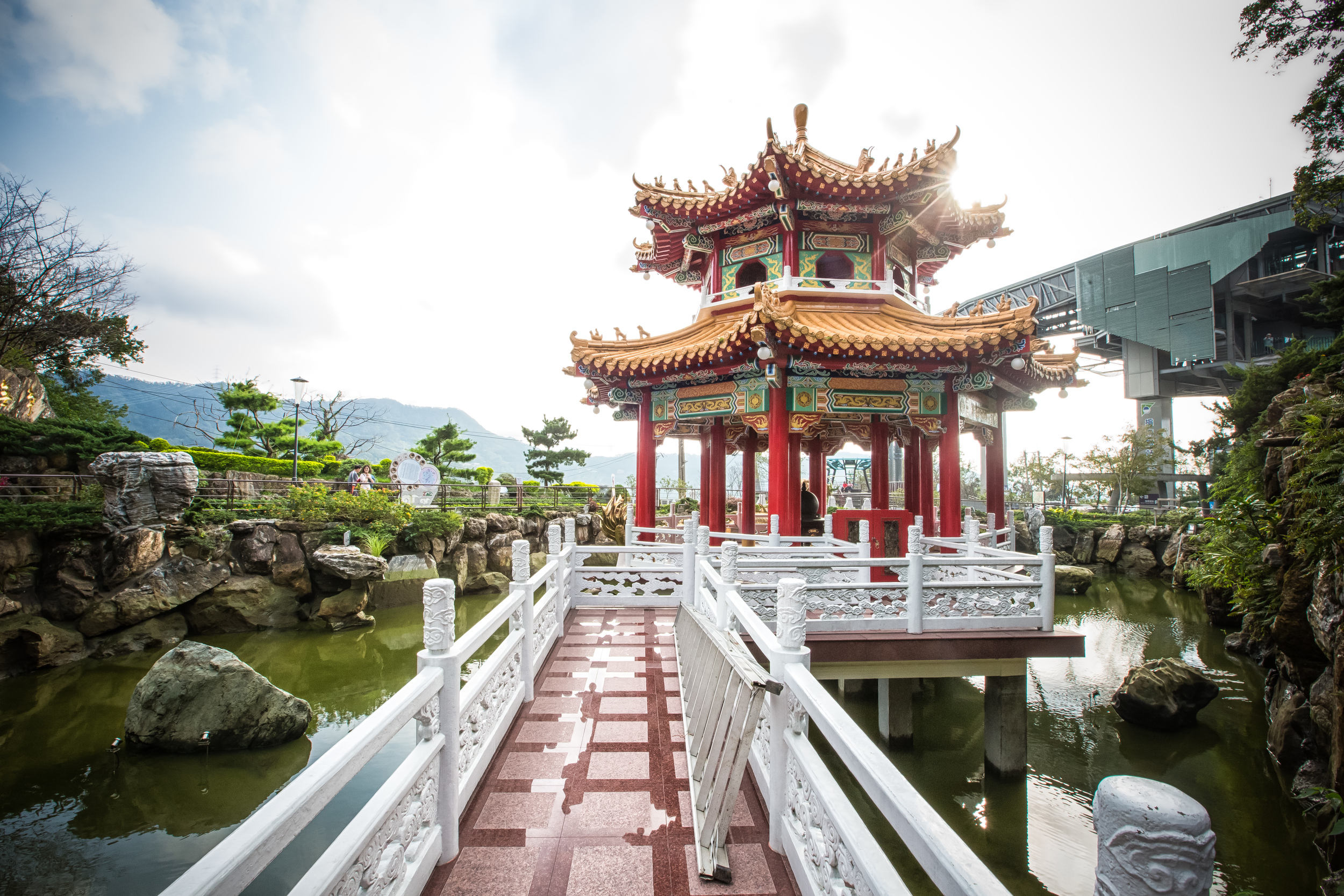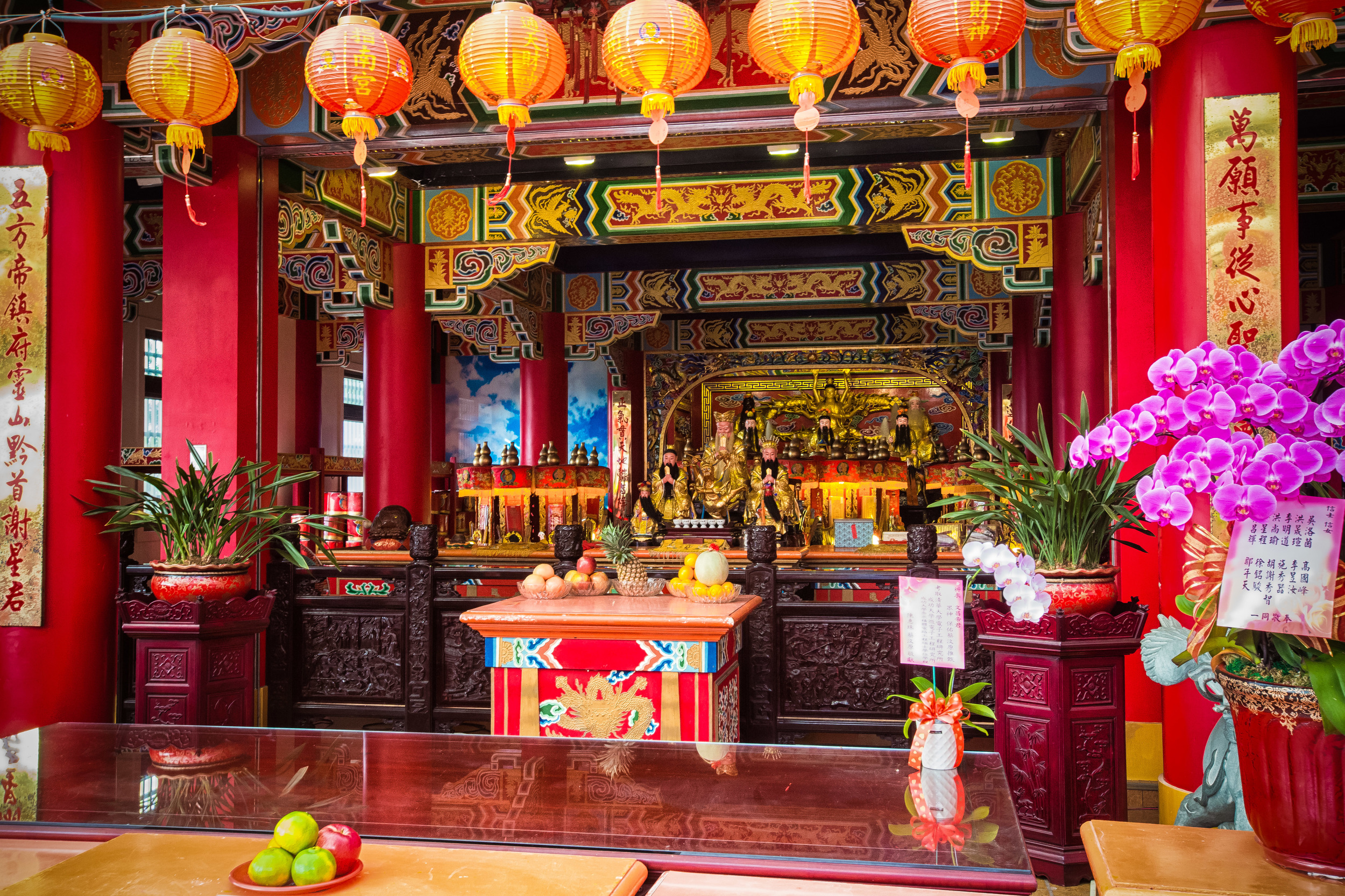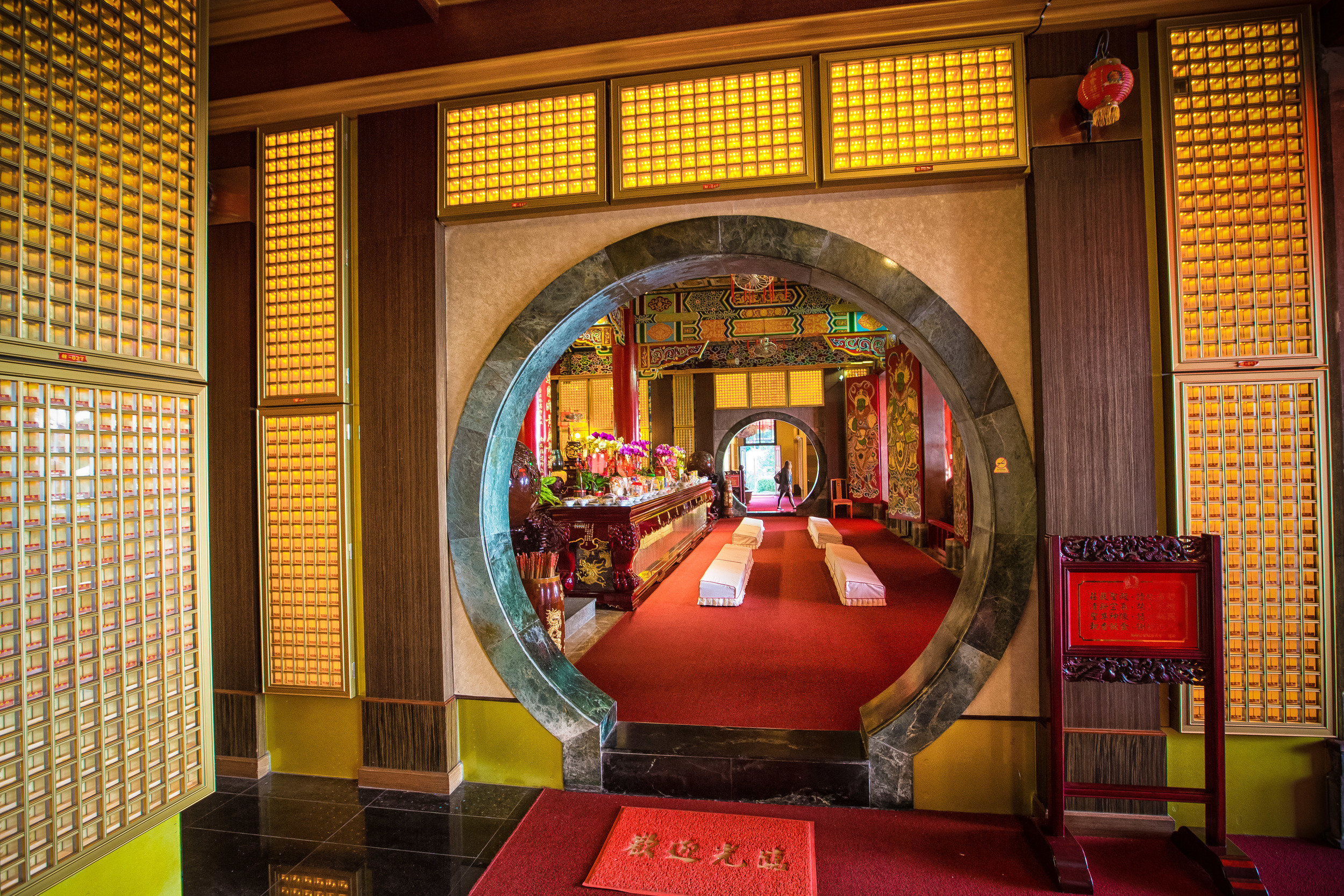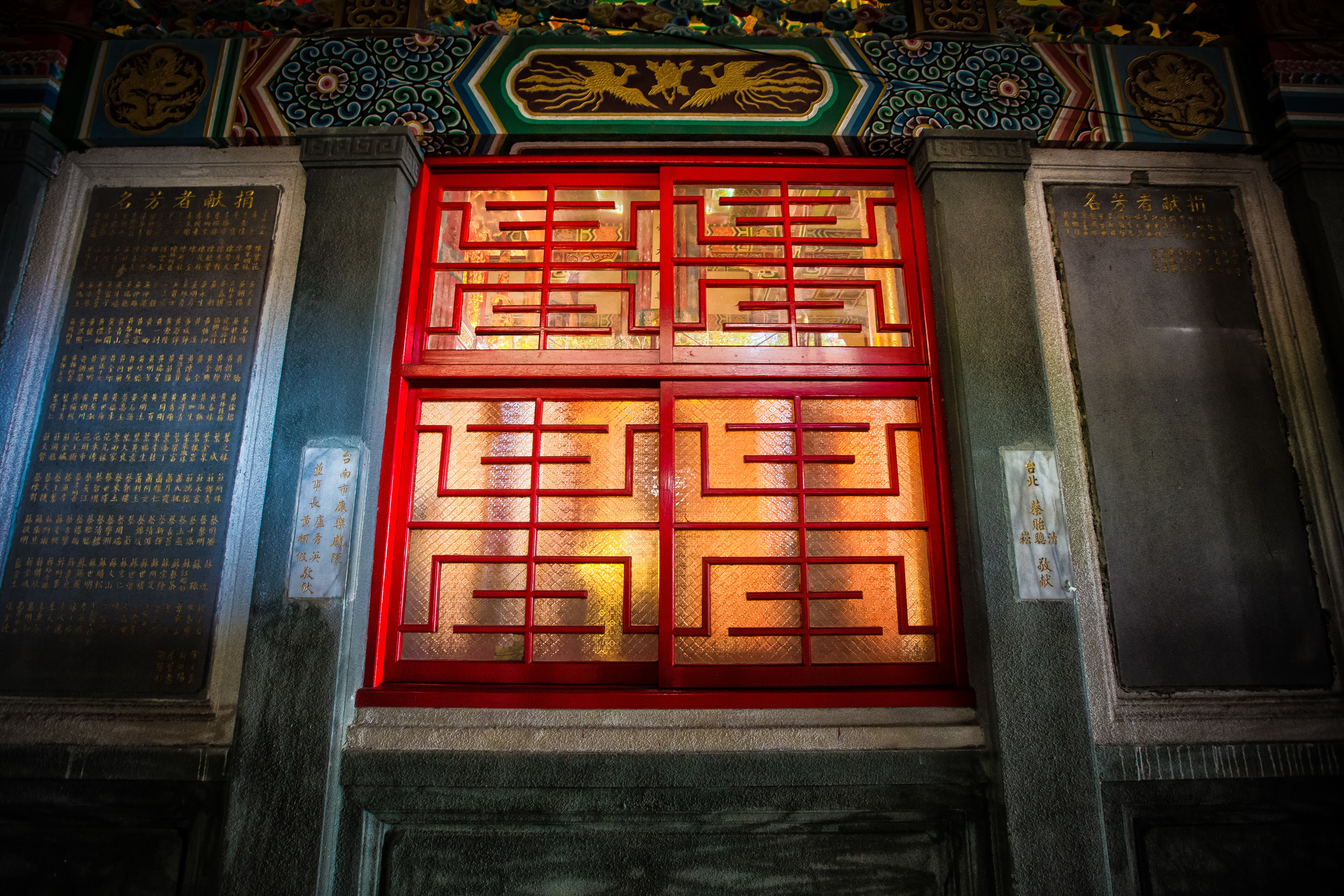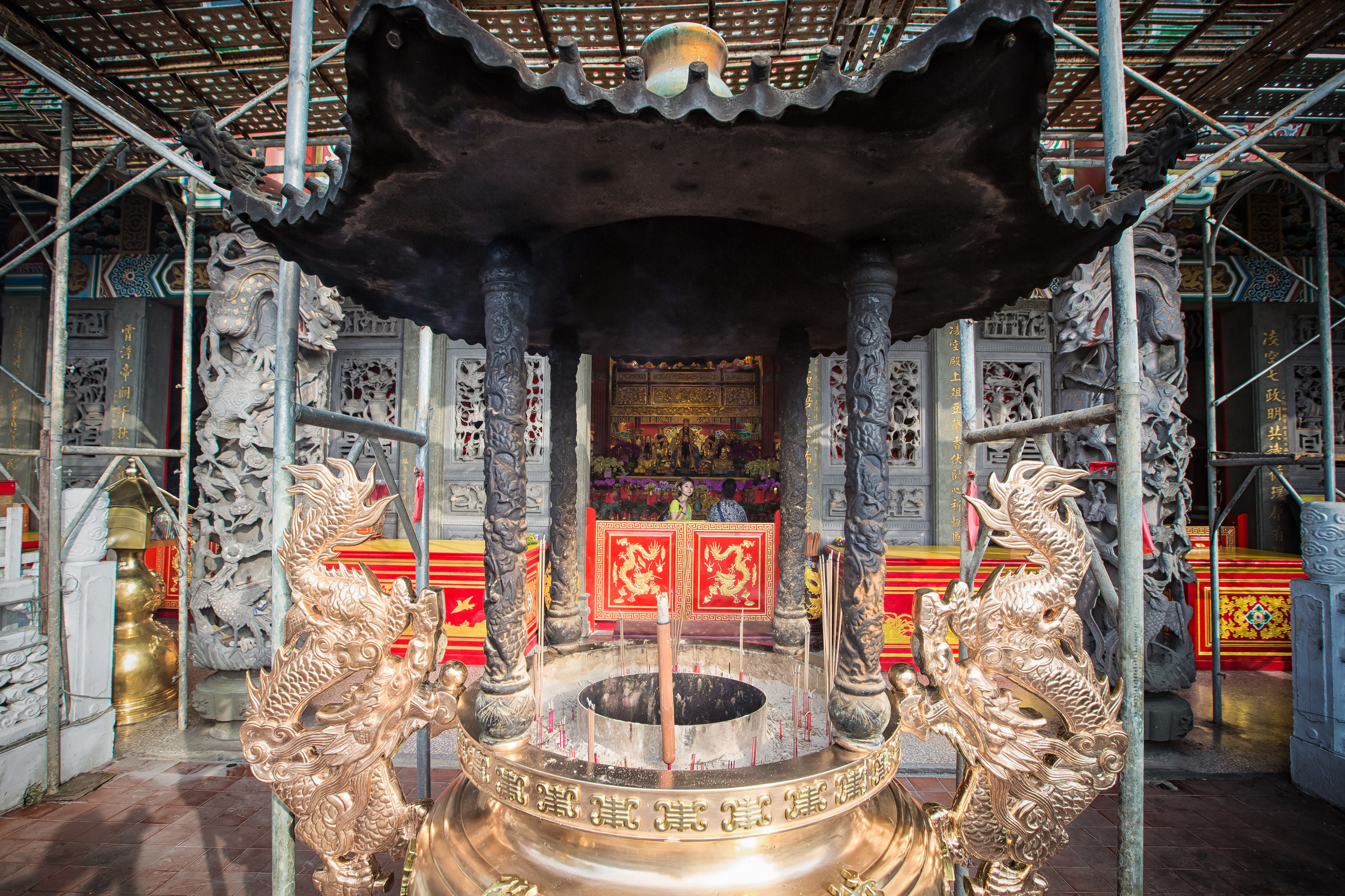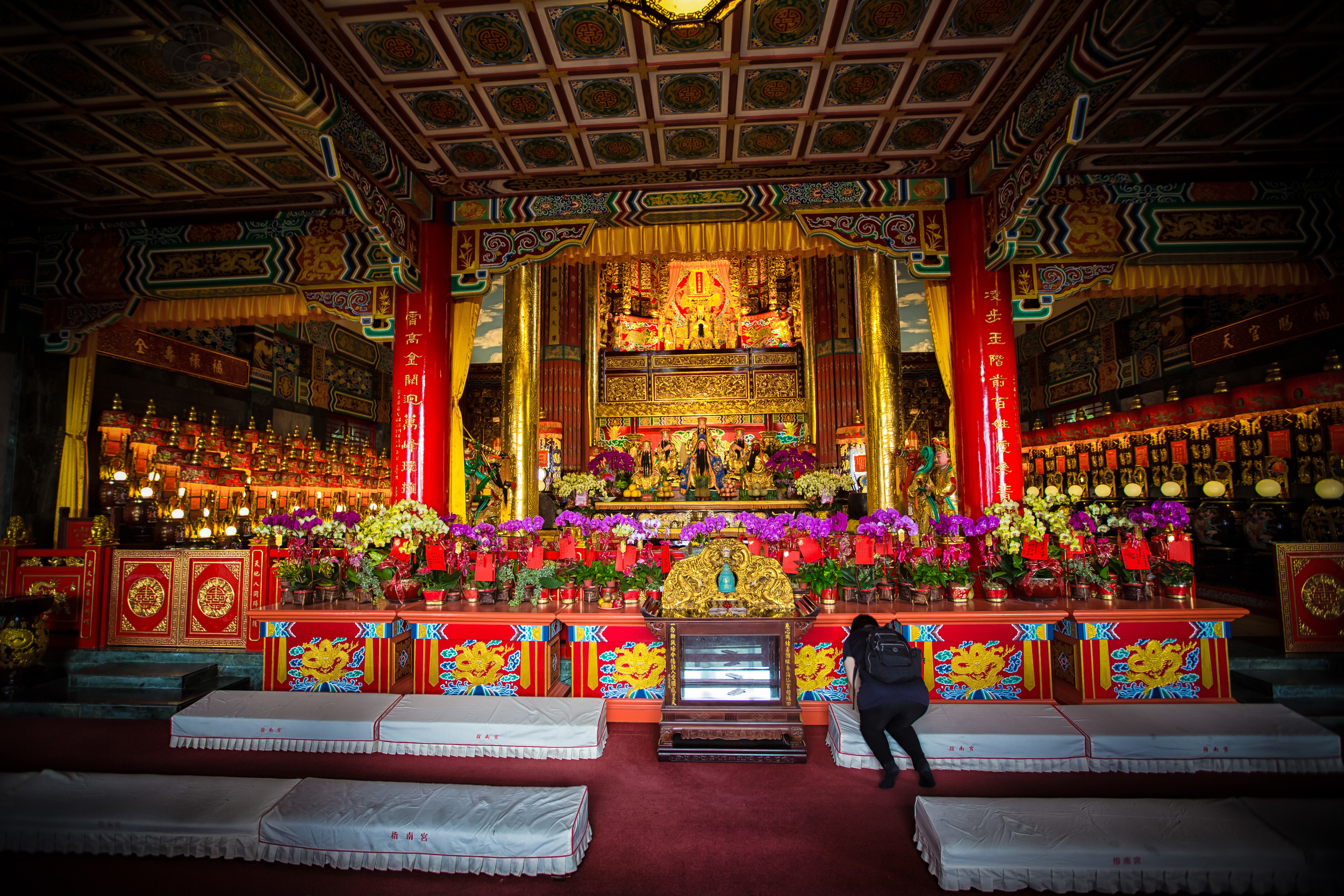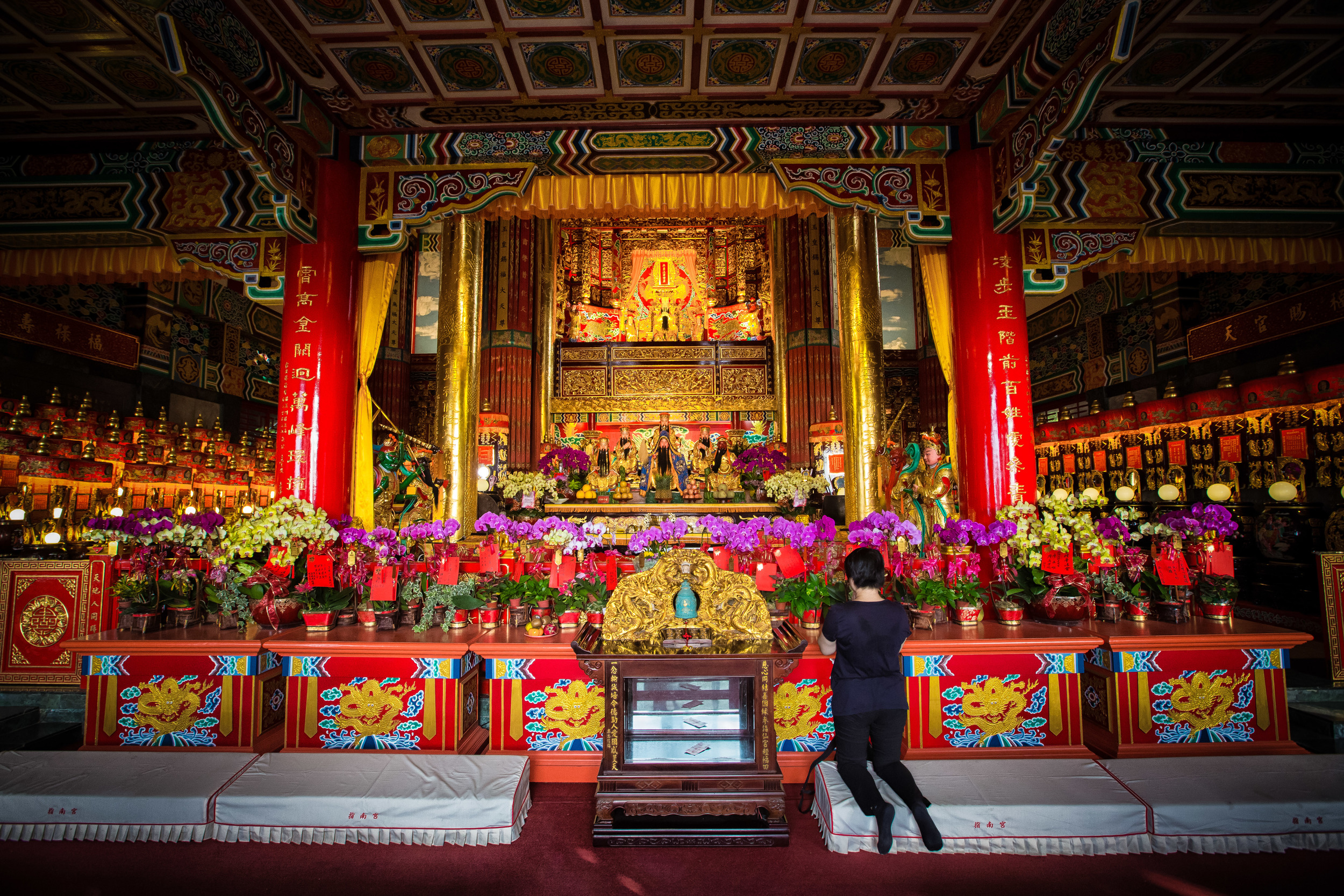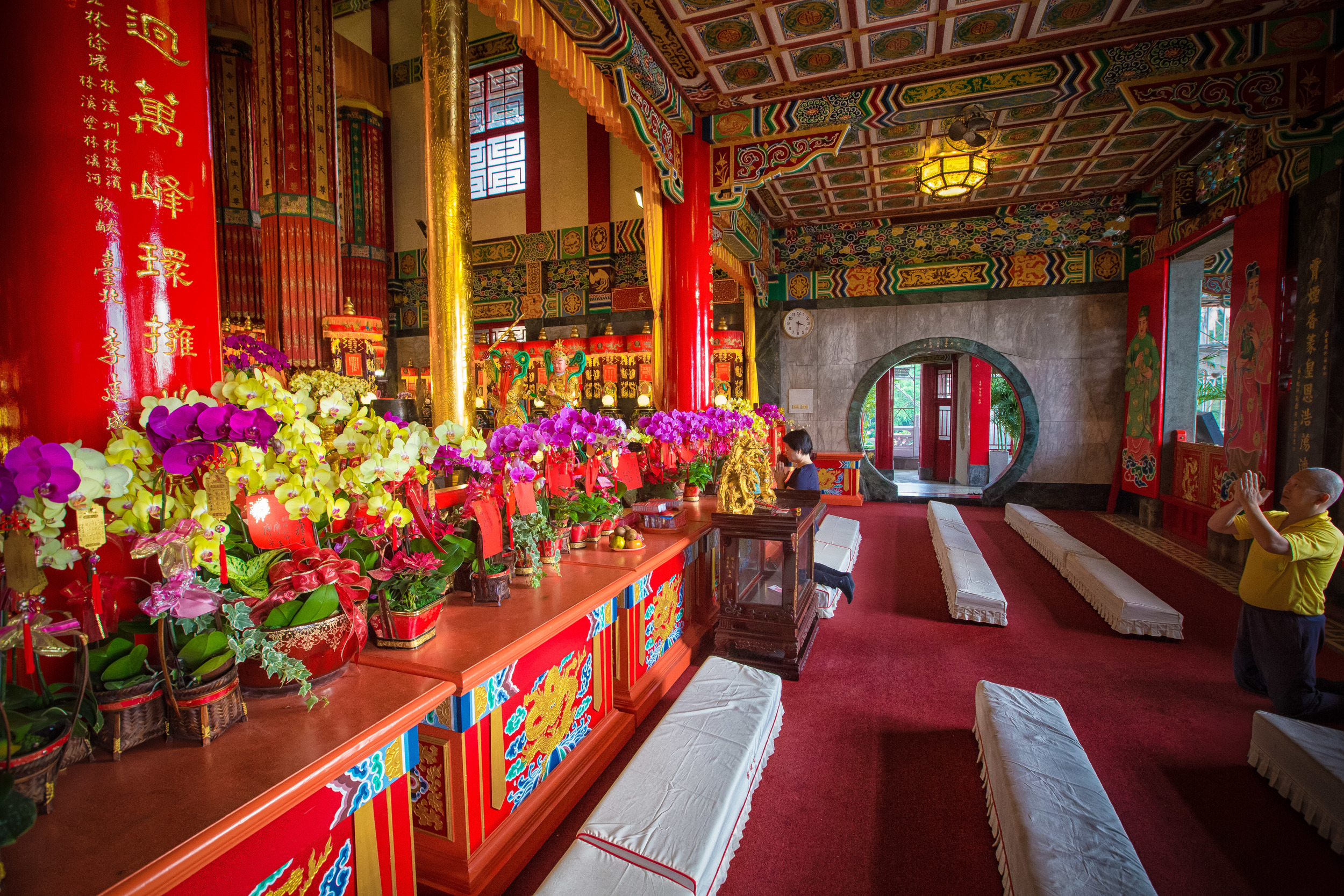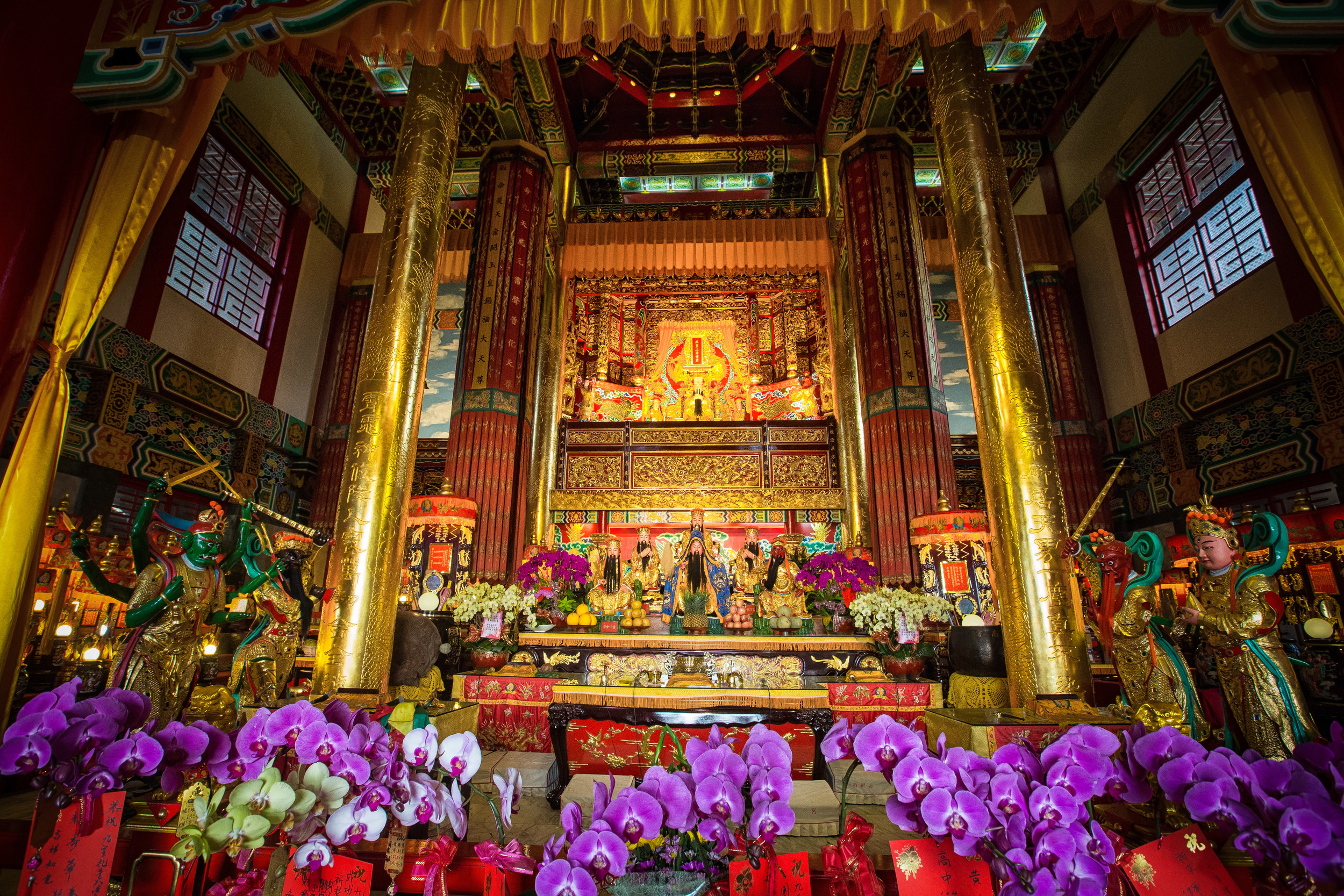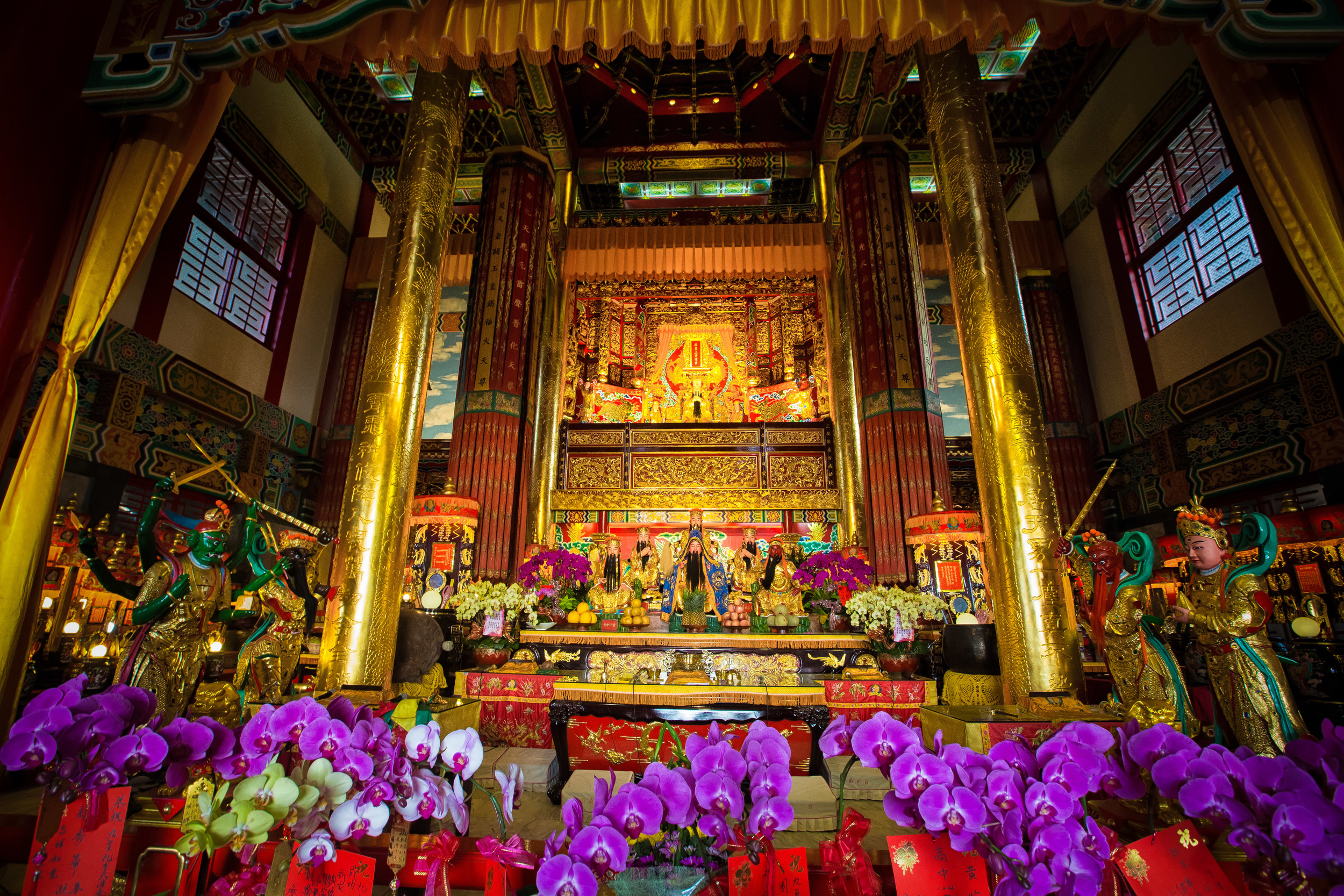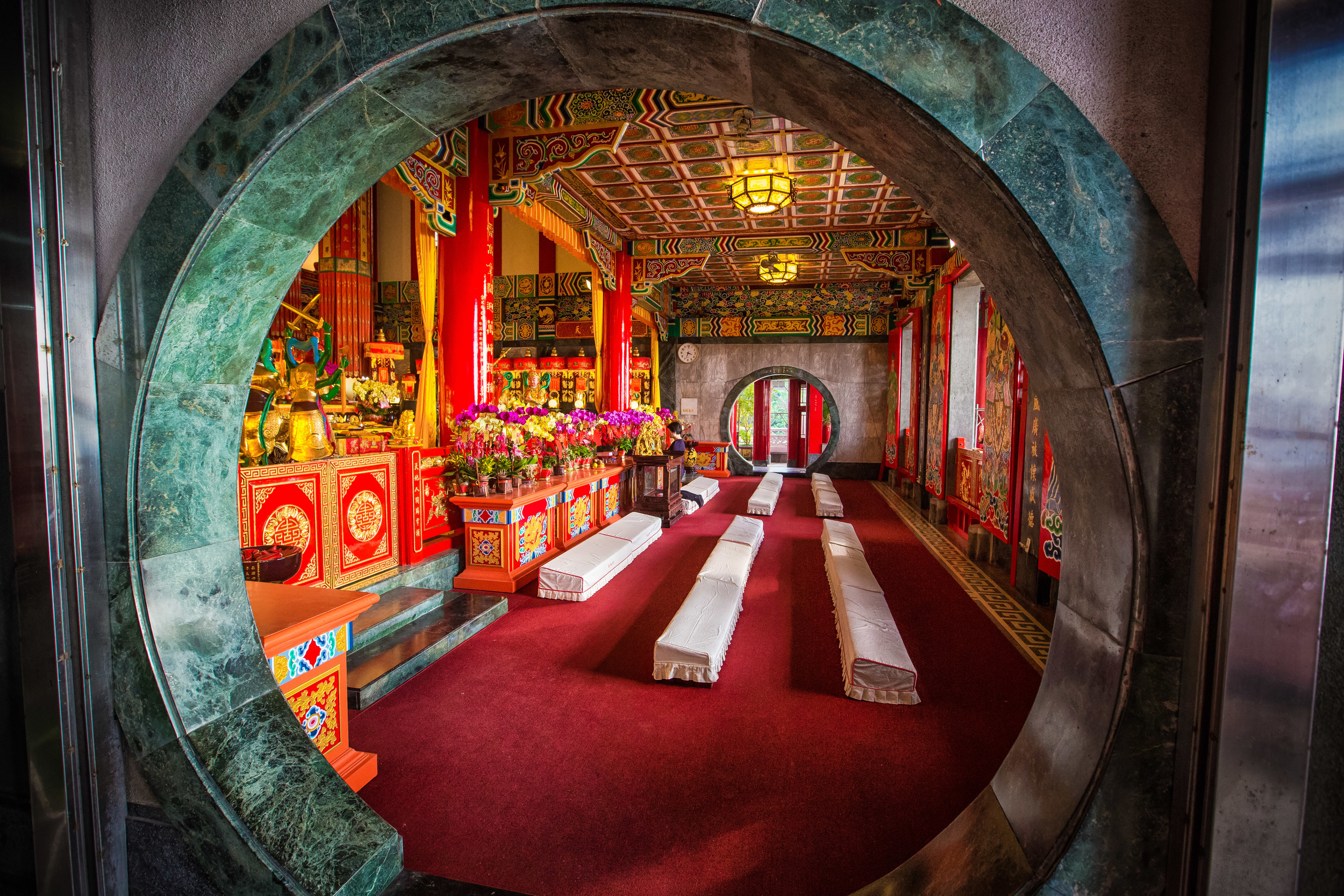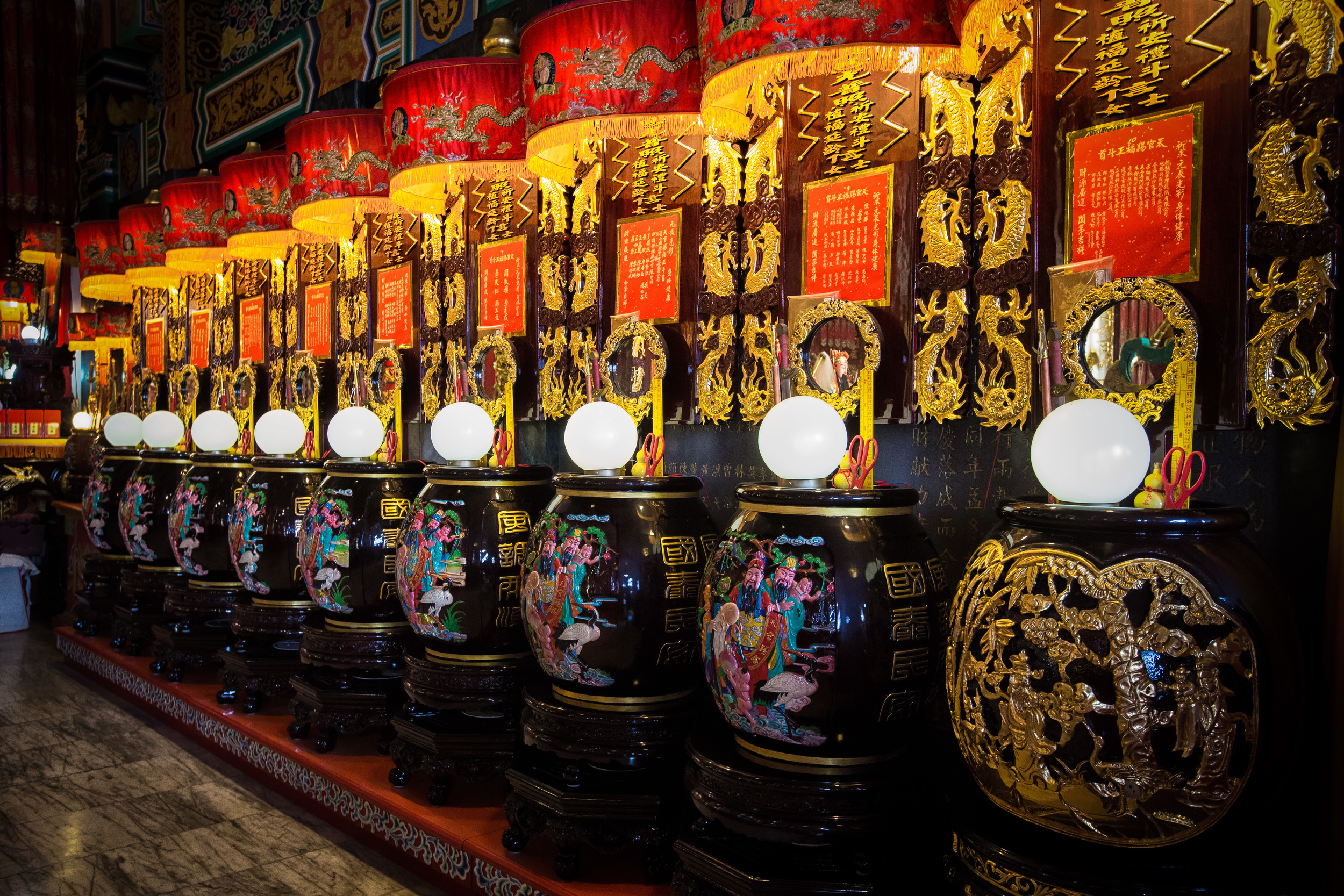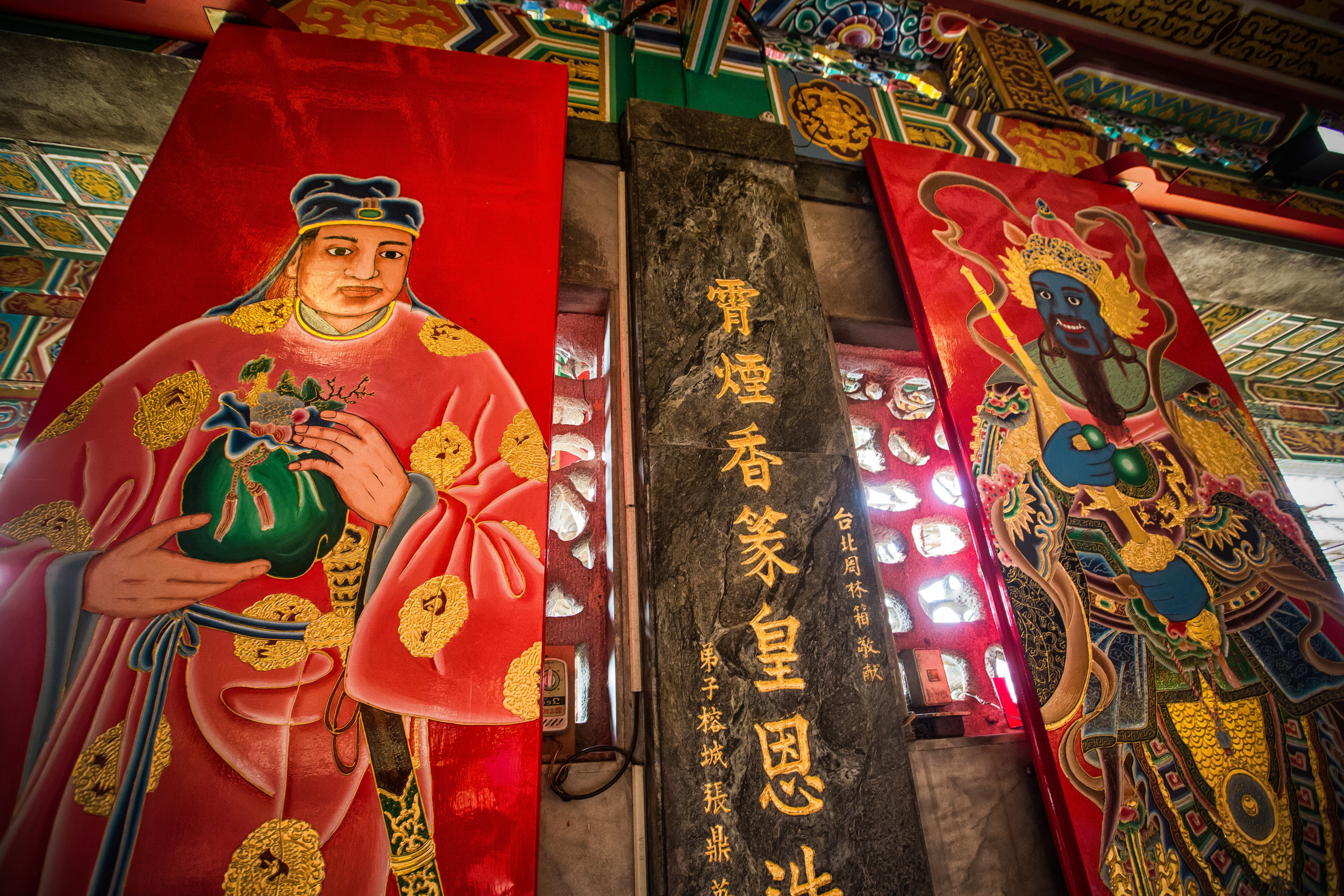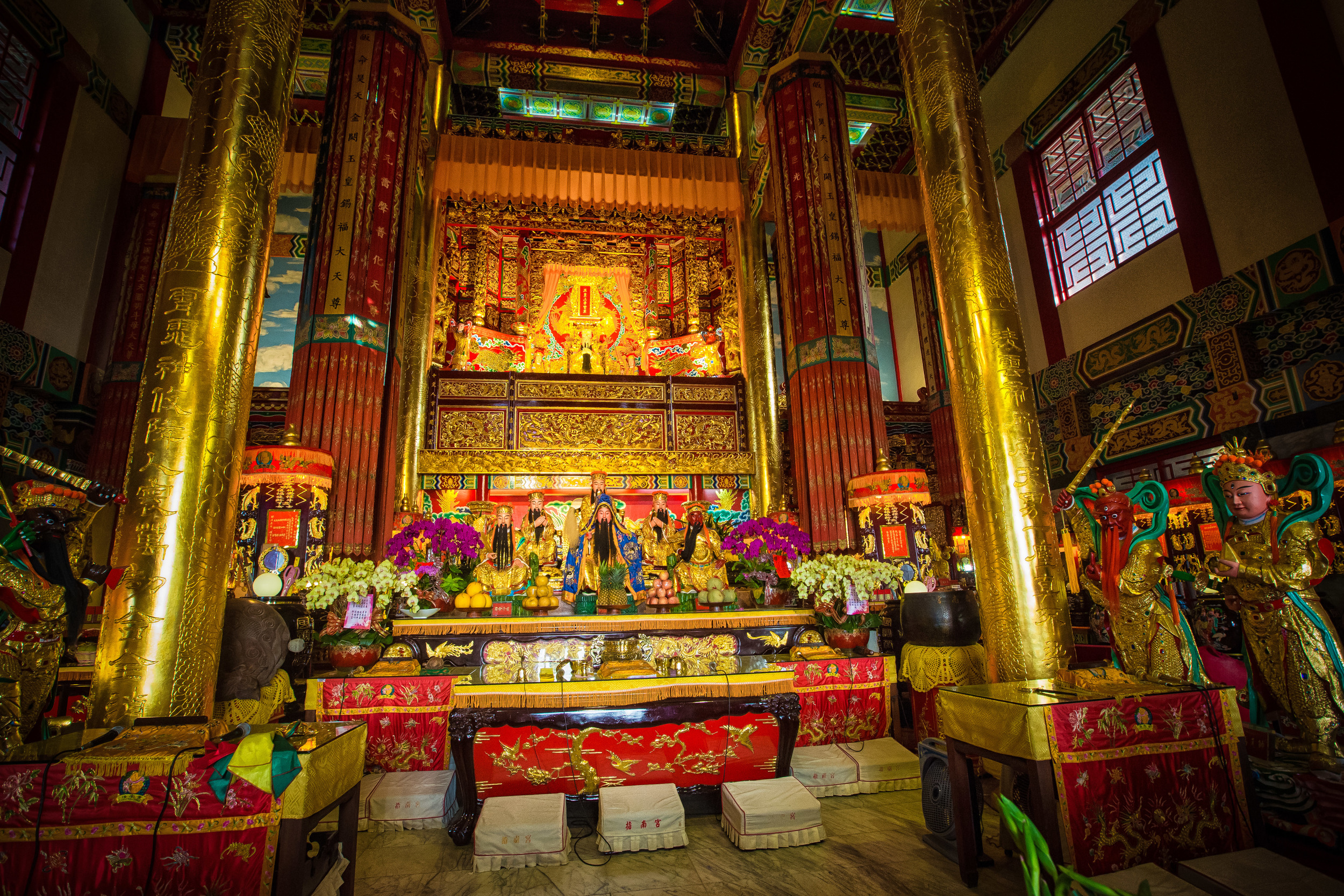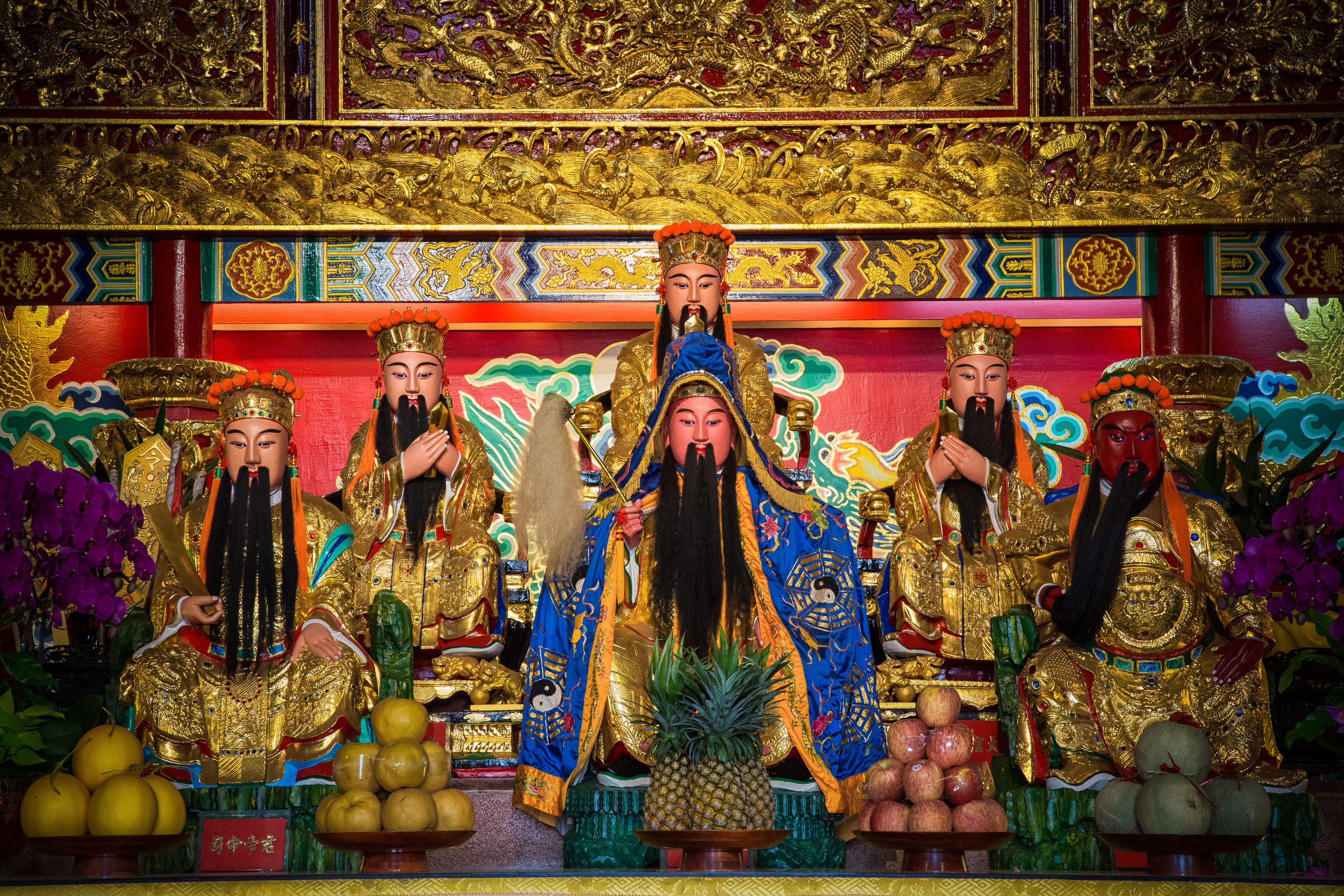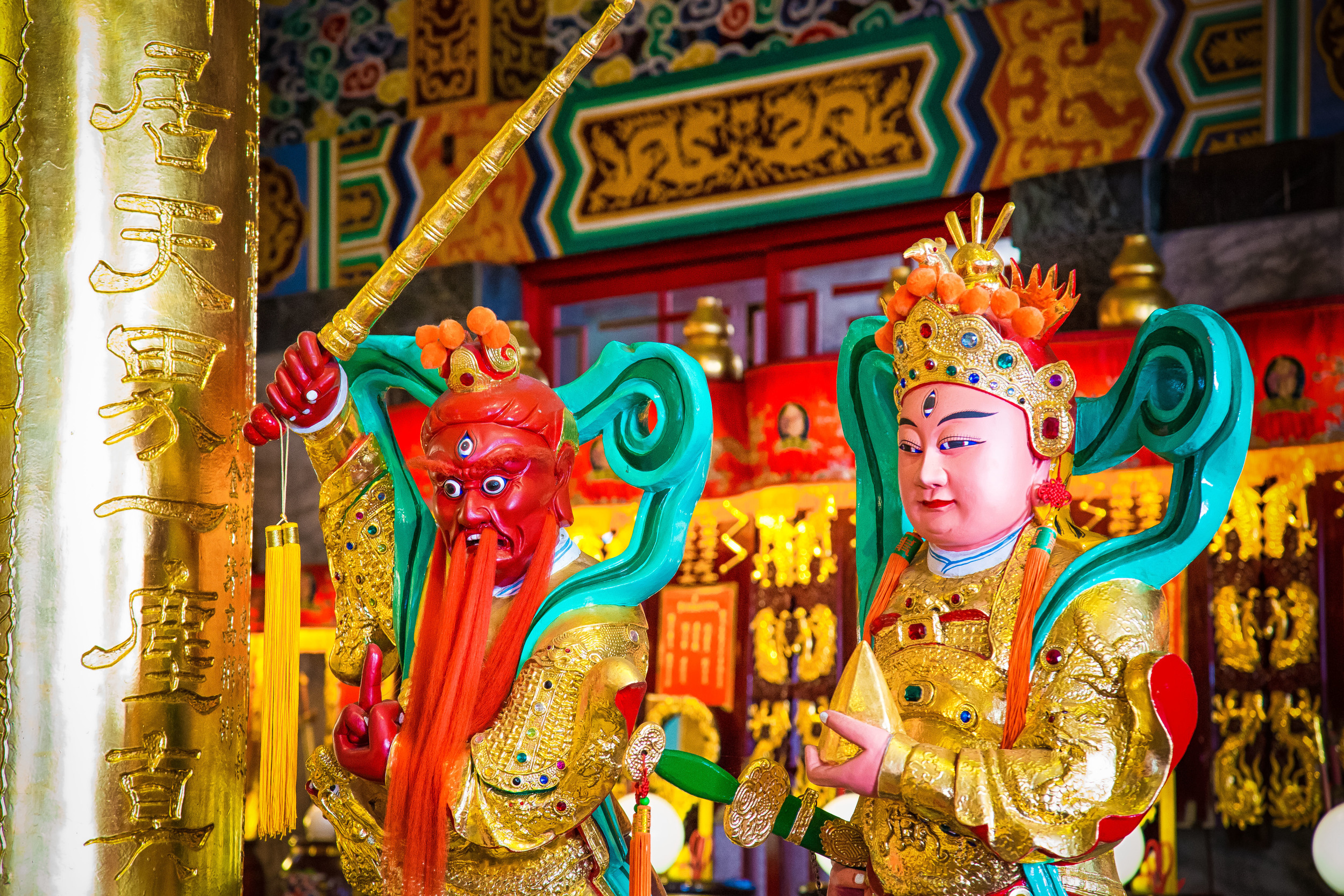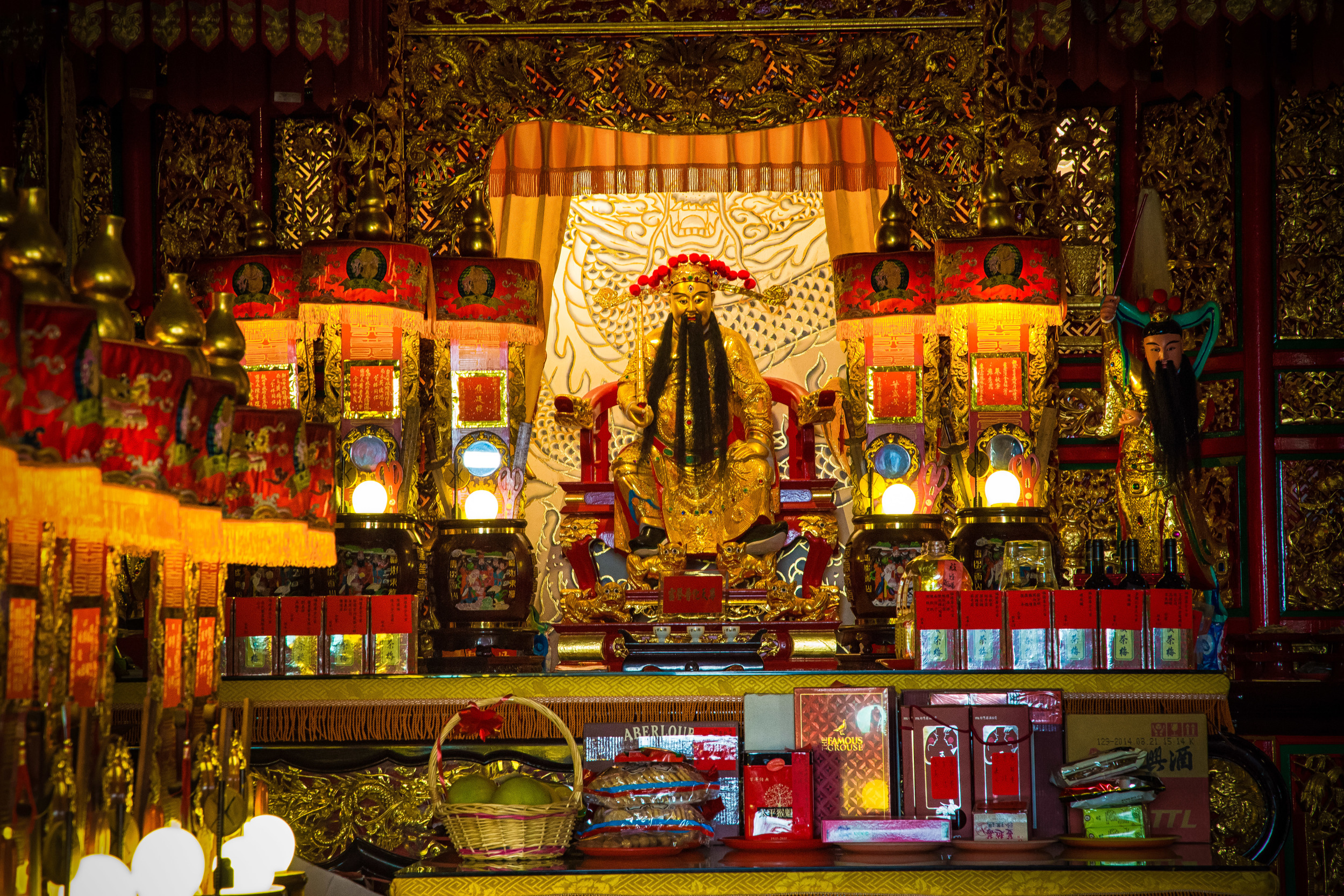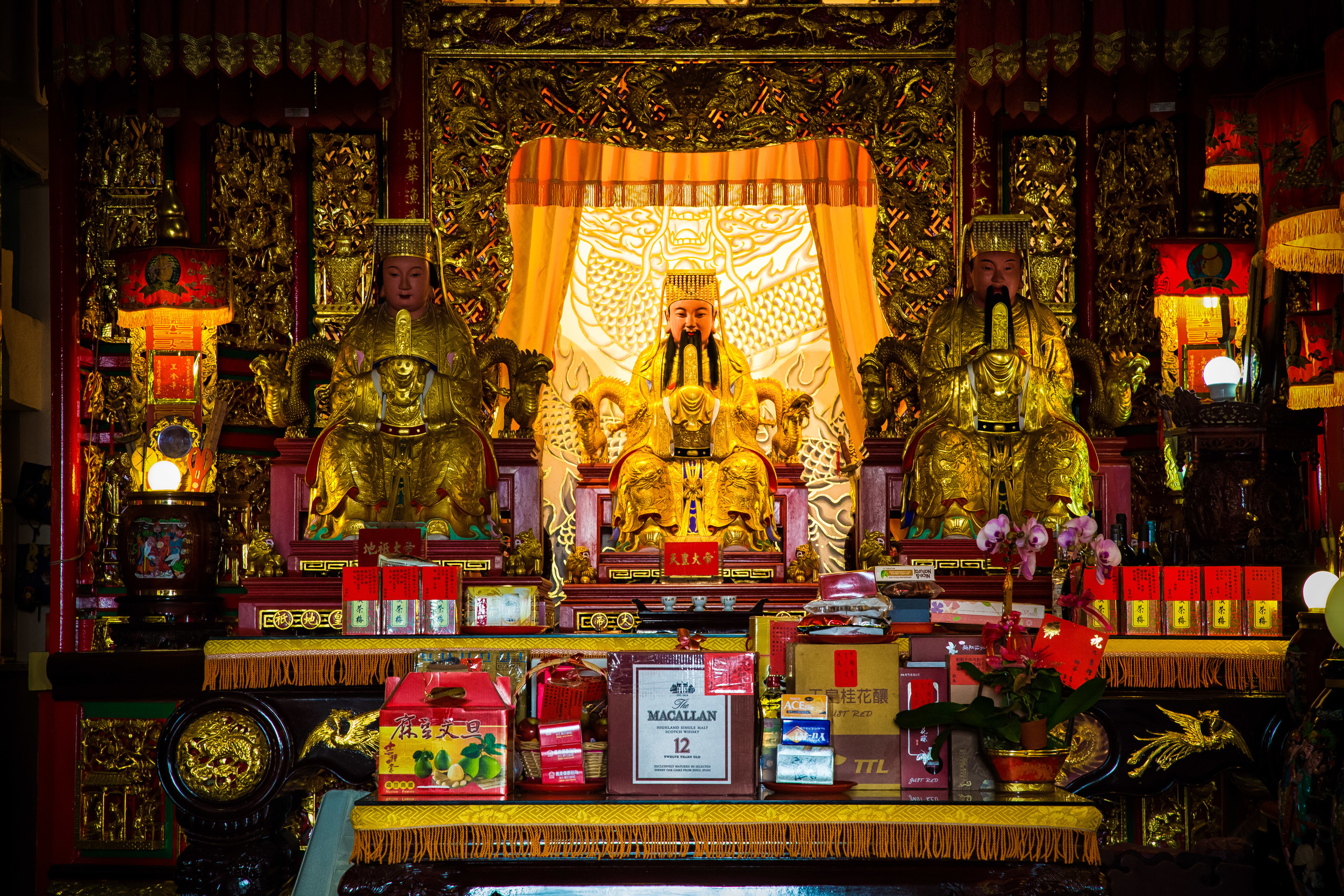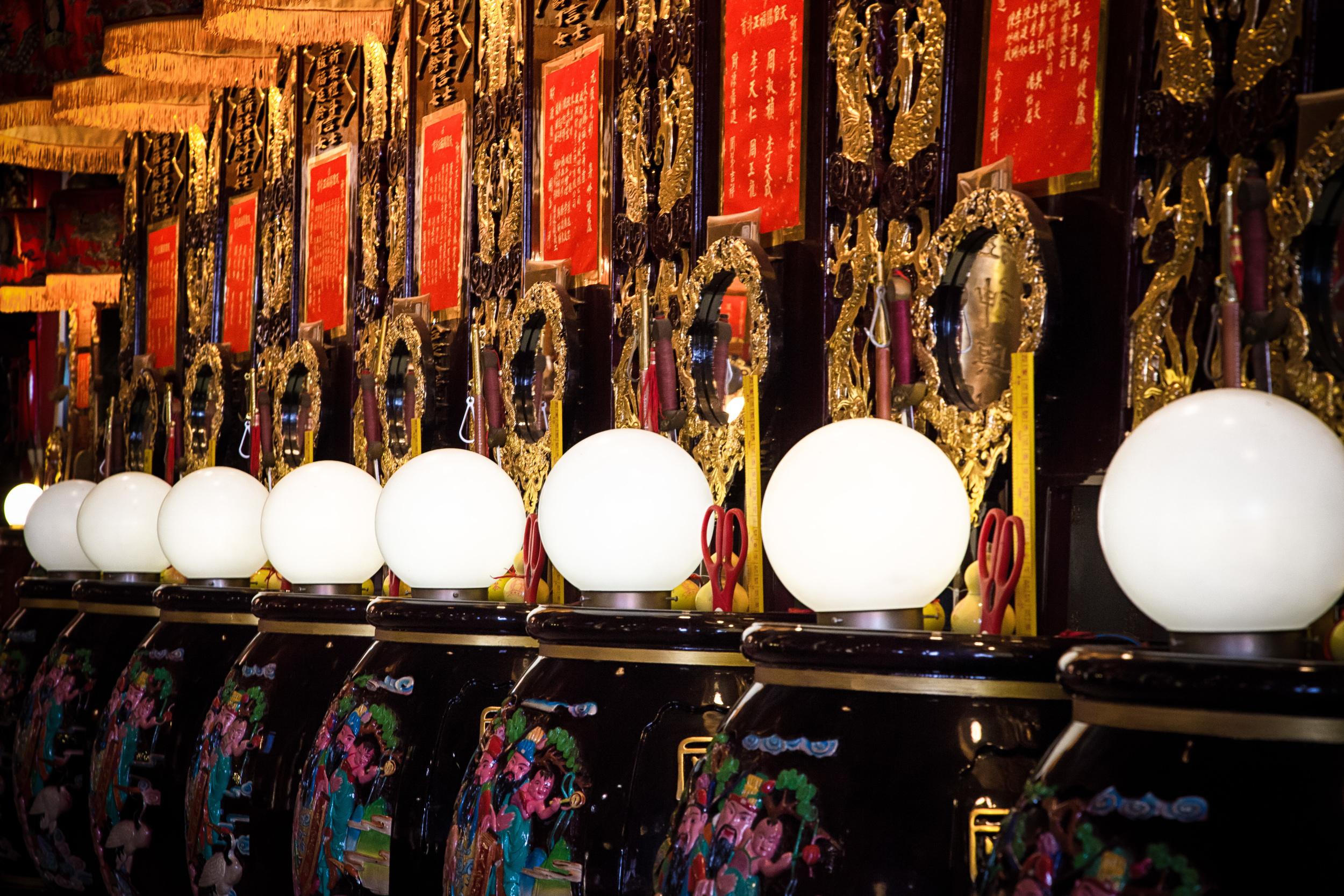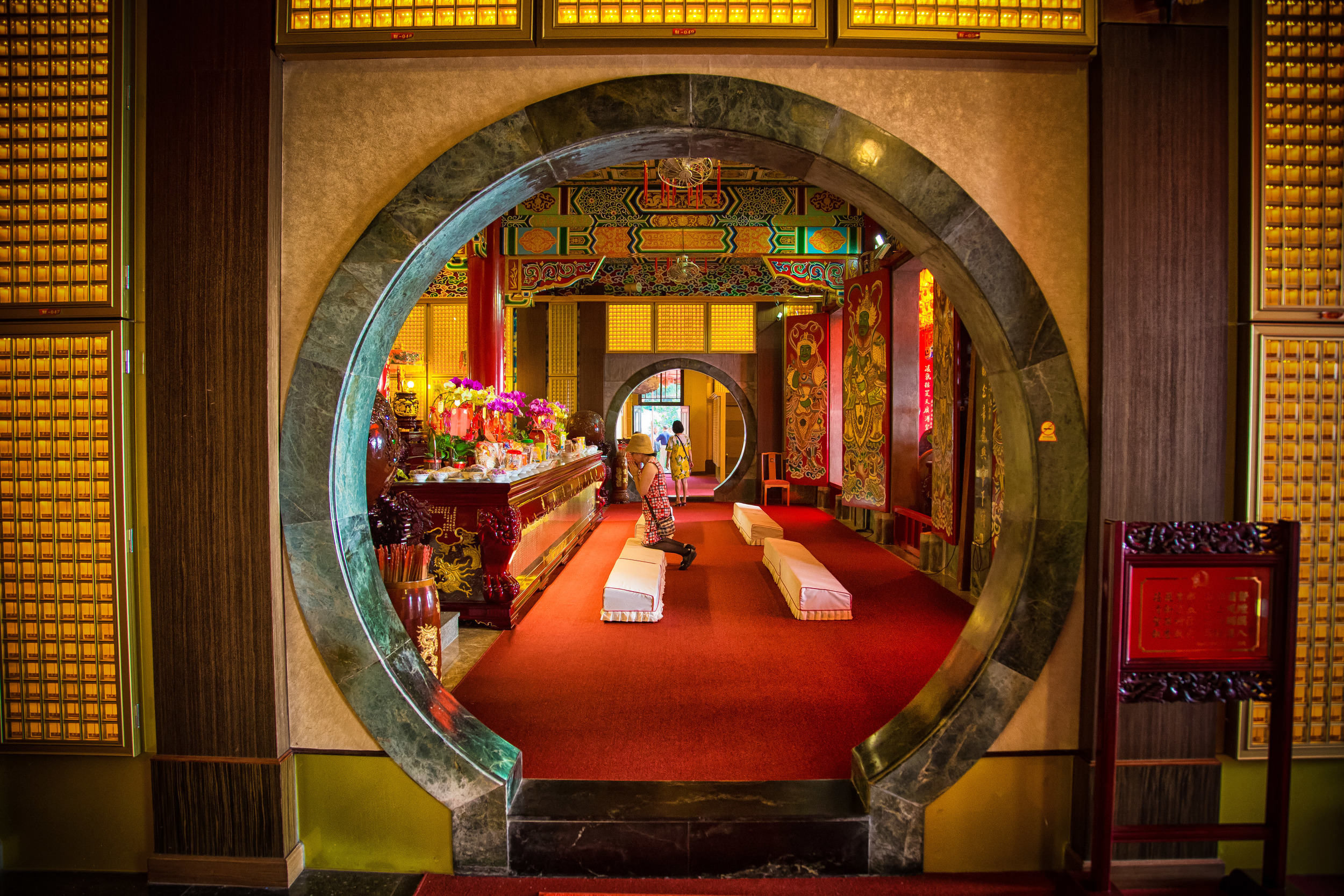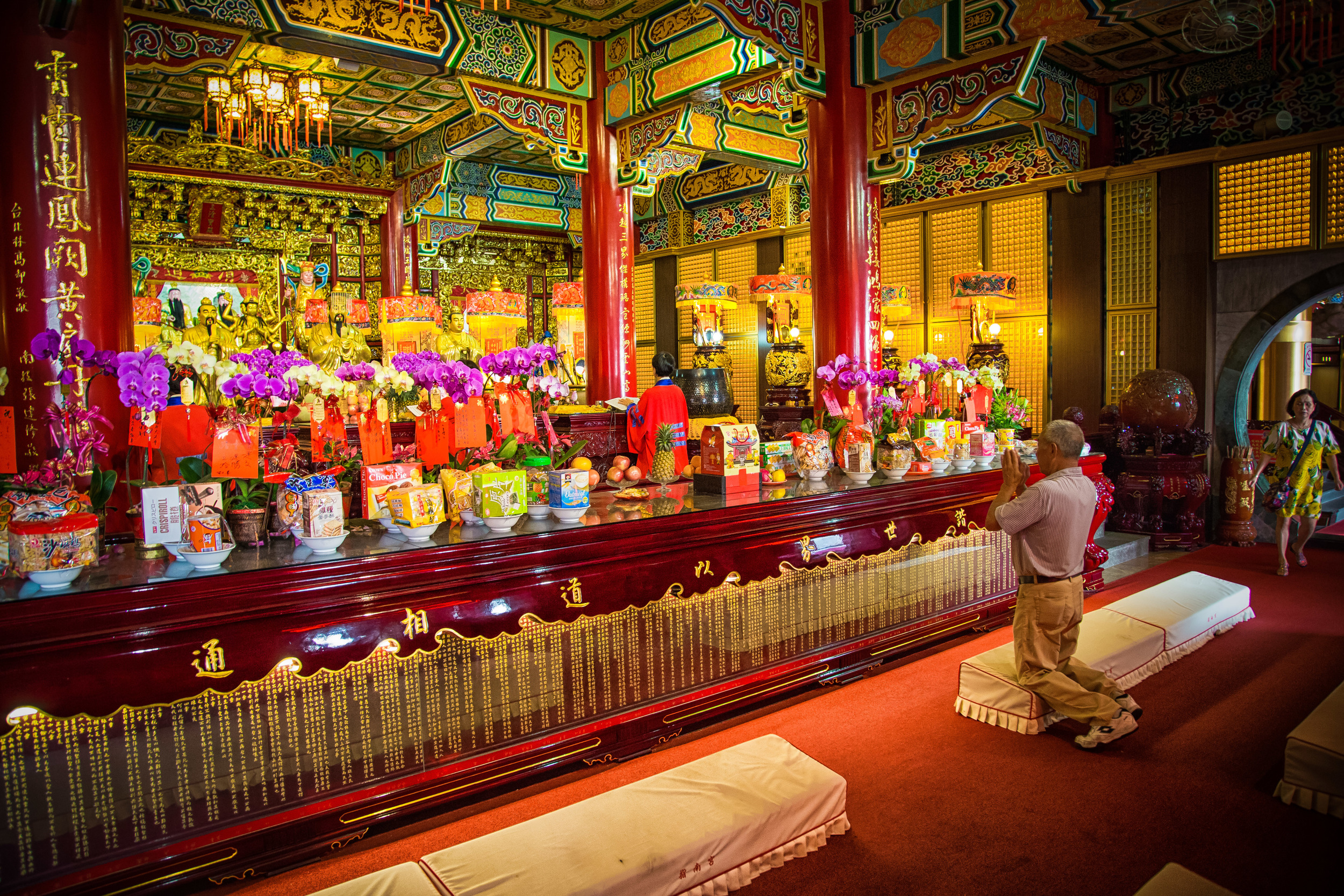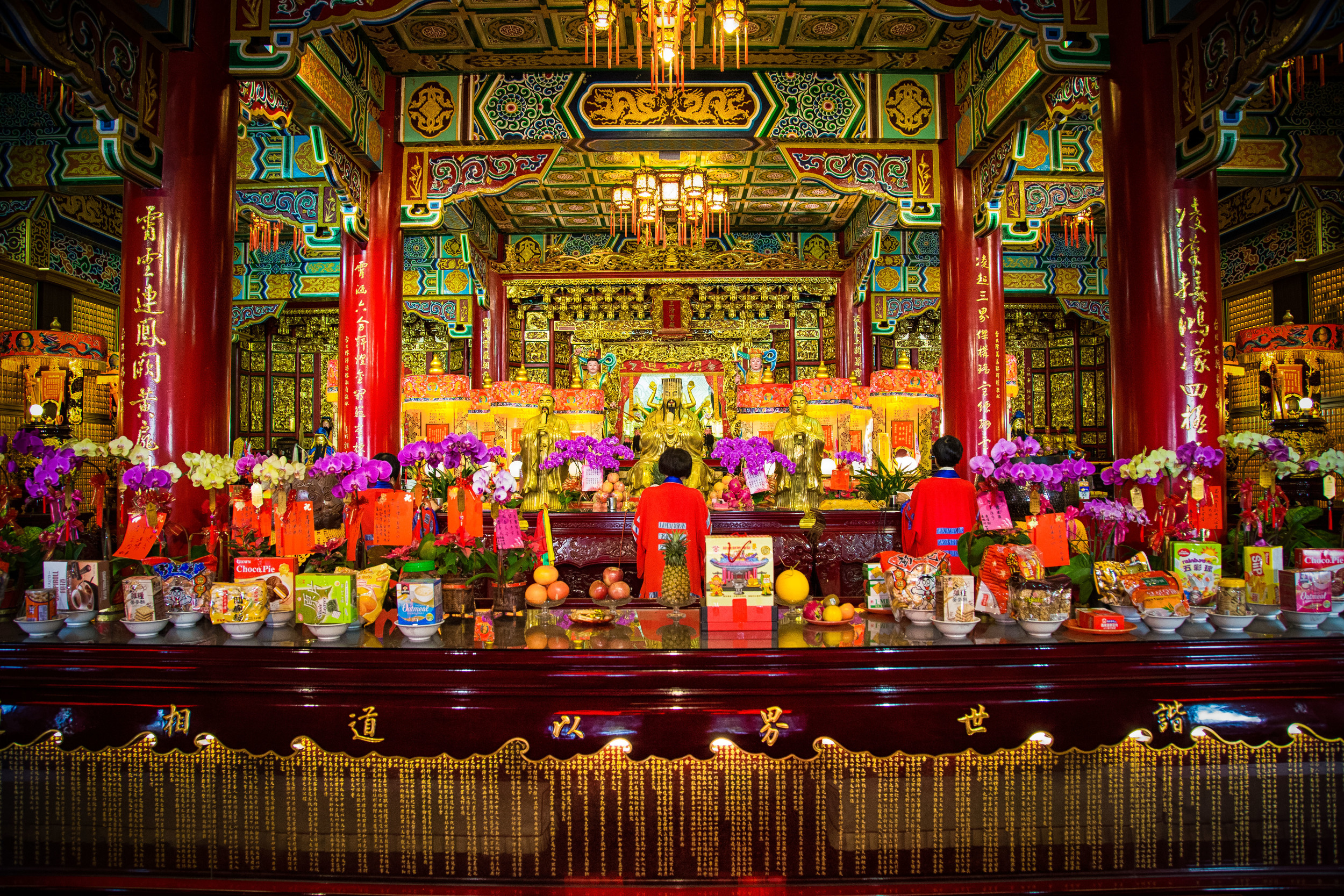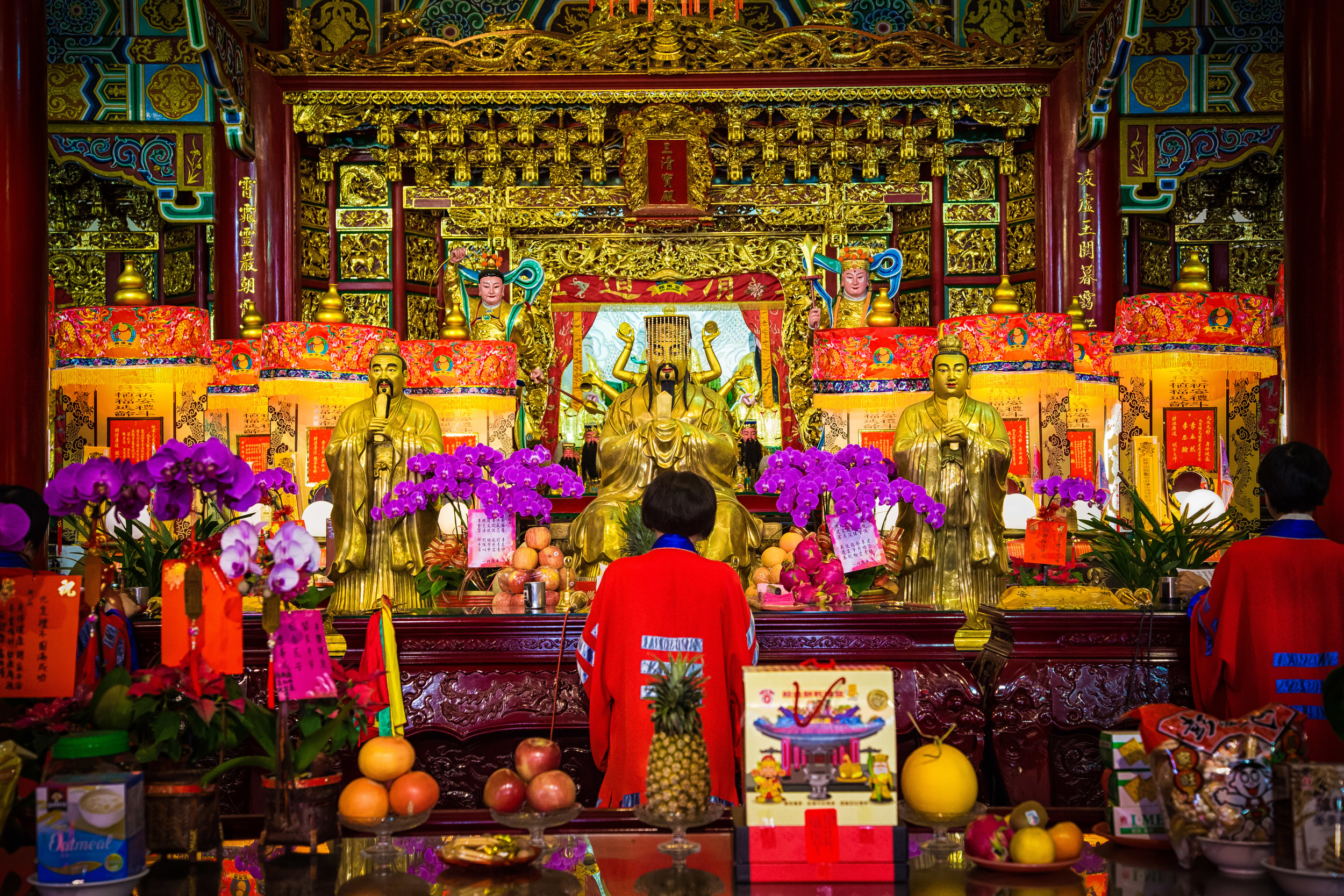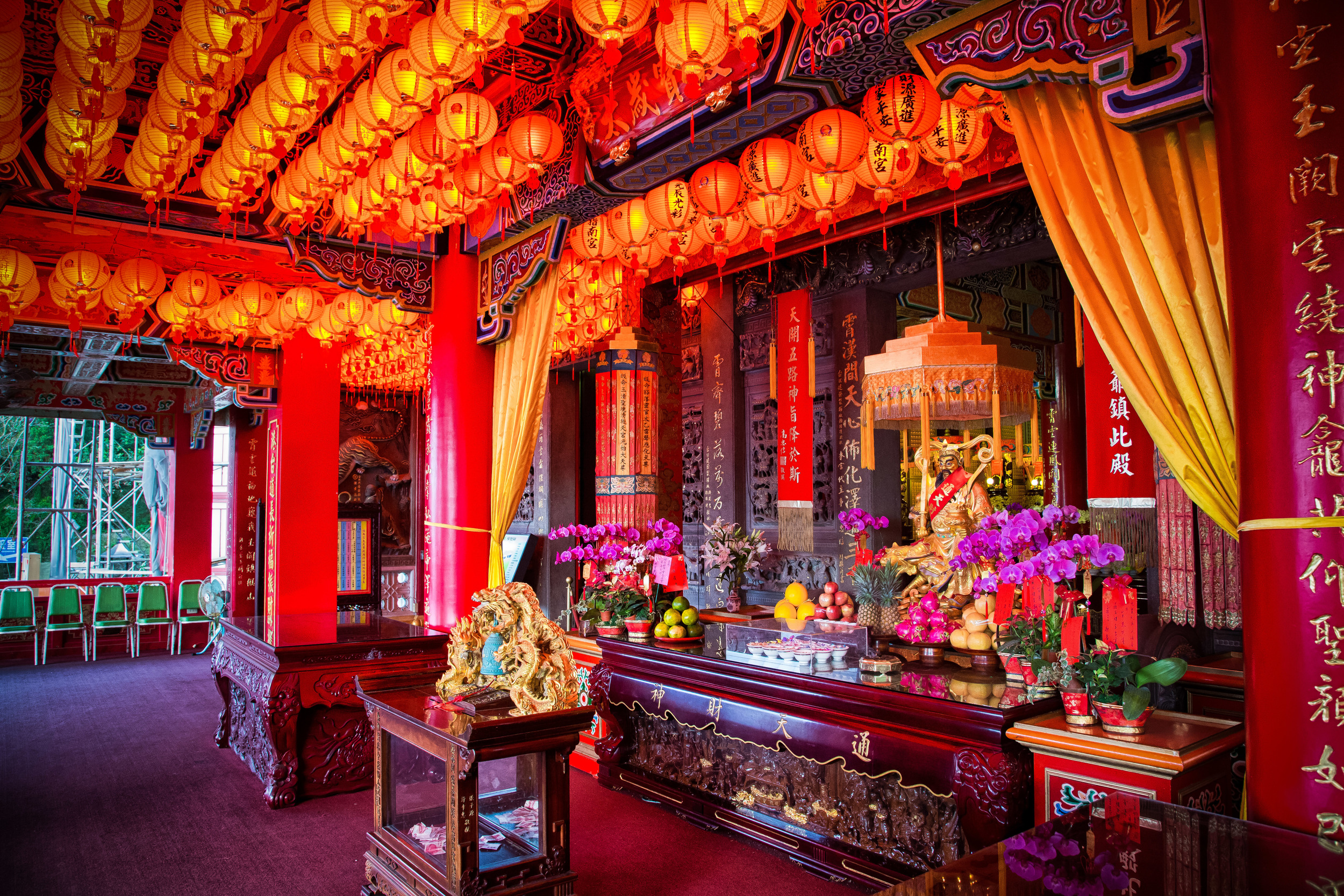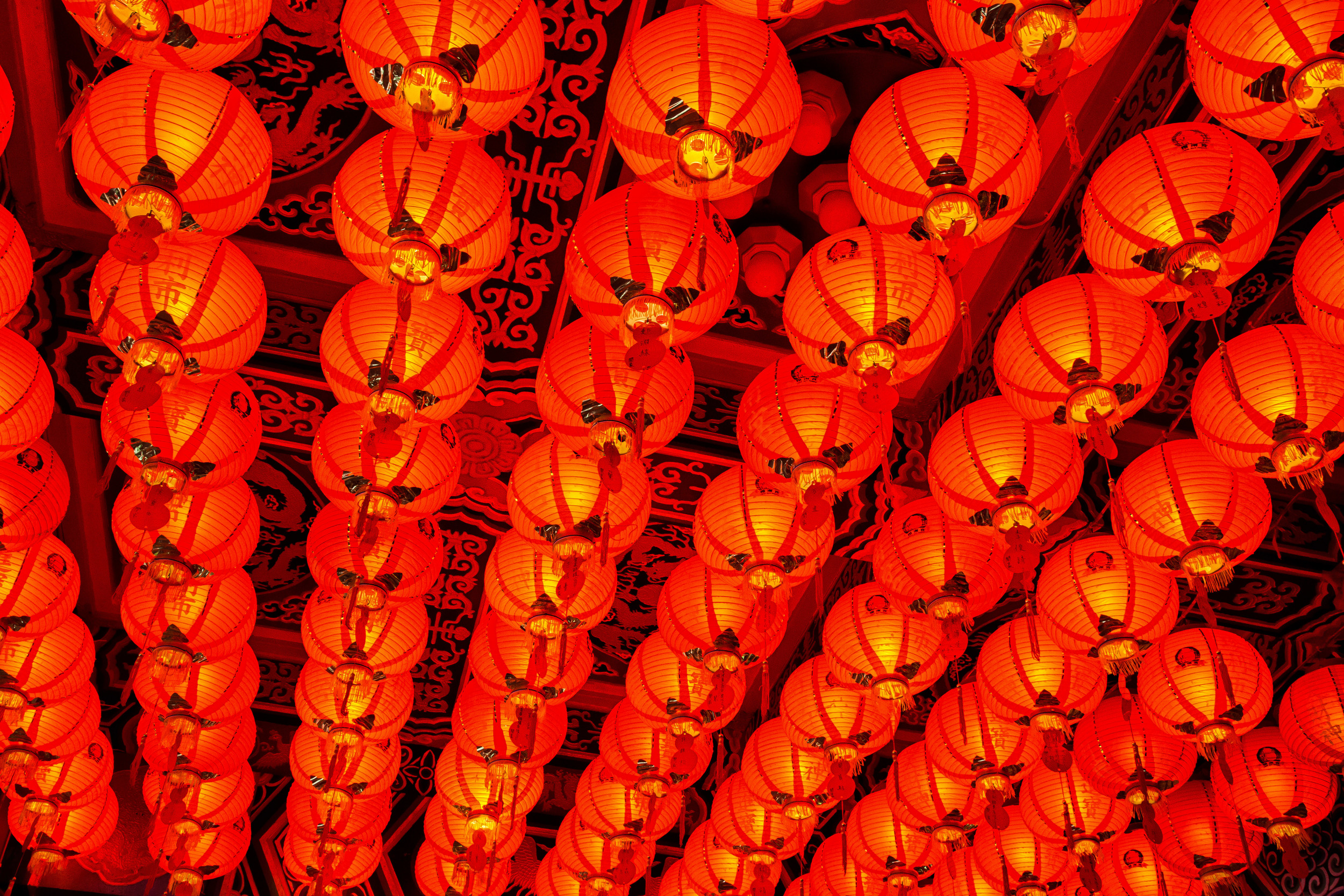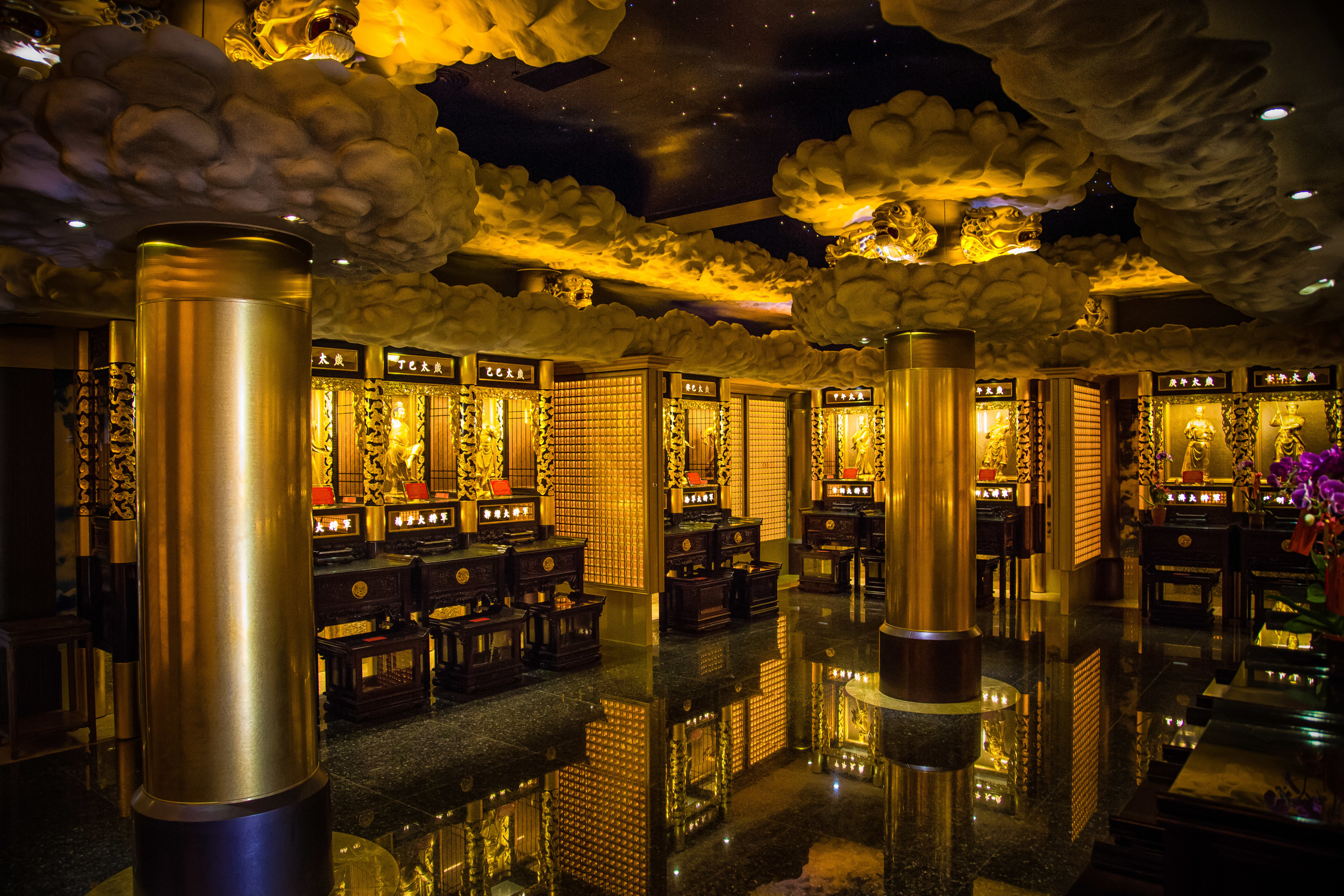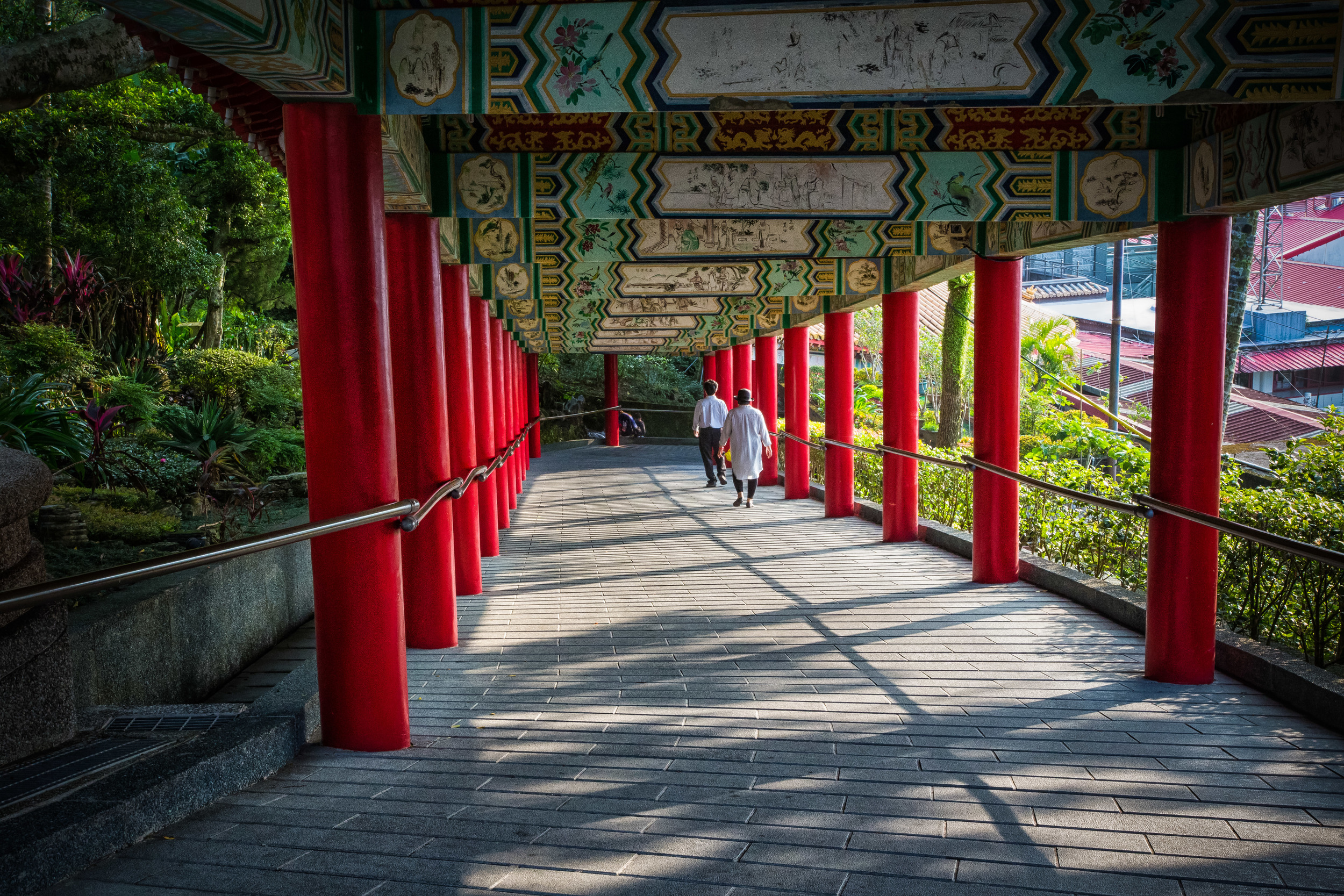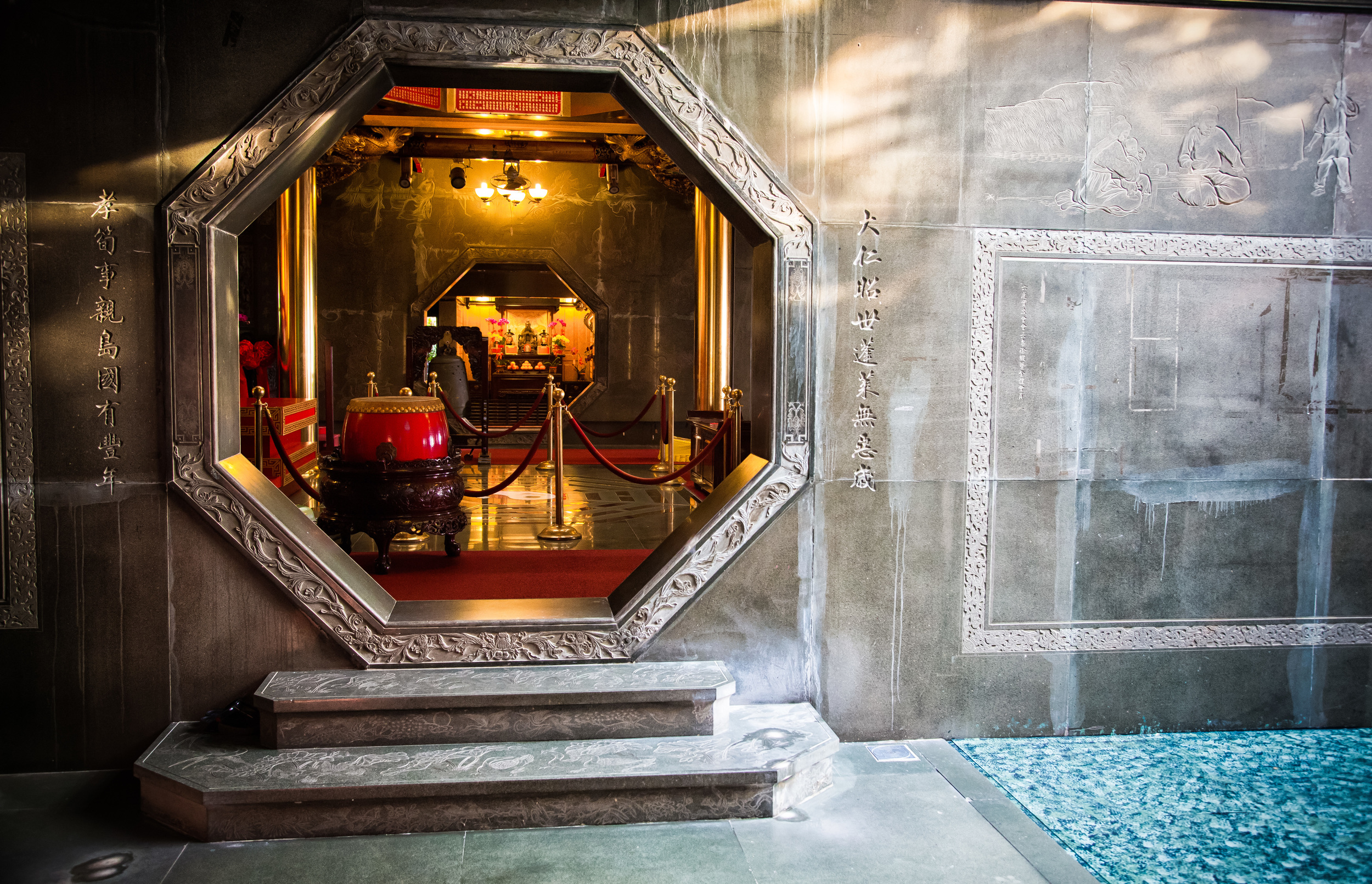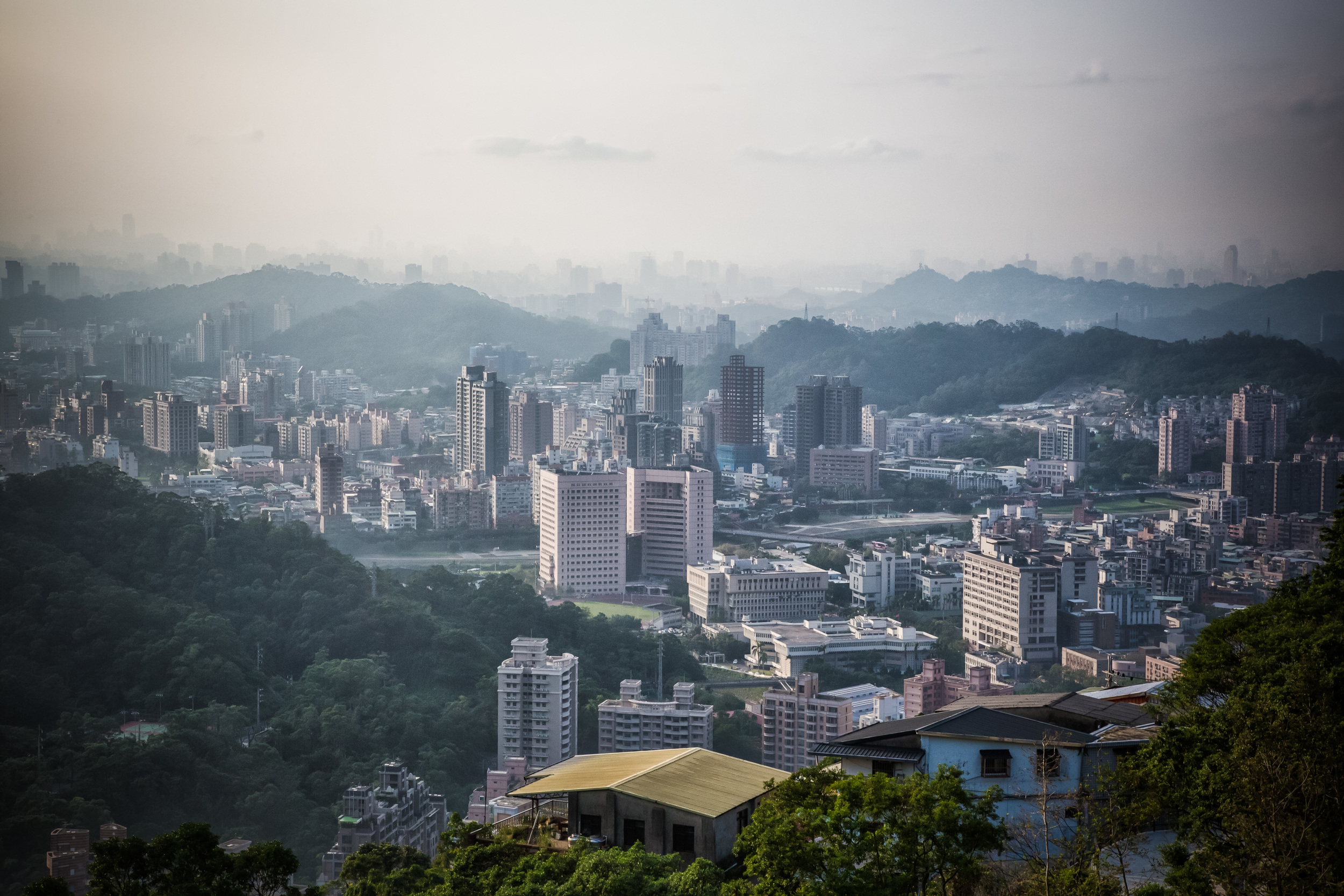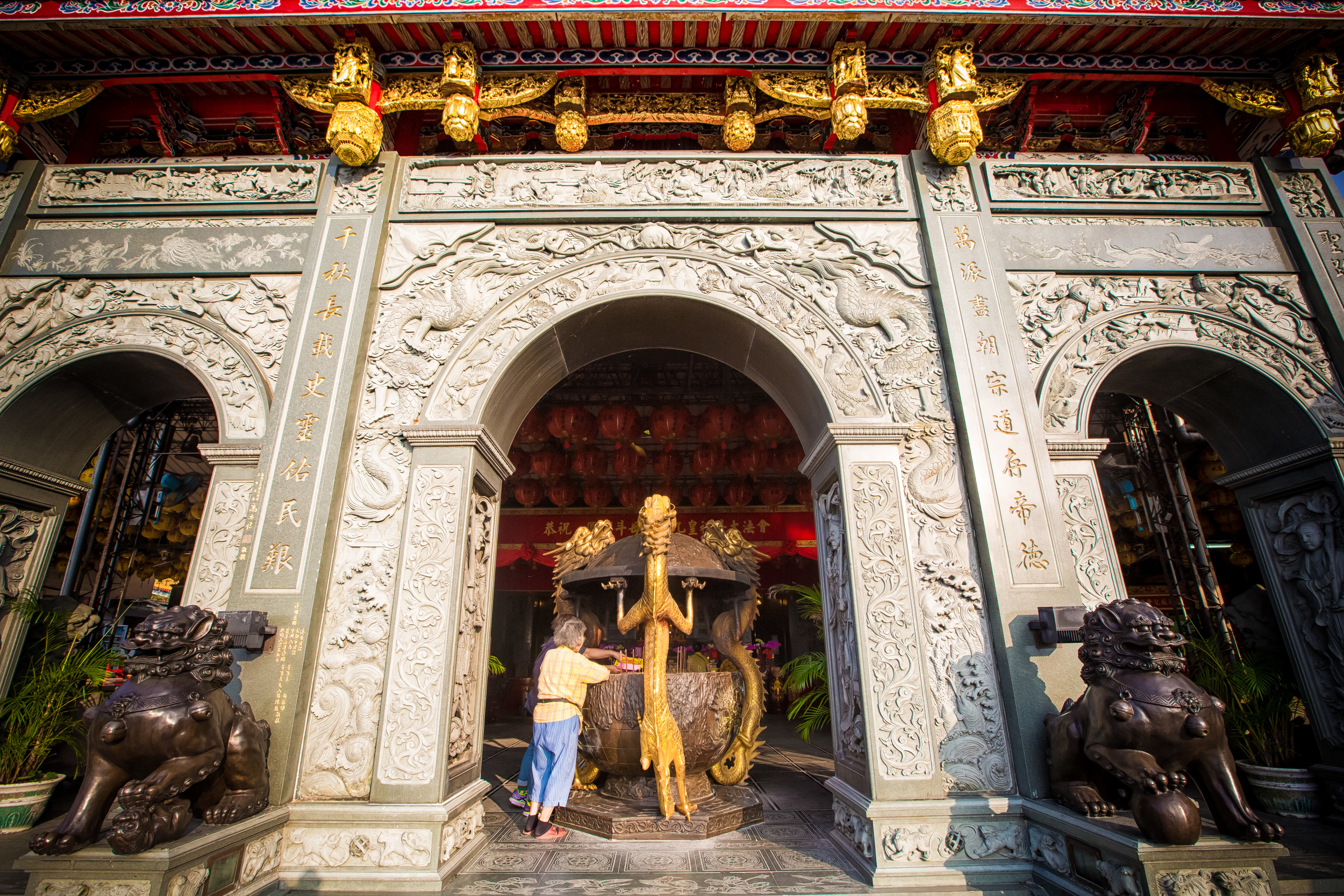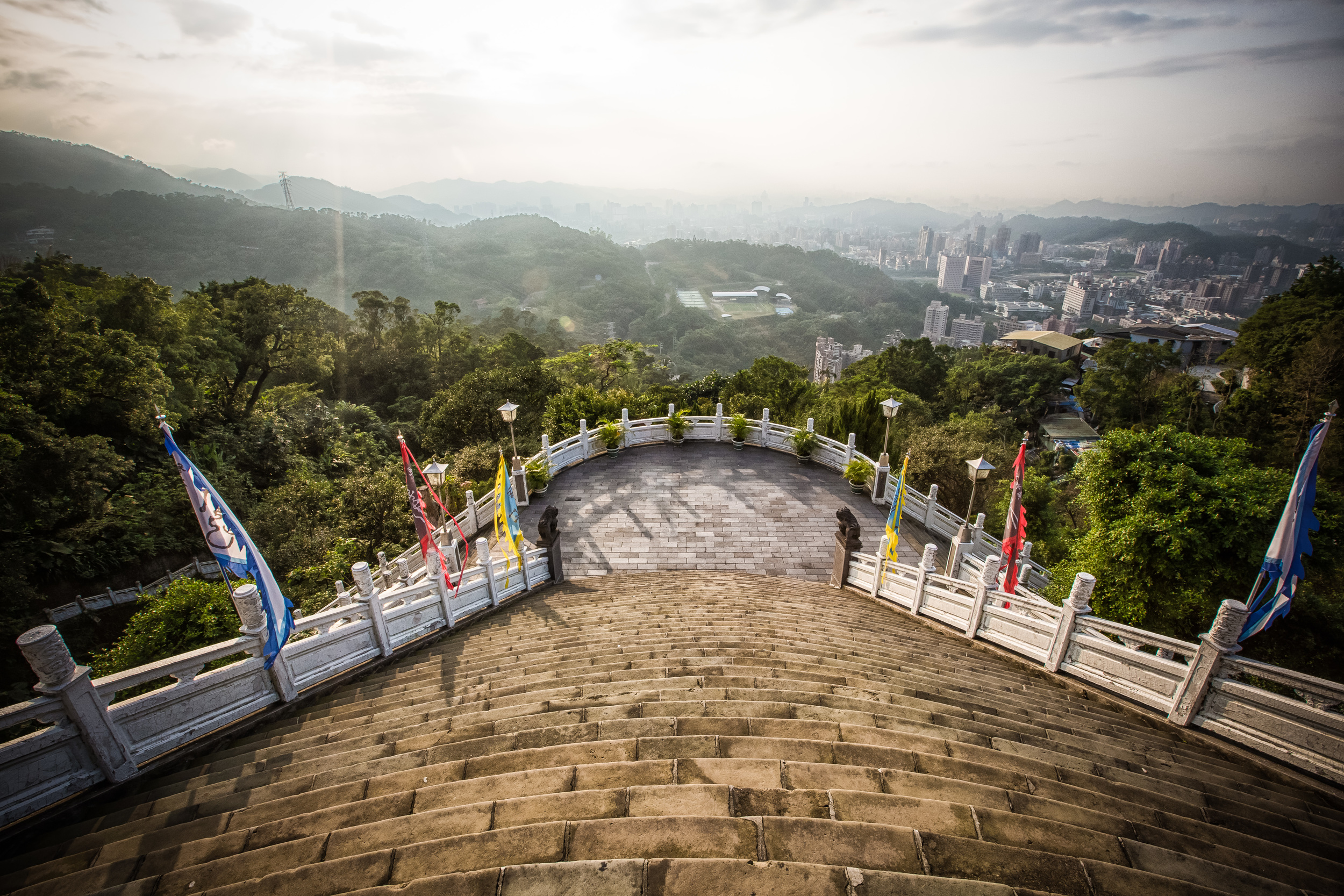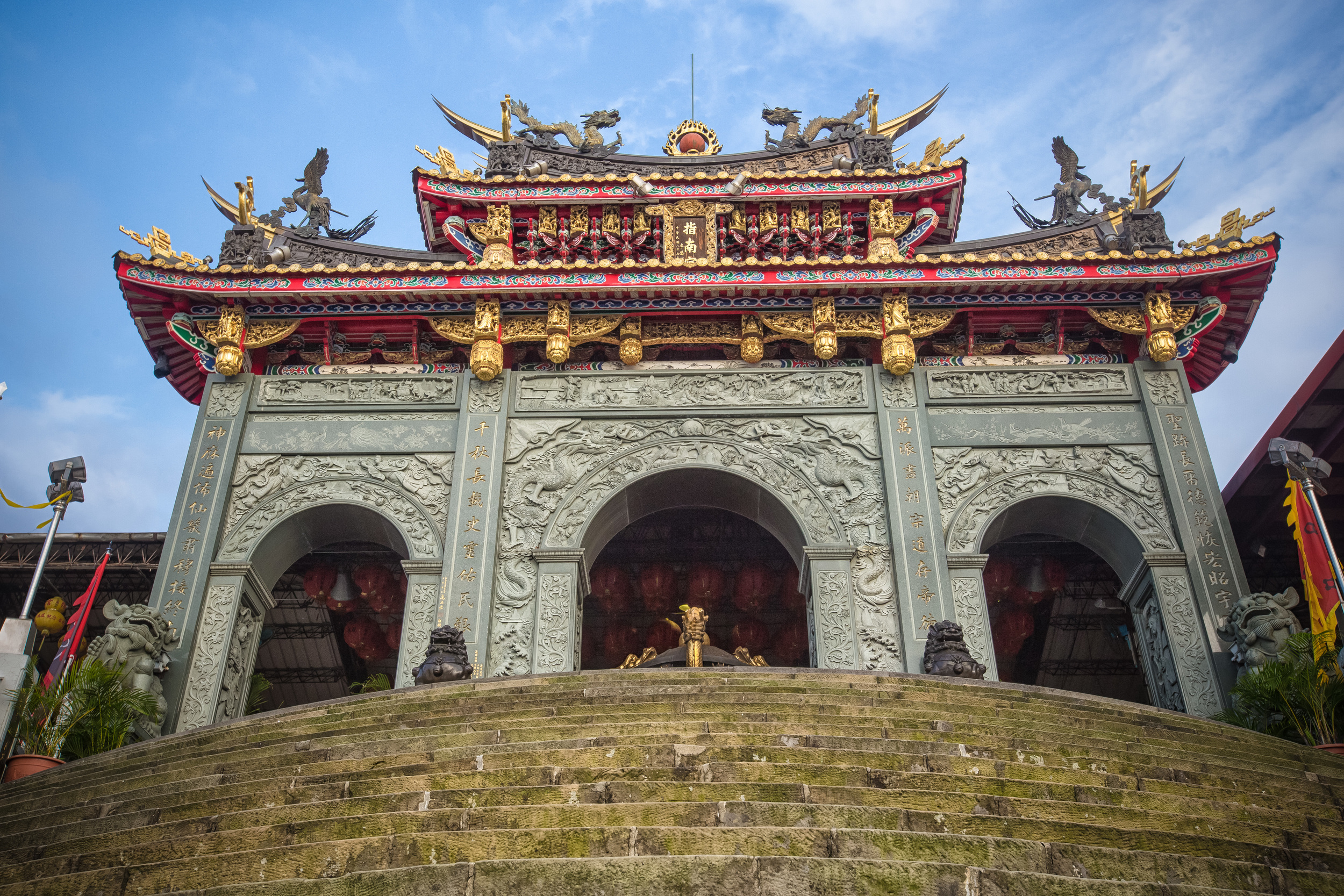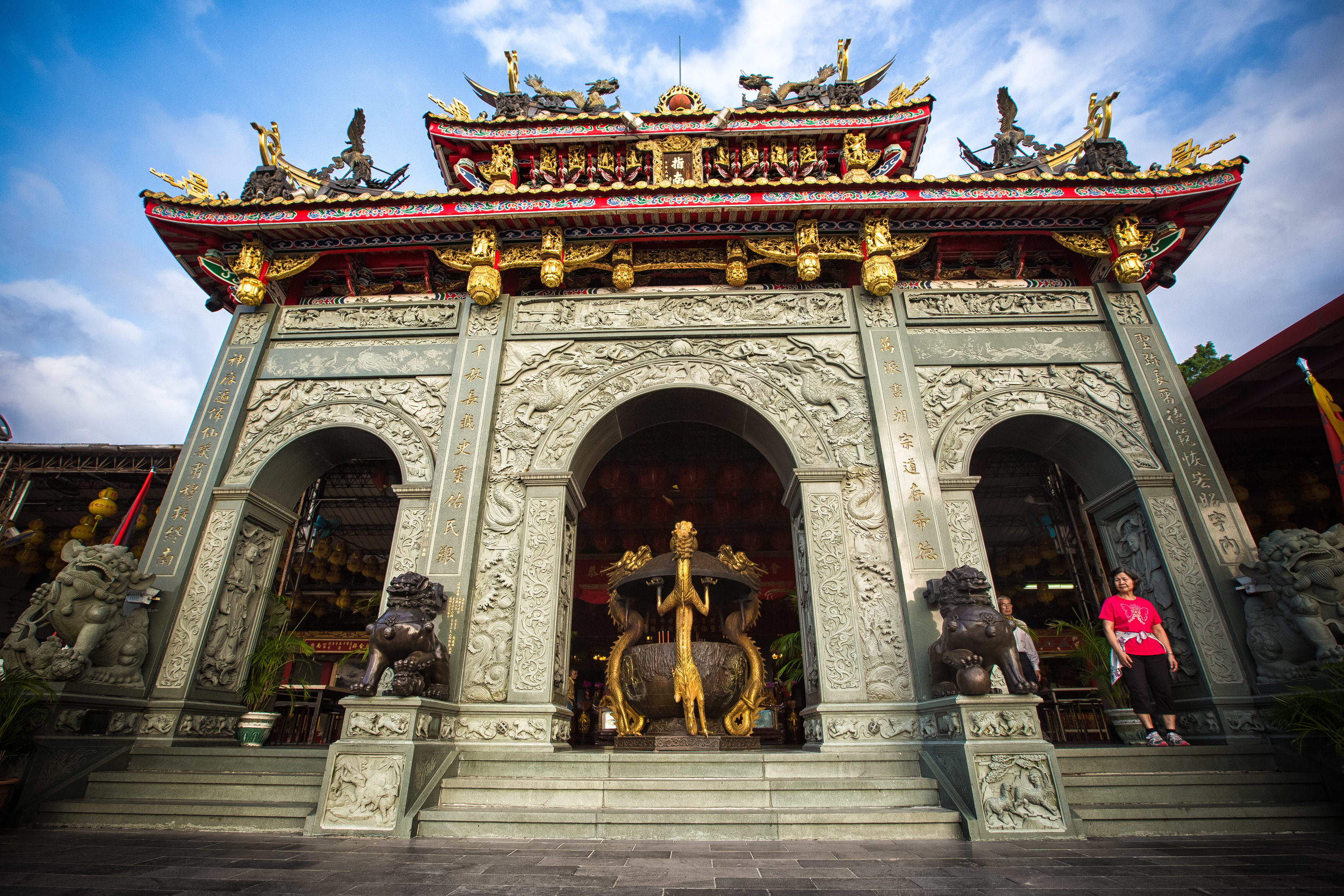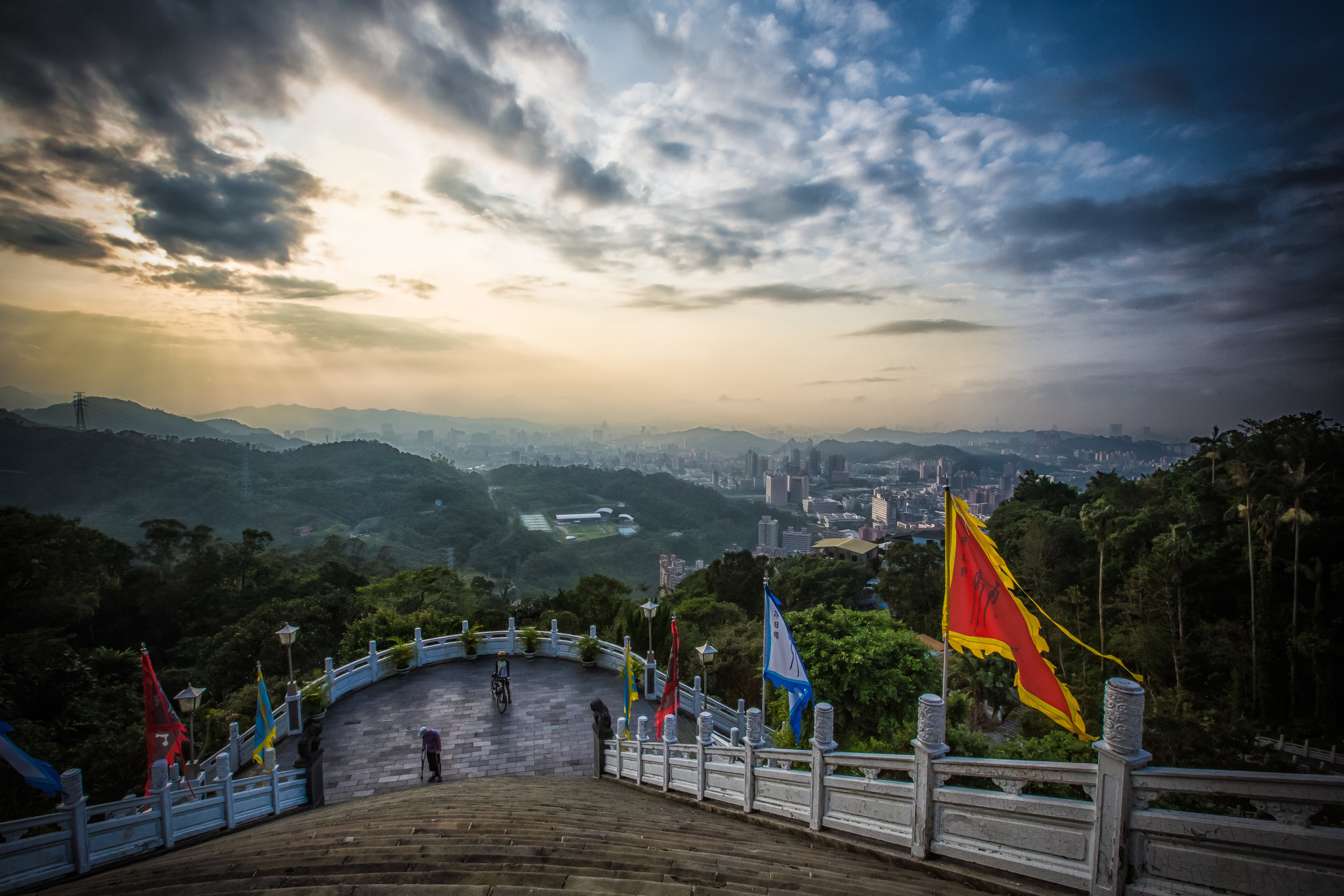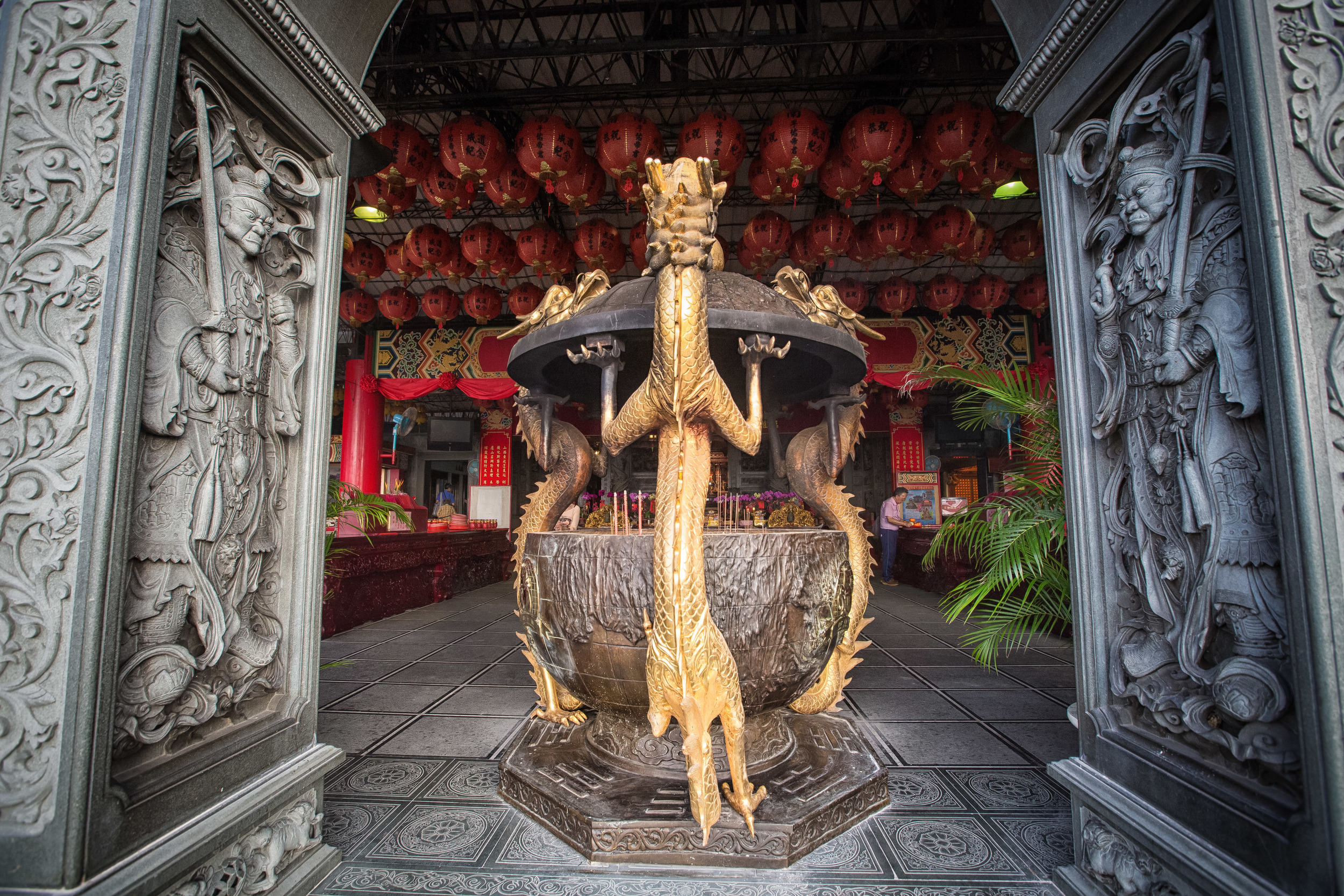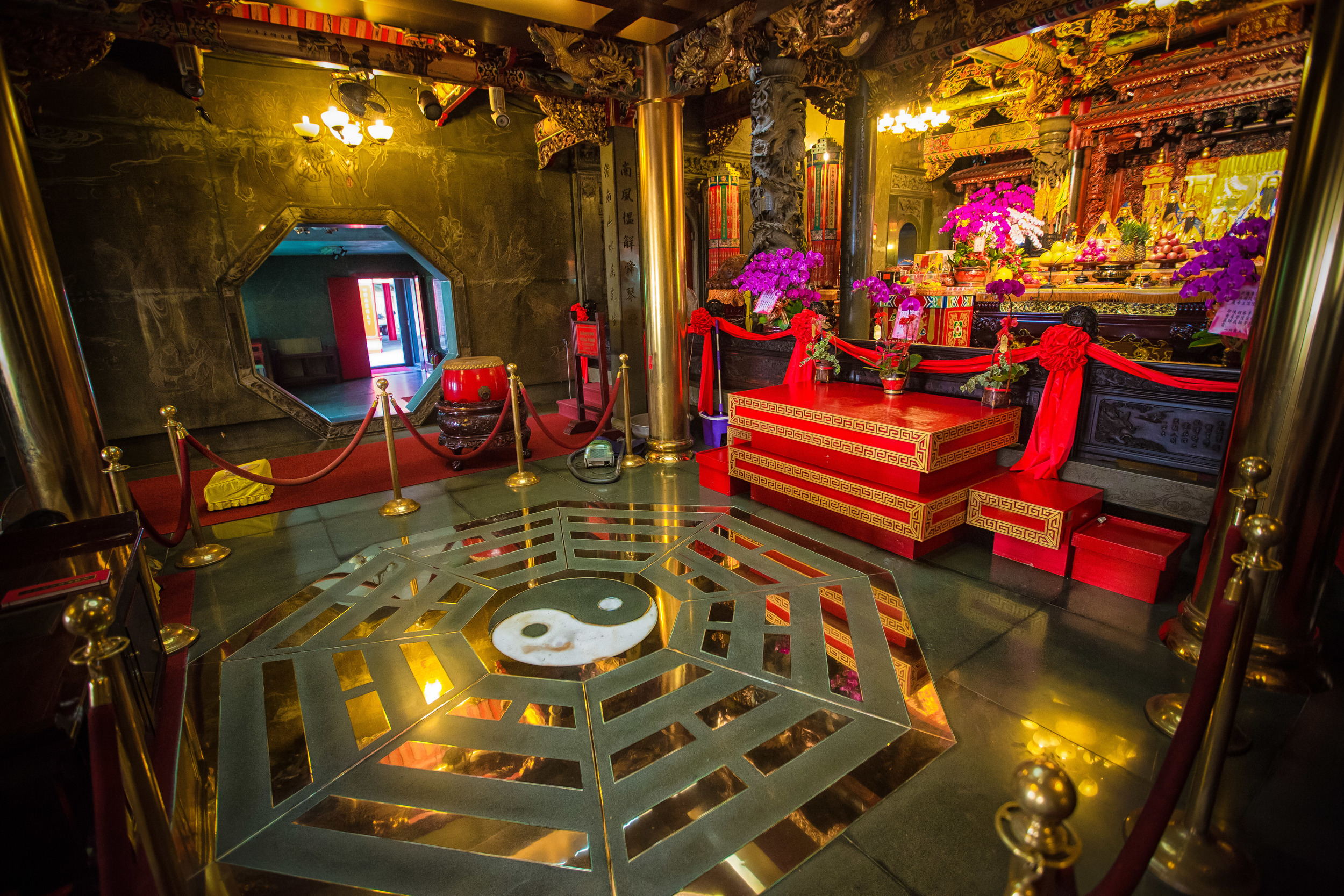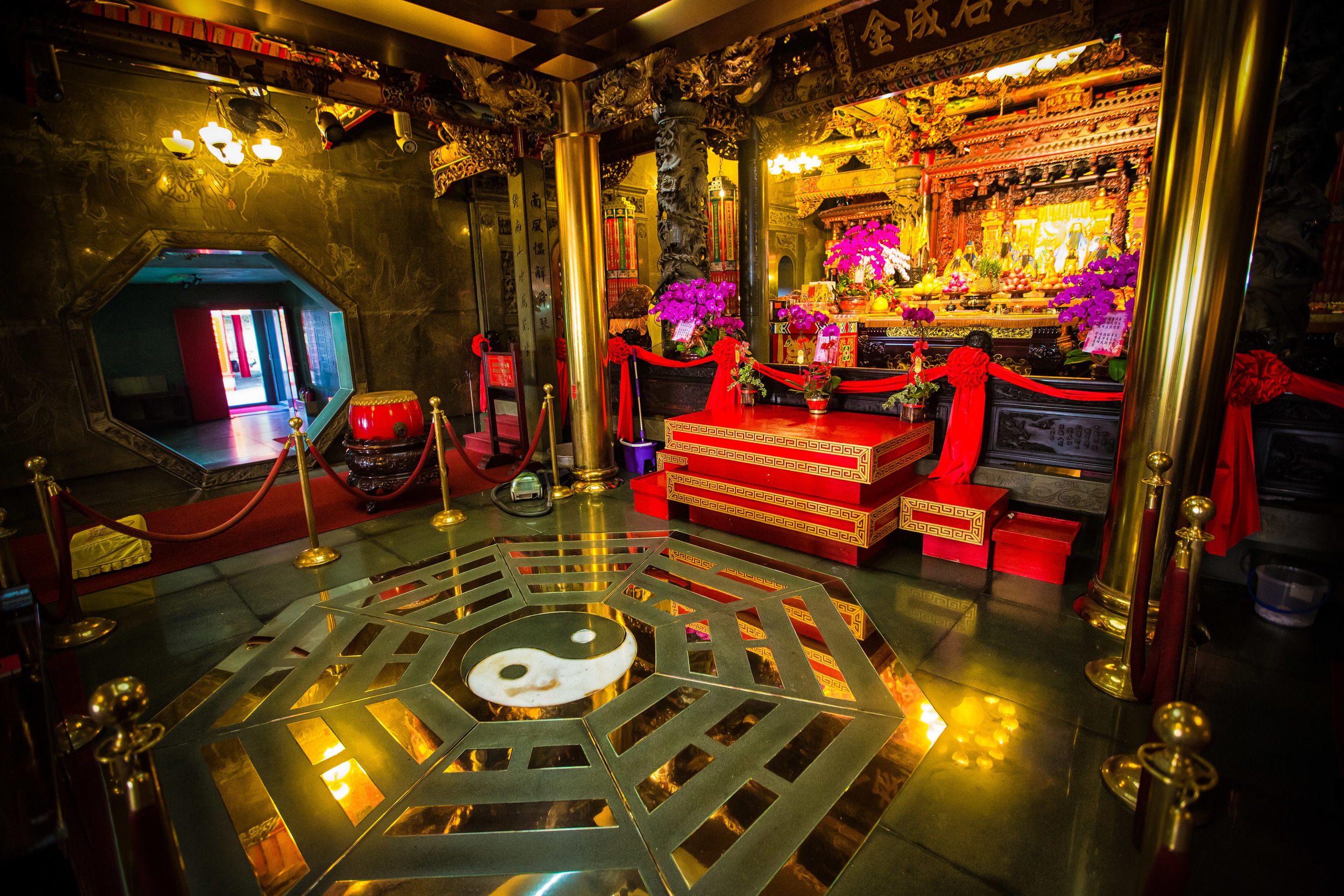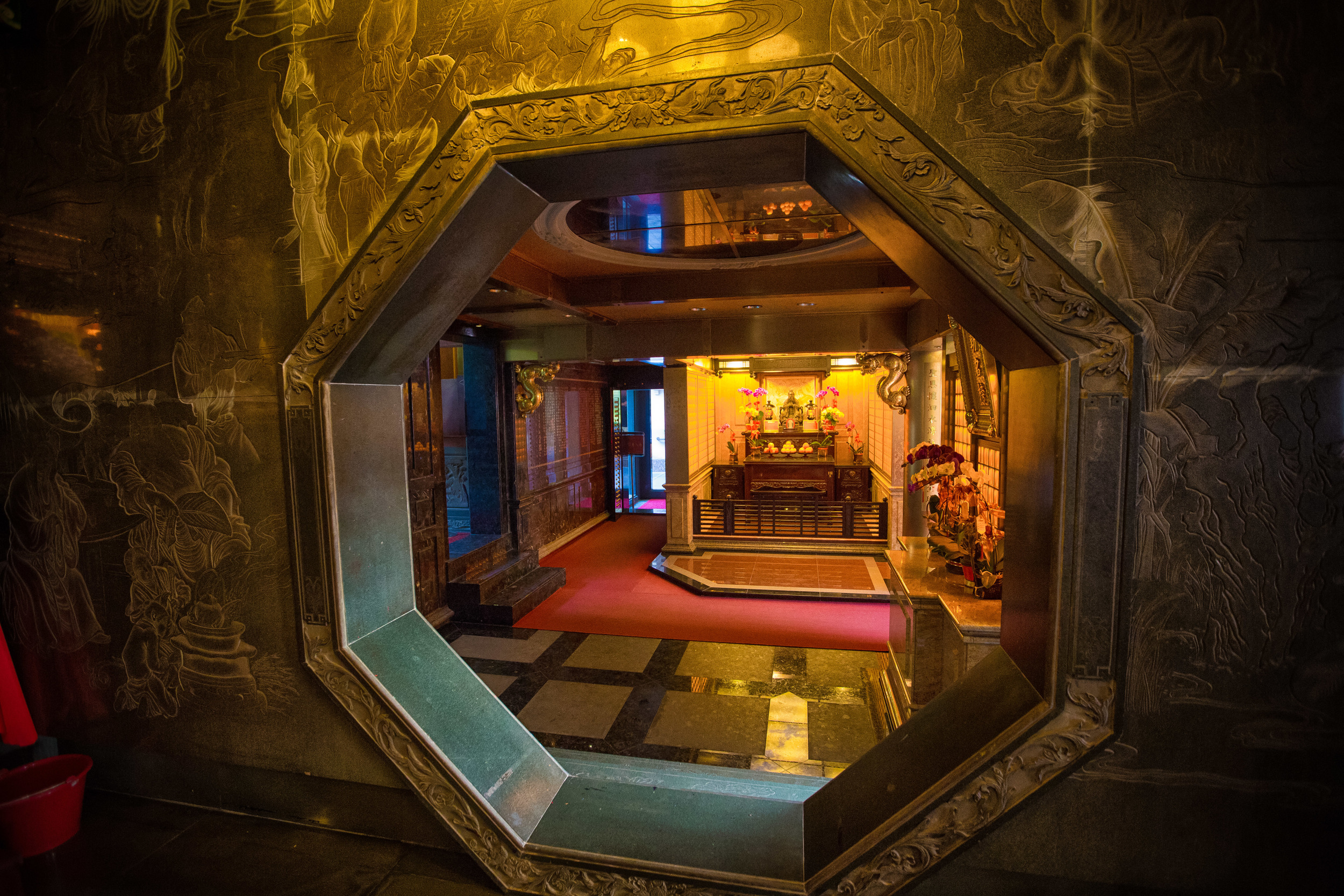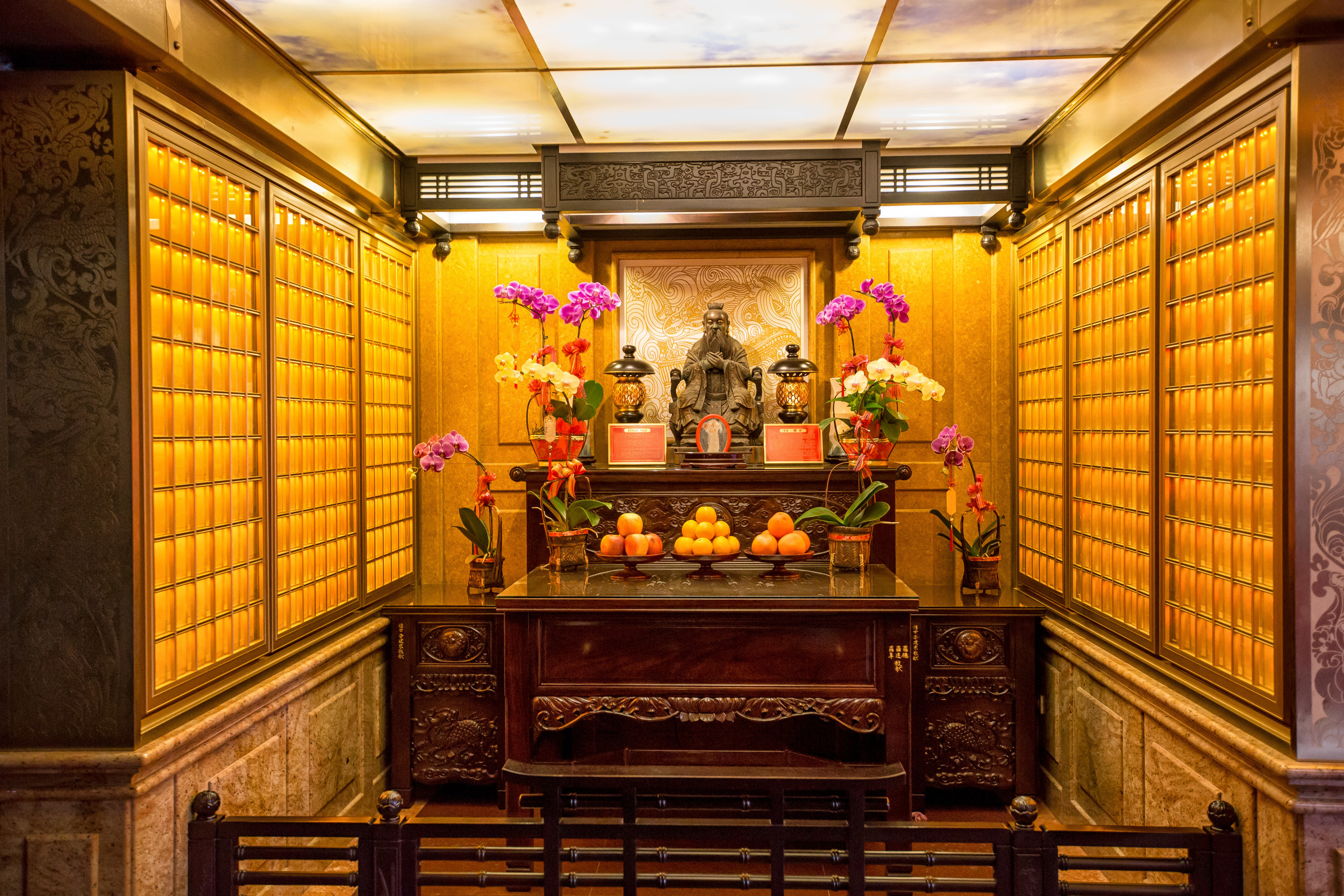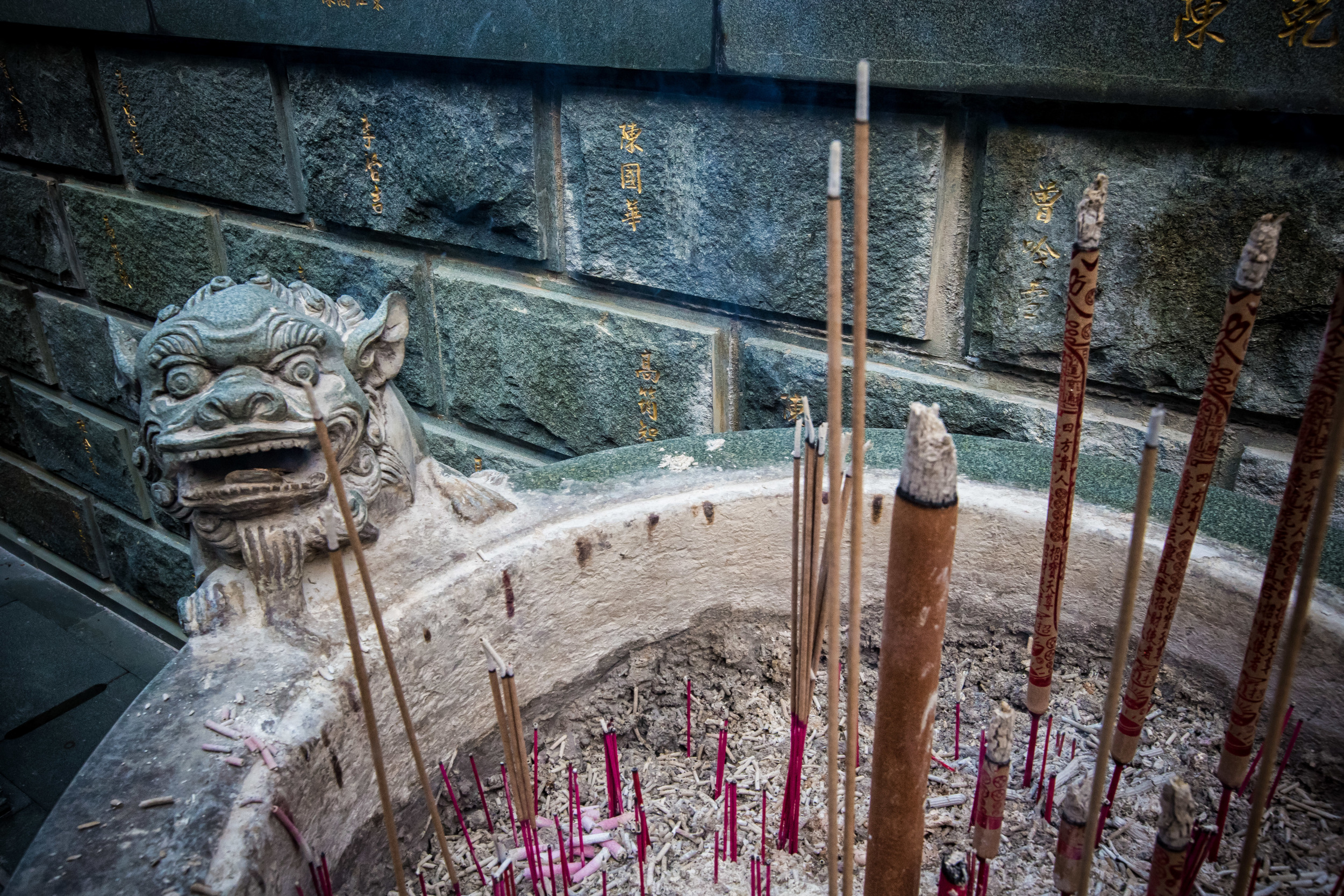The Qingshan King Ritual (青山靈安尊王) is an annual three-day temple festival held in the Monga district (艋舺/萬華) of Taipei and is used to celebrate the birth of the Taoist god Lin-An Chun Wang (靈安尊王) or the Qingshan King (青山王)
The Qingshan King is an important deity hailing from the Quanzhou (泉州) area of Fujian province in China, an area where a lot of the first Chinese immigrants of Taiwan originated hundreds of years ago.
Legend has it that when the Hokkien (閩南人) immigrants first arrived in Taiwan, there was a lot of sickness due to a plague that was ravaging the area. The Qingshan Temple (青山宮) was one of the few places unaffected and soon became a popular place for the pious residents of the area to pray for their continued health and safety.
The festival is held between October 20th-22nd (on the Lunar Calendar) and during the festival the temple followers parade the temple god around the district with his troops, oracles and generals to inspect the homes and businesses to eliminate evil spirits and suffering and to bring good luck to the locals.
The festival is one of the largest and liveliest temple festivals in Taipei and the entire Monga district looks forward to this special time of the year where residents will often celebrate into the late hours of the night.
I’m going to end 2015 with several posts dedicated to the Monga district of Taipei. This post will be split into two parts which will be followed by posts about the Qingshan Temple (青山宮), Longshan Temple (龍山寺) and then several street photography posts about the people of Monga.
I’m splitting this post up in an attempt to better explain the different aspects of the festival as well as to offer more context in terms of photos. I had a great time shooting this festival (even though I could only make it to one day of festivities) and I’ve had a lot of fun over the past few weeks hanging out in Monga which is truly one of Taipei’s most important districts in terms of history, culture and religion.
1. The Messenger (報馬仔)
The Qingshan king’s Messenger (報馬仔), pronounced "Bo-mê-á" in Taiwanese, is more or less the person who starts all the festivities. His duty is to approach the king and inform him that the time for the parade has come. He then leaves the temple beating his gong to find the best path for the king to inspect Bangka. In the old days the messenger used to bring an ox with him on his journey around the district, but these days the messenger will just wrap some food (usually Xian-Guang cakes 鹹光餅) around his body like a sash to represent the ox.
The Messenger is quite unique looking and actually looks like someone you’d see in a Japanese cartoon. He wears a bamboo hat, typically worn by farmers in the country. He also carries an umbrella on his back and walks around beating a gong. He wears glasses which represent his ability to judge right from wrong and he has a moustache in the shape of the Chinese number eight (八) which means he is responsible and trustworthy.
The man who performed the role of the Messenger this year was really interesting. He was elderly and one of my friends commented that he looked somewhat like the American actor Bryan Cranston (Breaking Bad.) What I found most interesting is that he was in incredible shape and looked like he could probably kick my butt!
2. The Spirit Medium / Oracle (乩童)
The Spirit Medium can also be referred to as a “shaman” or an “oracle” and plays an important role in the parade as one of the leaders. In Mandarin the Oracle is called a “jitong” (乩童) and in Taiwanese he is referred to as a “tâng-ki” (童乩)
An oracle is someone who usually at a young age (童) is believed to have been chosen by a particular god or spirit as a vehicle for divine interpretation (乩) which means they are able to answer supernatural questions.
When an Oracle is performing his or her duties they are said to be in a trance and completely under the control of forces within the spirit world which wish to communicate directly with humans. The role of the Oracle in the event is to communicate directly with the Qingshan King and confirm whether the time is ripe for him to venture out into the world. The oracle will enter a trance and perform several rituals and then will write down messages from the god.
The most difficult part for foreigners to understand when it comes to these Oracles is how they cause themselves bodily harm through self-flagellation beating themselves with swords, axes, and nail-studded clubs which cause them to have pretty terrible and bloody wounds on their backs.
These types of oracle rituals have lost a bit of their favour in modern Taiwan and are kind of on their way to becoming a thing of the past. Not many young people know or understand the role of a Taoist oracle and even some adults are hard pressed to explain what they do. It is quite interesting to see an oracle in action and over my decade of visiting temples I’ve only seen them in action a few times. This time I got to follow the oracle around for quite a bit to see what he was doing. I was able to get up and close to him to observe closely. It was quite interesting to say the least, but it seems quite strange to see someone walking around with a string of firecrackers wrapped around his body and having his friends light them. I guess I’m not really into inflicting pain on myself or others so it is still a bit hard to understand.
3. The Eight Generals (八家將)
The Eight Generals (八家將) are one of the coolest aspects of the festivities and also one of the most popular. It was really hard to get close to them because as soon as they appeared it meant that it was time for the parade to leave and there was a massive rush to see them.
The generals are regarded as bodyguards or attendants for temples of gods such as the Qingshan King, the City God (城隍爺), Matzu (媽祖), etc.
The group consists of eight officers and one young boy (引路童子) who serves as a guide and carries a gourd-looking bottle. Each of the generals carries a different weapon used for torture in ancient times and they are supposed to appear quite scary. There are four generals with green faces (lock generals) and another four with red faces (cangue generals)
For reference, the names of the generals who form the front line are Gan (甘爺), Liu (柳爺), Xie (謝爺), Fan (范爺) and the members of the back are Spring (春大神), Summer (夏大神), Autumn (秋大神) and Winter (冬大神.)
Each of the generals performs a specific role as a supernatural policeman of sorts. Some of them are in charge of investigating and catching evil spirits (lock generals) while others are in charge of judging them and dealing out punishment (cangue generals) to whatever evil supernatural forces which might be lurking in the district.
The general's primary duty during the Qingshan King Festival is to clear the area of evil spirits and as they walk through the streets of Bangka you are unlikely to see them smile as they are performing a very serious task before the Qingshan king makes his rounds - After all, it would be quite dumb to allow a king to walk around town without some sort of personal protection.
4. The Politician
The Eight Generals may have painted demon faces and carry around instruments used to torture people, but they aren't even remotely as scary as the "politician" which often rears its ugly head at these massive temple festivals. The politician often appears and causes a bit of annoyance with its smiles and arrogance. The 2015 version of the "politician" was none other than the Nationalist Party (國民黨) presidential candidate Eric Chu (朱立倫) who appeared for a short time (after arriving late and delaying the parade) to very little fanfare from the crowd (likely due to his abyssal polling numbers) and made a very short and uninspiring speech before making his way back to his heavenly palace.
I jest. Good luck in your continued role as mayor Eric Chu. 做好做滿!
I hope you enjoyed the first part of the festival. I hope to post part two in the next few days which will cover the Secret Night Patrol (暗訪), the Infernal Generals (大仙尪仔) and shots of the Qingshan King (青山王) himself.
If you have any questions or comments thus far, feel free to comment below!


